How to Plan Your First Trip to China 2024/2025 — 7 Easy Steps
From December 1st, 2023 to November 30th, 2024, visitors from France, Germany, Italy, Netherlands, Spain, Singapore, and Malaysia can stay in China for up to 15 days without a visa for travel, business, transit, or visiting friends and family.
Starting March 14th, travelers from Austria, Belgium, Hungary, Ireland, Luxembourg, and Switzerland can also enjoy this visa-free entry.
China, with its long history and rich geography, may be on your bucket list. It is also the top place to explore Far-Eastern elements and culture.
Below are seven easy steps for planning a first China tour using our first-hand knowledge, being based in China, and our experience creating over 100,000 custom-made China tours, the majority of which were for families and couples.

Content Preview
1. choose where to go, 2. decide how many days to stay, 3. consider when to travel to china, 4. consider your budget.
- 5. Take a Private Tour
6. Check Out Visa Policy
7. getting to/around china.
With our knowledge of China and feedback from our customers, we suggest you visit Beijing, Xi'an, and Shanghai for your first trip, extending it to Guilin and/or Chengdu if you have the time.
1) Beijing — Explore China's Imperial Past
As an imperial and modern capital of China, Beijing is a must-see, because it is home to many of the finest icons of China's medieval and recent past. It is also China's top gateway city .
The Great Wall of China and the Forbidden City are both must-see attractions, especially if you are interested in China's architectural marvels and dynastic history.
For a special experience and some private time, we can arrange a less-crowded sunset visit to the Great Wall with a romantic picnic for you.
If you are interested in Beijing's local lifestyle, a locally-guided walk through Beijing's hutongs with your children or husband/wife is highly recommended.
If you want to try some new things with kids, we recommend a family morning tai chi session , a local home visit, trying Chinese calligraphy, and playing with a Chinese yo-yo.
2) Shanghai — Explore Its Unique Blend of Old and New
If you want an intuitive sense of how China's recent past and present meet and collide, Shanghai is the place to go.
Hop on a ferry to cross the Huangpu River . You will see the historical architecture on the Bund as well as the modern skyscrapers opposite, giving you a distinctive contrast between modern life and the post-imperial past.
We have specially designed an in-depth Bund culture discovery walking tour for those who want to learn more interesting stories about the Bund and old Shanghai. See our 2-Day Shanghai Essence Tour itinerary.
If your schedule allows, extend your tour to Hangzhou or Suzhou to see water towns and classical Chinese gardens.
3) Xi'an — Discover China's Ancient Civilization
Xi'an is an excellent and interesting place to discover where the nation of China really began. China's first emperor, Qin Shi Huang, established the first capital of a united China there.
The Terracotta Warriors are definitely a must-see. We offer a more interesting and in-depth experience to learn more about the Terracotta Warriors: make a mini clay warrior with local artisans and visit their disappearing cave dwellings.
For couples and families, a hanfu costume experience in an ancient academy could be a highlight. A bike ride on the 600-year-old city wall is also great to do with kids.
All our tours can be adjusted based on your needs. Just contact us .
4) Guilin — A Relaxing Escape with Picturesque Scenery and Minority Culture
First-timers love Guilin for its beautiful landscapes and relaxing places to escape from the cities — it is a true masterpiece of classic rural China .
A Li River cruise is the best way to enjoy karst peaks combined sublimely with the Li River .
Yangshuo and Longsheng, two counties next to the city of Guilin, offer most of Guilin's top highlights.
Yangshuo is a place where children can put down their phones and iPads and still be well entertained… by cycling around the idyllic countryside and even experiencing the life and work of a Chinese farmer.
Yangshuo also offers a natural romantic atmosphere for couples. A romantic riverside candlelit dinner set in a mountain retreat garden could be a great way to celebrate your 20th, 30th, 40th, etc. anniversary. Contact us to design a special time for you.
If you are interested in minority culture , the Longji Rice Terraces in Longsheng are really a highlight — both for enjoying the magnificent tiered fields and for experiencing the world of the Zhuang and Yao minorities.
- 5-Day Dynamic Guilin and Yangshuo Tour — Best for Summer Vacations
- 11-Day Family Happiness — Beijing–Xi'an–Guilin/Yangshuo–Shanghai
5) Chengdu — Have a Close Encounter with Pandas
Chengdu's giant pandas are for many the icing on the cake, the finishing touch to a China must-do list.
An even more special experience would be to have a close encounter with pandas by taking part in our giant panda volunteer program — cleaning the glass of their enclosures, making panda food, watching a panda eat it, and more.
Chengdu is also famous for delicious Sichuan food like kung pao chicken and spicy hotpot. A food hunting tour is the best way to taste the delicious specialties of Chengdu.
If you are interested in cooking, you can try cooking the most authentic Sichuan cuisine with a local chef.
After a long journey to get to China, you probably won't want to just scratch the surface of China and just take snapshots with the landmark attractions.
We suggest you take at least a week for your first trip to see a spectrum of the highlights in the top three cities: Beijing (3–4 days), Xi'an (2 days), and Shanghai (1–2 days). See our 8-Day Beijing–Xi'an–Shanghai Tour for inspiration.
To discover more of China, like charming Guilin and lovely Chengdu pandas, you would need a few more days. See our 11-Day Classic Wonders tour of Beijing, Xi'an, Guilin/Yangshuo, and Shanghai. See How Long to Spend in China: Itineraries from 1 Week to 1 Month
Tibet is also open again for international visitors now [March 2023]. If you want to visit this pure land, you may need 3 to 5 more days. See our 2-Week Private Tour of Beijing, Xi'an, Lhasa, and Shanghai .
All our tours can be adjusted based on your interests, travel time, group size, and other needs. Just contact us .
Or get ideas from our:
- How to Spend 10 Days in China (5 Best Options & Costs)
- 2 Weeks in China: 3 Top Itinerary Ideas for Couples and Families
- How to Spend 3 Weeks in China (Best 3 Options & Costs)
China's cultural and historical attractions are good for a visit all year round. Things to do in Beijing, Xi'an, and Shanghai are seldom affected by the seasons.
Spring (April–May) and autumn (September–October) are generally the most comfortable and recommended times for a China tour. They are neither too hot nor too cold, but fall is generally drier and warmer than spring.
A more ideal travel time for you could be March and early April or September when there are smaller crowds, favorable prices, and still good weather.
China is a good summer holiday destination too. There are not many rainy days in summer. It rarely rains continuously for a whole day, with rain coming in less and less frequent downpours as the summer draws on.
It can get a little hot in summer, but air conditioning and expert arrangements would help you avoid the heat as much as possible.
You can find more detailed tips on Best Times to Travel to China .
Traveling in China is not very expensive. The biggest cost could be international airfares. The cost of airfares from the US or Europe to China varies a lot depending on when you fly and which airline you use, from around US$1,200 to US$3,000 for an economy round trip.
The peak tourist times in China fall on the first weeks of May and October (China's two golden weeks), the summer holidays, and the Christmas and New Year holidays.
The biggest price difference between the off and peak seasons is in the price of hotels and airfares. Prices in peak season can go up by 50 to 100%.
For a private tour, the average cost per day is about US$220–350 per person, including flights/trains within China, 4- or 5-star hotels, lunches, attractions, guides, and private transport.
If you travel in the peak season, book at least 2 or 3 months in advance. When booking with us, you'll receive a 100% refund of any payments made to China Highlights if you cancel up to three weeks before departure ( more details here⇒ ).
5. We Believe Private and Tailor-Made Is Best
A private tour is recommended for your first trip to China.
If you don't want to visit the Great Wall of China with a coach-load of 40 people and perhaps only have 20 minutes on the wall and so on, a private and tailor-made tour is definitely the better choice.
With our private tours, you would have much more personal choice in how your tour goes. You could have more hand-picked and interactive experiences, like walking on the "wild" untouched Great Wall or visiting a local family with your own local guide.
With private guiding and transport, we would maximize your time. You could focus on the sightseeing you want to do, skipping what's not of interest and the long queues in the most crowded attractions.
Just contact us if you would like a tailor-made private trip to China. We also offer economical, but still high-class and uncrowded, small group tours.
Discover real reviews of Highlights Travel Family 's best-rated service across trusted platforms.
Visitors from most countries need to apply for a tourist visa (L visa) to visit China. We recommended that you apply for the visa one or two months before the intended travel date.
When booking with us, we would provide the invitation letter that you would need for a tourist visa application.
If you do not have a Chinese visa, you could use the 144-hour visa-free-transit policy to visit China.
From December 1st, 2023 to November 30th, 2024, travelers from France, Germany, Italy, Netherlands, Spain, and Malaysia can enjoy a 15-day visa-free entry to China for tourism, business, and visiting friends and relatives in China.
Whether you want to visit China via visa or visa-free, we can help you plan a trip including entry formalities. Feel free to contact us .
Flights from all countries to China have resumed, though maybe not yet at pre-pandemic frequency. At present, there are one or two direct flights a week from New York to Shanghai, Los Angeles to Beijing, Seattle to Shanghai, London to Guangzhou, etc.
There are also many flight options with stopovers that are more frequent and affordable.
Beijing and Shanghai are the top gateway cities for international flights. Most customers chose them.
Flights and high-speed trains are the best and fastest ways to travel intercity in most of China. Booking a private tour with us, we will arrange your transportation within China and provide worry-free and comfortable private transfers.
Popular China Tours for 2024/2025
Our private tours are designed to be the most convenient and fulfilling option for your trip to China. We would create an itinerary according to your flight times, interests, and any other requirements.
Just contact us and we'll create your ideal China trip . Our consultants will listen to and answer your inquiries carefully and promptly and prepare the best tour plan for you.
Here are some popular options that you could base your trip on:
- 8-Day Beijing–Xi'an–Shanghai Highlights Tour — the classic Golden Triangle trip
- 11-Day Beijing–Xi'an–Guilin–Shanghai — our top itinerary for families
- 2-Week Beijing – Xi'an – Chengdu – Yangtze Cruise – Shanghai Tour — the choice for panda fans and cruise fans
You Might Like to Read
- How to Plan a Trip to China and Thailand
- China Visa-Free Itineraries to Beijing, Shanghai, Hangzhou...
- Top 10 Unique Experiences in China You Won't Miss
- 13-Day A Broad Taste of China
- 9-Day Beyond the Golden Triangle
- Best China Tours 2024/2025: Top Tours for First & Return Trips
- 14-Day China Natural Wonders Discovery
- 15 Best Places to Visit in China (2024)
- Best (& Worst) Times to Visit China, Travel Tips (2024/2025)
- How to Plan a 10-Day Itinerary in China (Best 5 Options)
- 8 Days in China: Top 15 Tours and Itineraries (2024/2025)
- China Weather in January 2024: Enjoy Less-Crowded Traveling
- China Weather in February 2024: Places to Go, Costs, and Crowds
- China Weather in March 2024: Destinations, Crowds, and Costs
- China Weather in April 2024: Where to Go (Smart Pre-Season Pick)
- China Weather in May 2024: Where to Go, Crowds, and Costs
- China Weather in June 2024: How to Benefit from the Rainy Season
- China Weather in July 2024: How to Avoid Heat and Crowds
- China Weather in August 2024: Weather Tips & Where to Go
- China Weather in September 2024: Weather Tips & Where to Go
- China Weather in October 2024: Where to Go, Crowds, and Costs
- China Weather in November 2024: Places to Go & Crowds
- China Weather in December 2024: Places to Go and Crowds
Get Inspired with Some Popular Itineraries
More travel ideas and inspiration, sign up to our newsletter.
Be the first to receive exciting updates, exclusive promotions, and valuable travel tips from our team of experts.
Why China Highlights
Where can we take you today.
- Southeast Asia
- Japan, South Korea
- India, Nepal, Bhutan, and Sri lanka
- Central Asia
- Middle East
- African Safari
- Travel Agents
- Loyalty & Referral Program
- Privacy Policy
Address: Building 6, Chuangyi Business Park, 70 Qilidian Road, Guilin, Guangxi, 541004, China

TRAVEL to CHINA – Tips and Information Guide for 2024
Everything you need to know about planning travel to China in our comprehensive destination guide.
From hiking the Great Wall of China to conquering your fear of heights at the highest glass bridge in the world, these are just some of the reasons why you should travel to China.
China is one of the most amazing countries in the world that is deservedly on nearly every traveller’s bucket list.
There aren’t that many countries that possess such various geographical climates, rich biodiversity, stunning landscapes and culture that persisted as the result of over 4,000 years of accumulated historical heritage.
Whether you want to roam its markets or its mountains and jungles, China has something to offer for everyone.
This country boasts in the diversity in its cuisine in addition to that of its languages, people, climate regions and biodiversity.
When you visit China you will be thoroughly amazed that the diet and culinary options vary from region to region.
This in itself gives you more than enough reason to visit China from one end to the other.
So if you’re planning your trip to China and you want your trip to be packed with experiences, new sights, and exotic cuisine while being vastly different from any other previous trip you’ve taken, then our China travel guide should make the planning as fun as the travel experience itself!
China Travel Guide
Before heading towards China, check out some basic information you might need:
General Information
- Capital: Beijing
- Other Main Cities: Shanghai, Guangzhou, Urumqi, Shenzen, Chengdu, Xian
- Currency: Renminbi
- Language: Standard Chinese, Mongolian, Uyghur, Tibetan and Zhuang
- Population: 1,403,500,365
- Area: 9,596,961 sq.m2
- Electricity Voltage: 220V
- Electricity Sockets: Type A, C and I

Top 5 Places to Visit in China
- Mount Huangshan – the UNESCO World Heritage is one of the most scenic highlights in the world. The impressive landscape features daunting peaks, thick forests composed of oddly-shaped pine trees and dense clouds covering the sky. It’s a perfect weekend trip if you want to see the most notable peaks and viewpoints of the Yellow Mountains .
- Suzhou – another UNESCO World Heritage site, a town nicknamed the ‘Venice of the East.’ If you’re visiting Shanghai, don’t miss the opportunity to pay a visit to this water town. The canals, gardens, narrow alleyways, picturesque pagodas and bridges make it a perfect day trip for some relaxation time.
- Hangzhou – one of the seven ancient capitals of China and one of its Four Garden Cities. It’s known for the West Lake and stunning and well-preserved nature. The lake area consists of about 60+ cultural sites and spots to enjoy its nature . You can book a guided cruise tour that combines the best of natural sites but also incorporates this city’s rich history.
- Guilin – this site has well-deserved its reputation for being one of the biggest natural gems in the world. The oddly-shaped hills (Karst Mountains), mysterious caves and its riverside decorated with the tall bamboo trees, paints a scenery unique to China.
- Beijing – C hina’s capital that is home to over 21 million people is not only the political center of the country but also has other impressive cultural and historical highlights that are not to be missed! Those include one of the World’s most recognizable landmark, the Great Wall of China and, equally as fascinating Forbidden City – today, a declared UNESCO World Heritage which was home to the rulers of the famous Ming and Qing dynasties.
Top 5 Travel Experiences in China
- Hiking the Great Wall of China – There are many sections of the wall that you can hike. We recommend the Jinshanling section, as most agrees it not only has the most beautiful scenery but is also the most accessible. The Chinese government has invested a lot into the infrastructure of this section, vastly improving the paths, cableway, roads and adding new hiking routes and even, organizing a shuttle bus. You can even camp on the Great Wall of China if you want!
- Walk Over the Zhangjiajie Glass Bridge – This is the longest and highest glass bridge in the World. It will be not only a memorable but also an adrenaline-inducing experience. This area is incredibly special, especially because of the Avatar Mountains and all the beautiful nature in this national park.
- Visit the Panda Reserve in Chengdu – if you’re an animal lover then you won’t regret taking the time to explore the reserve. The Chinese consider pandas sacred animals, and they are doing everything they can to ensure that we will be able to remove pandas from the endangered animals’ list. This gorgeous reserve is a testament to their dedication . Check out our post on how to spend 3 days in Chengdu .
- Mogao Caves , Dunhuang – More popularly known as the Caves of a Thousand Buddhas, these are a series of caves (492 caves) where ancient Buddhist carvings, manuscripts and murals from the 14th century can be found. This place is well worth the time, energy and money you’d need to see it. The world-class experts will guide you through over 41,800 meters of Buddhist history.
- Visit the Forbidden City – This UNESCO World Heritage Site in Beijing is incredibly important for the history and culture of the Chinese people. It is a wonderful example of traditional Chinese architecture, it’s home to the famous Palace Museum and it is the largest ancient palatial structure in the whole world!
Best Time To Visit China
When considering when to plan your trip to China one of the most important things to keep in mind are the season and the weather.
Some people plan their trips around certain events. While others plan around the seasons/weather.
When NOT to Visit China
When organizing your trip to China, a good starting point is to first decide when NOT to go!
A good rule of thumb is to avoid every public Chinese holiday ! But that might prove a little bit trickier than you’d expect since some follow the lunar calendar and are different year to year.
And it sounds counterintuitive to avoid China at certain times. But during public holidays China turns into an entirely different country for a traveller.
This is because transportation tickets are more expensive. Booking a train ticket will prove to be almost an impossible feat and all tourist sites will be overcrowded.
Not to mention that a lot of places will be closed for a couple of days or even a week. So you might miss an opportunity to visit locals’ favorite small eateries or some traditional venues.
So for visitors who really want to take their time and enjoy China’s main highlights, this would definitely be the worst time to visit.
Avoid the Spring Festival (more known as Chinese New Year/ Chunjie) – mid to late January to mid-February.
This is the most important holiday and you can expect to see millions of Chinese traveling all over the country.
It’s known to be the biggest annual mass migration in the world.
You should also avoid visiting China during the Golden Week or the week of National Day.
It’s from the 1st – 7th of October. And while the number of people that participate is lower than during the Spring Festival, there are still a lot of people moving and a lot of places closed to the public.
A lot of Chinese travelers also go abroad during this time so you can expect ticket prices for Japan and Thailand to go up.
If you want to visit during those dates, then just make sure to book well in advance and keep in mind that you will be paying more for everything – from accommodation to street food.
Other popular events are the Lantern Festival and the Dragon Boat Festival .
Those events should not interfere with your travel but expect slightly larger crowds at certain sites.
When to Visit China
So now that we tackled when NOT to visit China, what is the best time to visit China?
China occupies a landmass with various climates spanning all over the country.
The best times for a visit are generally in spring (March-May) and autumn (September–November).
If you’re having trouble deciding when to visit, a useful trick is to also divide China by regions and seasons.
As we said, spring is a great time to travel pretty much all over China.
But in the north, it might be colder during early spring or late fall. But the weather should still be manageable.
The exception is Tibet . This is because it is closed to foreign visitors for two months every spring.
From April to June, you can visit just about anywhere.
The best times to visit some places in northern China, Hainan or Tiber are during mid-summer.
Some destinations are almost unbearably hot during summer and if you are sensitive to high temperatures, you should keep that in mind.
The places that we would avoid during the summer are:
- Nanjing (Jiangsu)
- Wuhan (Hubei)
- Chongqing (Sichuan)
- Inner Mongolia
Other Travels Seasons
The factor that you should include when planning when to visit is the rainy season.
From April to August if you’re planning to visit southern China, your flight just might be delayed or even cancelled due to bad weather conditions.
At this time of year, it’s best to travel via high-speed trains – they’re rarely delays, fast and comfortable.
As with many other places in the world, in July and August students are on a school break and many families use that time to go on a summer vacation.
Prices will be higher in summer and you should plan well in advance.
Autumn is ideal if you want to visit spots that otherwise experience unbearably high temperatures in summer.
We would suggest during autumn that you plan to visit the Great Wall, Hong Kong and Xinjiang.
To see the incredible feat of mankind, the Great Wall, surrounded and bathed in autumn colours, is a visual experience like no other.
If you’re thinking to book your trip during your winter holidays you will be rewarded with fewer crowds and cheaper prices if you can withstand the cold.
During winter you can visit the Harbin Ice Festival (24th of December to 25th of February).
The snow and the scale of ice sculptures that are illuminated at night are an amazing sight to see.
The necessity of warm clothing can never be overemphasized as the temperatures drop during night low as -24 °C and are hardly ever over zero during the day.
A less known fact is that Tibet is great for winter traveling.
During the high season, there is a limited time how much you can spend at the Potala Palace . But you can spend as long as you wish during winter.
The capital of Tibet, Lhasa, also has warmer winters than Beijing.
If that’s not a good enough reason to travel to Tibet during winter, we will also mention that it’s definitely a more economical option and permits to enter the region are easier to get.
You will get a more authentic experience during winter because that’s also when many pilgrims arrive in Tibet.
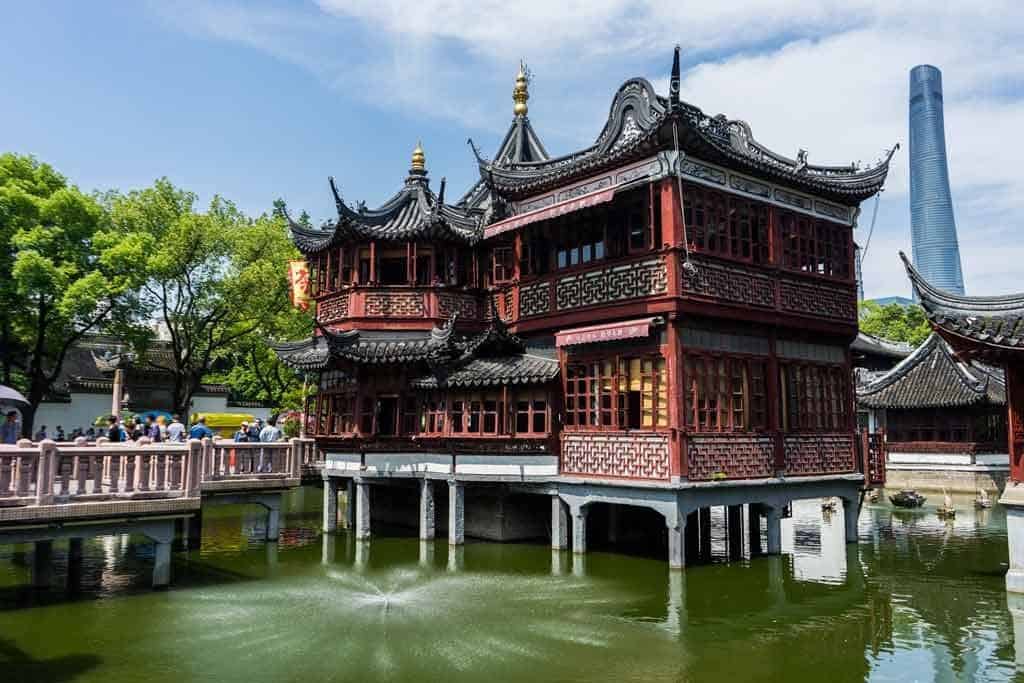
Food In China
- Beijing Duck – This dish is a must when you’re in Beijing, the birthplace of this iconic dish. The sweet and savory duck is served with spring onions, cucumbers, pancakes and other different sides (every restaurant has its own spin on this Chinese classic).
- Hot Pot – This can be an amazing choice or an utter disaster if you do not understand the Chinese spices and ingredients. It’s a pick your own destiny. First, choose the soup for your pot. This dish is all about the spice, but if your counterpart can’t handle the spice as well as you, you can split the pot into two. After choosing from a wide array of vegetables and meats you walk over to the sauce bar. The sauce bar offers barbecue sauce, freshly cut herbs, sesames and pastes, meats and vinegar. Ask a local to guide you through the process and help with their suggestions.
- Hong Shao Rou – This means red braised pork belly. It’s a dish that originated in Shanghai and is popular all across China. It’s cooked with garlic, chilli peppers, rice wine, ginger, soy sauce, sugar and deeply aromatic spices.
- Dumplings – These can be eaten at any time of the day. They are usually dipped in soy sauce or vinegar with garlic. Dumplings are a staple of Chinese cuisine and there are many variations to cater to all tastes. The dumpling dough can be based on potatoes, flour or bread and the filling can be made from almost anything – various meats, fish, vegetables or cheese.
- Chow Mein – This is a dish made popular by the locals of Northern China, which today has reached global fame. It’s a dish made out of thin noodles (bean and cornflour dough) and is accompanied by sliced meats, Chinese vegetables and an egg.
Travel Itineraries Suggestions for China
China is vast. As the 3rd largest country in the world, China has much to offer by way of travel experience.
But trying to see the entire country can be daunting.
Here is a suggested 12-day itinerary to give you the best chance to see the highlights in the least amount of time we’d recommend when you visit China.
Beijing (3-4 Days)
Perhaps the biggest reason why people go to China is to see the Great Wall of China.
Our main piece of advice is to skip the Badaling , which is the busiest section of the wall.
Visit a part of the wall that is unrestored but still tourist-friendly, such as Jinshanling, Huanghuacheng or Gubeikou .
The easiest section to visit would be to take a bus to Mutianyu .
There you won’t have the wall to yourself. But you will have successfully avoided most of the crowds and will see beautiful views.
The second day, go and roam Beijing’s hutongs.
These are a network of alleyways and courtyard houses that make up Beijing.
There are day tours that usually include the Wudaoying Hutong , Houhai Lake, the Lama Temple and the Bell and Drum Towers .
B ut if you have the time, the best way is to simply let yourself get lost.
If you have a budget set aside for activities, hutong tours are interesting as you’d get to learn more about history and culture.
On your third day, make sure to go and see the Tiananmen Square that carries a portrait of Mao right over the entrance to the Forbidden City.
The Forbidden City is huge and you could spend a full day there.
But for most travellers, even two hours is enough to see all the highlights before starting to feel overwhelmed.
For the rest of the day, go to Jingshan Park and enjoy the views of Beijing and the Forbidden City!
Xi’an (2 Days)
Rent a bike at one of the main gates of the wall and do a round trip tour around the ancient wall.
When you get off the wall, take some time to explore the art district near the South Gate .
The area is brimming with small shops and souvenirs.
This stunning neighborhood is a joy to photograph.
Take one afternoon to go roaming around the Huimin Jie Muslim market.
From bargaining for interesting souvenirs to bring back to your loved ones to eating some of the most delicious and cheapest street food you’ll ever have.
Also, you are only a day trip away from Xi’an are the terracotta warriors.
You can see rows upon rows of life-sized terracotta warriors.
Jiuzhaigou and Huanglong (2 Days)
Hiking through Jiuzhaigou is one of the most beautiful trails you’ll encounter. It is full of crystal lakes and rivers that will mesmerise you.
The waters are so crystal clear that they reflect the sky.
The next day visit Huanglong , known for its calcite deposit pools.
These vibrantly colored pools are why Chinese have nicknamed the Huanglong – “fairyland.”
Songpan (1 Day)
If you’re a fan of horses then definitely don’t miss out on a horse trek across the Tibetan plateau.
You will be able to travel with a local guide that will show you parts of China that most visitors don’t get to see.
Chengdu (2 days)
A bus ride to Chengdu is four to six hours (there are flight options available too). This will leave you just enough time in the afternoon to explore teahouses and the city’s scenic gardens.
For dinner, you should go and get the traditional eating experience – the hot pot (from Chongqing and Sichuan).
The next day you might want to take the two-hour trip to see the largest Buddha in the world.
There are many tourist buses that operate on a daily basis.
One of the highlights of Chengdu is their Panda Reserve .
Morning visits are the best because that’s when the pandas are most active.
They also have a baby area, where you can observe cubs play with toys and roll around.
Shanghai (2-3 days)
To visit Shanghai, try to have at least two full days available to give this city justice.
Some of Shanghai’s highlights are: the Bund, the Yu Yuan Gardens , the French Concession and Jing’an Temple .
A lot of visitors claim that the best soup dumpling eatery is outside the Yu Yuan Gardens. Just follow the queue.
To see the ever-rising skyscrapers expand before you in every direction you look, just go up to one of Shanghai’s buildings.
The usual go-to observatory spots are the Shanghai World Financial Center and the Jin Mao Tower .
Visa Requirements For China
If you are travelling to China you will have to apply for a visa from the Chinese embassy or their consulate.
This is unless you are a citizen from one of the visa-exempt countries.
An important side note : Hong Kong and Macau, have their own independent border control policy.
This means that they have their own visa requirements for which you have to apply separately from your Chinese visa.
There are only seventeen countries that are allowed to travel without a previously issued visa to China.
The countries that are exempt from visa are :
Stay up to 90 days:
- Bosnia and Herzegovina
Stay up to 60 days:
Stay up to 30 days
- Seychelles
- United Arab Emirates
Stay up to 15 days:
For further information and up-to-date changes, click here .
READ MORE: Our experience with getting a Chinese visa in Vietnam .
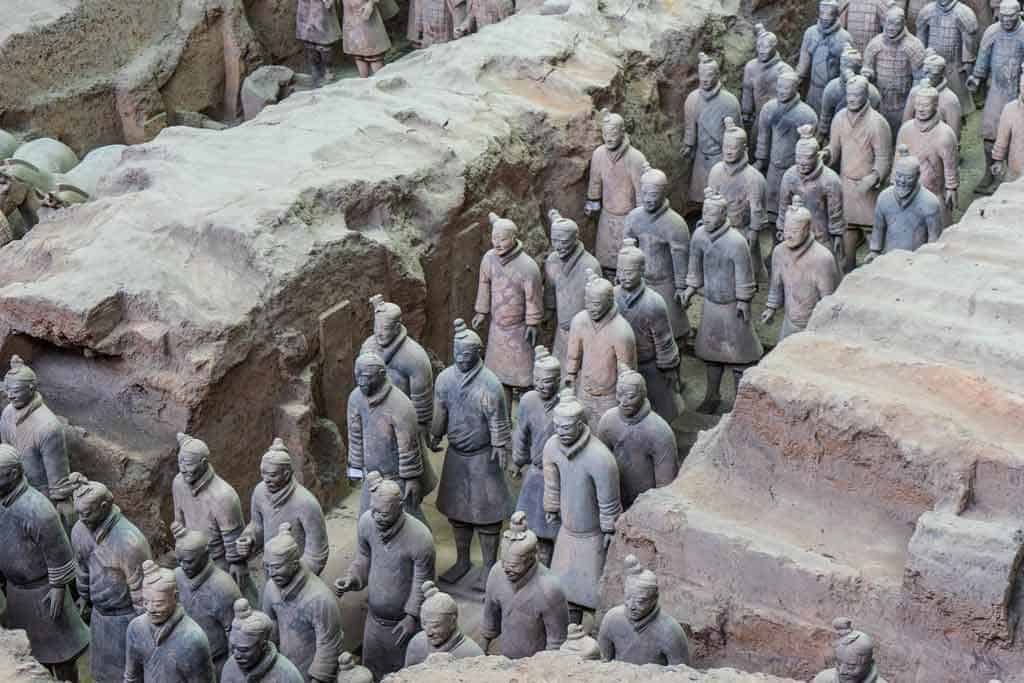
How to Travel to China
There are plenty of ways to travel to China. Whether you prefer to travel by air, land or sea you will find many options and rates for your travel into the country.
Flying is the fastest and most convenient way to travel from most countries in the world to China.
China air transport hubs are:
The biggest and most used airlines are:
- China Eastern Airlines
- China Southern Airlines
- Hainan Airlines
International flights connect China with major cities all around the world. Further, Chinese domestic flights connect all major cities within the country.
The only two cities in China that have two airports are Shanghai (Hongqiao International Airport and Pudong International Airport) and Beijing (Nanyuan Airport and Capital International Airport).
So be mindful of that when booking your flight.
There are eighteen cities in China that offer 72-hour visa-free transit so visitors can have a short stay in the most popular cities. Just note that these also tend to be the most expensive ones too.
From Europe:
Getting to China from Europe could be tricky and it most likely requires transfers.
That being said, you can still get to China from many European cities, such as Amsterdam, Milan, Rome, Brussels, Paris, Frankfurt, Manchester, Madrid, London, Zurich, Barcelona and Helsinki.
From the US:
It is possible to catch a direct flight from the US to China.
Most flights originate in San Francisco, Seattle, Detroit, Los Angeles, Seattle or Chicago and terminate in either Beijing or Shanghai.
Of course, pricing and availability vary. And you can expect the flights to be operated by one of the three big companies: Delta, American or United Airlines.
There are a variety of ways and border crossings when you want to visit china overland.
Travelling by train and vehicle are the most common.
The most usual way to get from Europe to China via train is to hop on the Trans-Siberian railway.
The Trans-Siberian train is a lot easier to arrange when it comes to booking a ticket or organizing your visas. And it is significantly faster.
The Trans-Siberian route, from Moscow – Beijing, is just one train. So in terms of being pragmatic and budget-friendly, this is the option we would recommend.
But that said, there’s another possible route: the Silk route via Kazakhstan.
Here you have the following options :
- London – Moscow
- Moscow – Astana or Almaty (Kazakhstan). This is the direct route for China
- Moscow – Bishkek (Kyrgyzstan)
- Moscow – Tashkent (Uzbekistan), if you wish to start from Uzbekistan
- Tashkent – Samarkand – Bukhara and Urgench for Khiva, these trains link Tashkent with three cities in Uzbekistan
- Tashkent – Almaty
- Almaty/ Astana – Ürümqi, which is the next step to China
- Ürümqi – Xian – Beijing
Train tickets are more expensive than traveling by air and transit times are longer too.
But i f you do want to spend some time in Uzbekistan, Kyrgyzstan or Kazakhstan then taking this route is a nice way to do sightseeing.
If you’re coming from USA/Canada, the easiest way would be to book your ticket to Moscow and then decide whether you want to take the Silk or the Trans-Siberian route.
We do not suggest driving because you could only drive to China, not inside the country.
International driver’s licenses are not valid in China.
So even if your starting point is from one of the neighbouring countries, it’s less hassle to book a train or hop on an airplane.
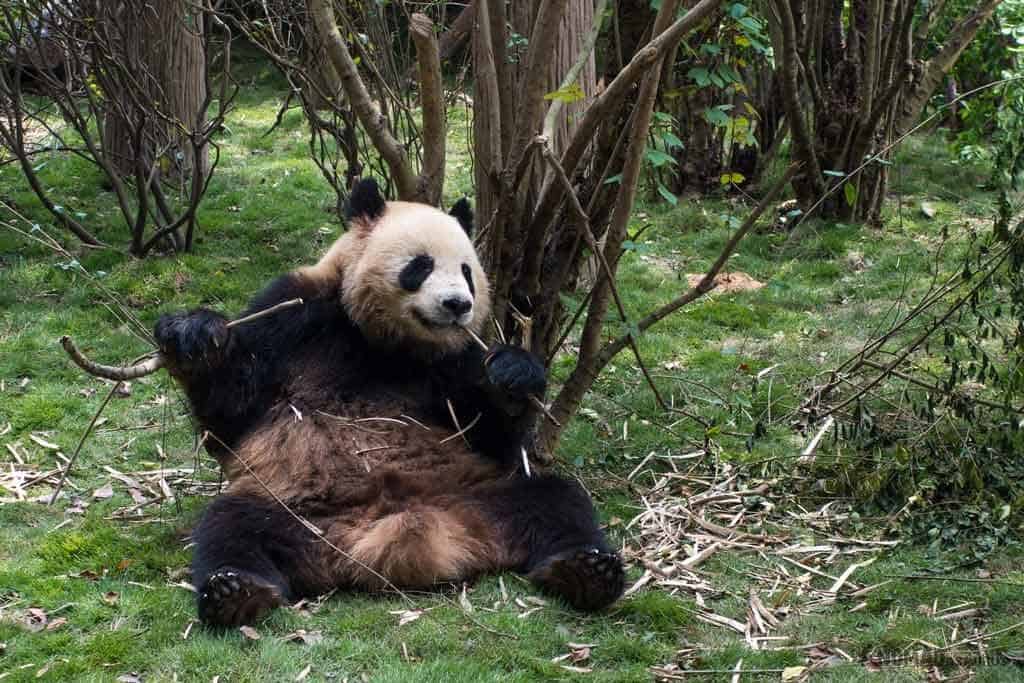
China Travel Tips
If you’re not from China or eastern Asia, you could find the culture and way of interacting to be quite strange.
The way of expressing emotions and opinions is quite different in China as compared to Western cultures.
But that’s just the beauty of cultural variety.
Besides that, there are certain things that you should pay attention to in order to have a good time in China.
And there are also things that you should know so that you will be respectful towards the locals.
Here are some tips we have for you during your stay in China:
- Don’t be afraid of raised voices! A lot of the time you will encounter Chinese people talking very loudly. In most cultures that would signalize that a heated discussion is about to turn into a brawl. But actually, Chinese people can tend to just talk loudly and passionately.
- Be sure to have Travel Insurance for the duration of your trip. One incident can cause a major impact on your wallet – not to mention your travel plans.
- Don’t tip. This might go against your personal beliefs, but Chinese don’t tip and neither should you. This will only confuse them or some may even find it insulting.
- Buy a VPN. There are a lot of useful websites that are not accessible in China (like Facebook or Google!) We recommend ExpressVPN. Use this link to get 30 days free when you sign up.
- The preferred method of payment is cash. Most places only accept cash unless you are visiting upscale hotels and restaurants.
- Use the Yuan currency only. The Hong Kong dollar or US dollar won’t be accepted.
- Install Pleco – the best app for Chinese language for travellers.
- Haggle. When merchants see that you are not a native Chinese, they will almost always rise the market price. It’s not unusual to haggle. Some merchants even respect you more if you do.
- Bring toilet paper and hand sanitizer. In a lot of toilets in China, you won’t always find these essentials.
- If in need of help, turn to the youth. Statistics have shown that a majority of Chinese under the age of 25 speak conversational English.
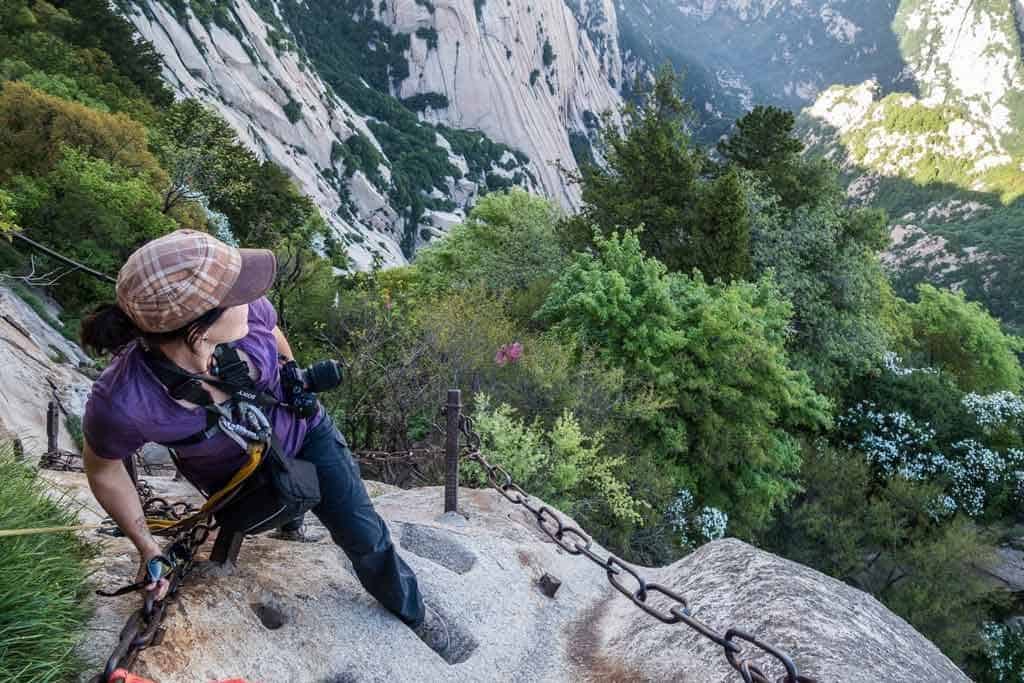
Budget for Travelling in China
China is a huge country and prices vary significantly depending on what region and what time of the year you’re visiting.
Since you’re probably interested in the range of prices of certain things you’ll definitely spend money on, we’ve decided to help.
Here’s a list of some essential expenses and their general cost range as you travel to metropolitan areas:
- Accommodation : $4 – $400+
- Food : $0.50 – $45+
- Drinks : $0.40 – $15
- Domestic/Local Transportation : $0.30 – $30
- Tours : $15 – $600+
When it comes to accommodation, the cheapest form is hostels.
In less touristy areas you can find mixed dorm beds from $4 USD per night.
Even in major cities, like Beijing and Shanghai, the prices start from $3 USD per night!
As for food, the best way to save money is to eat street food or visit a food court at a shopping mall.
The street food in China is not only cheap but also incredibly good. Even the wealthiest love to indulge in street food.
A filling meal from a street vendor would cost you up to $5 USD. But it’s usually less than that.
For transport costs, you can rent a bike, which is around $3 USD, depending on how much terrain you want to cover.
If you don’t have a budget for cultural activities, you’ll be relieved to know that there are many museums that don’t charge admission!
Flashpacker
There are a lot of mid-range accommodation options, from private rooms in hostels to private rooms in shared Airbnb and hotels.
Private rooms in hostels cost a little bit more than two beds in a mixed dorm room (around $8 USD per night) or a private room in an Airbnb (from $20 USD per night).
Mid-range hotel prices start from around $30 USD per night.
Eating out in local restaurants usually costs from $10-15 USD per meal.
The cost of an average alcoholic beverage in a bar would be around $8-10 USD.
Transport costs, such as taxi, could cost from $9 USD, of course depending on the time of the day (night fare is more expensive) and the distance you will cover.
But always ask for the price in advance before getting into the taxi!
Double rooms in a luxury hotel or a private home booked through Airbnb start from around 120$ USD per night.
Eating out at the most excellent restaurants (hotel restaurants or local ones) will cost you from $45 USD per meal.
There is an array of cultural activities available to all tastes and depending on your interest – whether it’d be visiting the Chinese national opera or the hottest night club – prices vary.
If you’re used to travelling in luxury through other countries, you can expect that China not only delivers the luxury to which you’re accustomed but also costs considerably lower when compared to other countries.
You could treat yourself to one of the most luxurious tours, such as a Zhujiajiao Water Village Tour from Shanghai.
Transportation In And Around China
China is a huge country and if you plan to travel around it – you’ll need some help.
Keep in mind that renting a car won’t be an option, since no international driver’s licence is valid in China!
Here are all the other ways to travel in cities and between them:
Chinese airlines are safe and comfortable.
There are over 1,200 routes and nearly 1,000 are domestic routes.
The most popular airports for domestic travel are in Shanghai, Guangzhou and Beijing.
Besides Macau and Hong Kong, there are over 200 airports in China that connect over a hundred internal cities and eighty foreign cities.
The most popular and reliable airlines are:
- Eastern Airlines
- Air China Limited
- Shandong Airlines
- Southern Airlines
- Shanghai Airlines
- Xiamen Airlines
- Shenzhen Airlines
- Sichuan Airlines
Public buses are generally crowded, but very affordable.
Try to avoid peak hours, as traffic jams occur in large and populous cities quite often.
The buses generally run from 6:30 in the morning to 7:30 in the evening.
In some cities they run through the night.
When you board the bus, at the front door there will be a coin box where you are expected to pay for your fare.
However, some buses have a ticket conductor that oftentimes charges according to how much distance you will cover.
The Intercity Long-Distance Bus
The intercity long-distance bus is another increasingly popular option attributed to the development and extension of highways.
All cities have coach stations which are located at the city’s railway station.
The long-distance buses operate between almost all Chinese cities.
The run time is usually from early morning to late in the evening, and for longer distances – there are fewer services throughout the day.
The buses usually have a toilet, TV, air-conditioning and some might even have a sleeping berth if it’s an overnight trip.
Mini-buses operate to try and alleviate the pressure of bus transportation.
The tickets are a bit higher in price and they’re determined by the distance you take.
Still, it is best to avoid peak hours which are from 7 am–9 am and 5 pm–7 pm.
Pay close attention to your belongings as pickpockets operate most during rush hour.
Tour buses usually feature a Chinese character ‘游’ in front of the bus number.
Tour buses are commonly seen in major Chinese cities where there are many famous highlights.
They have a predetermined scenic route and usually have a tour guide on board to share interesting bits of history and fun facts.
Trolleybus/Electric Buses
From 2010, trolleybuses have joined the public transit system in 14 Chinese cities.
All trolleybus systems in China hail from after the 1950s except in Shanghai.
Shanghai’s trolleybus system was opened in 1914 and is still operating – making it the oldest operating trolleybus system in the world.
Traveling by railway is the main means of transportation in China and its network is one of the biggest in the world.
The mileage of operating railways adds up to 124,000 kilometres and the number of passengers has surpassed 2.5 billion.
Out of the 124,000 kilometres of railway, the 22,000 kilometres are utilized by the high-speed railways.
The Chinese railway connects almost every place in China – even the most remote ones – and is the backbone of the Chinese traffic network.
The domestic trains are divided into five categories:
- High-speed/bullet trains
- Fast trains
- Tourist trains
- Express trains
- Normal trains
The High Speed/Bullet Train
This remarkable train, on average, operates fast as 250-300 km/h.
The price of tickets depends whether you want to buy first, second or business class as well as if they have a VIP category.
Some overnight trains offer soft and luxury soft sleeper options.
Many trains sell standing room tickets which cost the same as second class tickets.
The facilities are similar to those of an airplane.
The seats can be adjusted and you have use of a foldable table. Further, electrical sockets and meals and snack services are provided at a price.
This website will help with booking tickets and schedules.
The major cities have metro systems either already in operation, in planning stages or under construction.
The underground transit is developing at rapid speeds.
This is because one of the priorities to make China a greener country is to reduce the pollution of its cities and improve the quality of living.
Chinese metro systems are immaculate. They transfer large amounts of people, are very frequent and nearly always on time.
This contributes to diminishing the traffic jams and above ground transit.
The Shanghai Metro is the longest metro system in the world.
Taxi is a very convenient mode of transport and surprisingly not too expensive.
In major cities, all vehicles have a meter.
If you’re situated in a smaller town, ask at your hotel for a price estimate.
And if you’re thinking of covering a long distance, it’s possible to negotiate a deal.
Taxis are available at nearly all times and everywhere.
Chinese taxi drivers have a reputation of being very honourable. But it is always good practice to exercise caution.
China has over 110 thousand kilometres of navigable streams, lakes, rivers and canals.
The Grand Canal is 1794 kilometres long. It connects seventeen cities (from Beijing to Hangzhou) and five rivers (Huaihe, Qintang, Haihe, Yangtze and Huanghe.)
Since so many railways and highways have been built in recent years, waterway transport has diminished.
But there are still ways to move around the country via waterway – especially the Yangtze cruise (Baidi to Yichang), Beijing-Hangzhou Grand Canal and the Li River cruise (Guilin – Yangshuo).

Accommodation in China
There is a lot of variety and options when it comes to accommodation in China.
On one hand, you can stay in a very cheap hostel (which doesn’t mean that it lacks quality!).
But China is also full of luxurious hotels and villas.
When picking a place to stay, you should be aware of the fact that, in the Chinese language, there are different words for hotel and they indicate the status of the place.
- Dajiudian – “Big wine shop” – luxury accommodation
- Shan Zhuang – “Mountain resort” – accommodation in the countryside
- Binguan & fandian – a general term for a hotel and can mean anything from an average hotel to a smart hotel.
- Kèzhàn – Basic guesthouse
- Zhāodàisuŏ – Hostel
- Lǚguăn/ lǚshè – inn
- Zhùsù – accommodation
China is one of the best places in the world when it comes to the number of affordable accommodation options!
The network of hostels in China is ever-expanding and most of them are affiliated with the International Youth Hostel Association.
They tend to have clean and modern facilities, nicely designed social spaces, friendly and English speaking staff and fast Wi-Fi.
Getting around China is challenging if you don’t speak the language, but the staff from hostels usually are willing to help you on your way.
They will gladly write the places that you need to visit or a couple of useful phrases to ease day to day communication.
Also, even booking a private room in a hostel is considerably cheaper when compared to European countries.
The quality of hostels is good and the prices tend to be very low.
If you’re in Shanghai, staying at the Mingtown Nanjing Road Youth Hostel will cost around $9 per night.
The dorms have 6 beds and male and female dorms are separate.
A deluxe private room in Beijing’s Chinese Box Courtyard Hostel costs around $50 and breakfast is included in the price.
The hostel also has a couple of free thematic nights, such as the free vegetarian dumpling party or the professional and traditional Chinese Kongfu tea course!
When it comes to cheap hotels, you will usually find these located near bus or train stations.
Chinese locals usually rent beds and not rooms, so doubling up with strangers isn’t uncommon, especially as a means of saving money.
But foreigners are not allowed to share a room with Chinese people.
Instead, they have to rent a whole room. But usually, you will be able to negotiate a good price.
If you’re an avid camper, just know that it is only possible to camp in Hong Kong.
There are free campsites all over the New Territories and in the beautiful nature of Qinghai, Gansu, Inner Mongolia, Xinjiang, Yunnan, Sichuan and Tibet.
But just know that to camp, you would have to obtain a government-issued permit.
Hong Kong, Macau and few southwestern provinces have a number of privately owned guesthouses.
They range in size and quality, from tents to family mansions.
A double room in one of these guesthouses is usually cheaper than in a hotel.
There is at least one mid-range hotel in every town in China.
But the quality of the hotel is hard to predict from the price itself.
An old hotel with faulty bathrooms and washed out sheets could charge you the same as a newly opened establishment.
The general rule is to always try to book the newer place.
In more isolated places, you should be able to find a double room for $20 USD per night. But in bigger cities from $40 USD per night.
One thing you can always rely on when staying in a Chinese hotel is that you will be left with a pair of plastic or paper slippers and a vacuum flask of hot water that can be refilled by the staff!
If you’re in Chengdu, the Chengdu Rising Butterfly Hotel is one of the best options.
Either a business twin room or a queen room costs a little over $50. And in some cases, breakfast is included in the price.
The Holiday Inn Express Yizhuang in Beijing will be a great experience.
The price of a standard room with free breakfast for two is usually around $70. But you can often find discounts and pay around $40!
Luxury hotels are situated in larger cities and offer the same level of service as any four or five-star hotel anywhere else in the world.
They have the same facilities that are to be expected: gyms, swimming pools and business centers.
The price of a double room will be from $120 upwards and an additional 15% service charge will be added.
The Niccolo Chengdu hotel is one of the most popular of its kind.
The very luxurious hotel will offer an incredible experience that will satisfy any type of guest – all for the price of $150 per night!
The Upper House in Hong Kong is the epitome of glamour and it’s especially great for business travel.
It has the largest hotel rooms in Hong Kong, along with ocean views and an amazing location.
The prices start at around $400, but the largest penthouse costs over $2000!
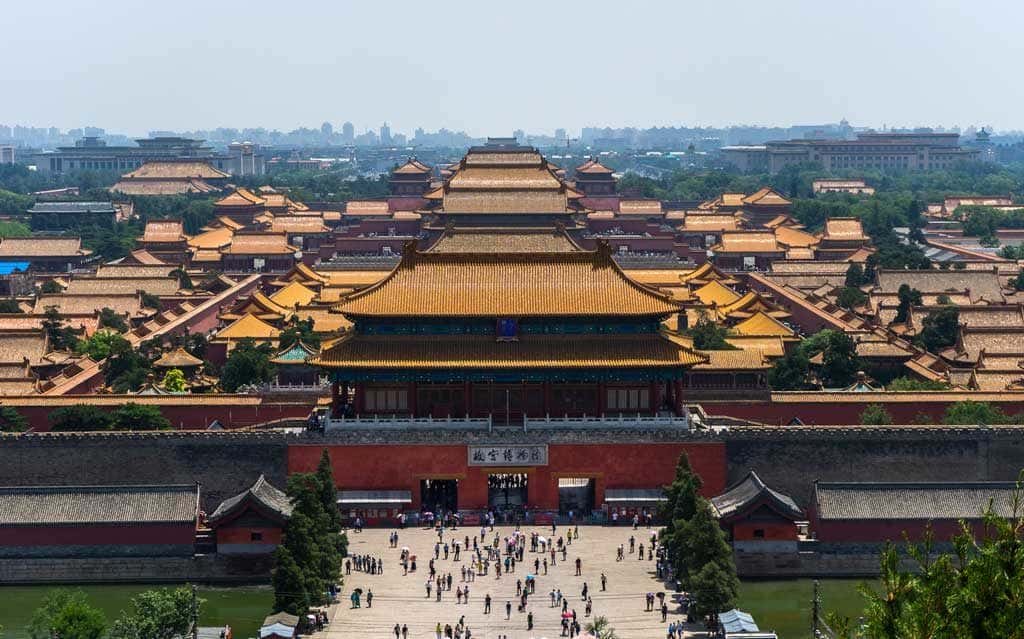
Safety While Travelling in China
China is regarded as a pretty safe and non-violent country.
If there is unrest it’s typically contained within certain areas.
Petty Crime
The biggest dangers are petty crimes such as pickpocketing – which with administering precaution is preventable.
Travellers are targets for pickpockets and thieves.
These thieves usually operate near train and bus stations, hard-seat train carriages, intercity but also long-distance buses (especially take precaution if you’re boarding the sleeper bus) and public toilets.
It is not advisable for women to travel solo.
Always check your restaurant bill to make sure you are not being charged extra for hidden expenses and avoid paying by credit card so you can make sure they won’t add any extra charges.
Safety in Taxis
The most widespread scam are the taxi scams at the Beijing Airport.
Always queue at the taxi rank and insist that the driver uses his meter.
Avoid pedicabs and motorized three-wheelers. Many times these drivers will agree on an initially negotiated price and then after you arrive at the destination they insist on a different sum, which sometimes can even be 10x the initial agreement.
Traffic Accidents
One of the dangers when traveling in China are the high numbers of traffic accidents.
The World Health Organization (WHO) made an estimate that there are approximately 600 vehicular deaths per day.
When taking a long-distance bus you’ll find that there are no seatbelts. Even taxis outside of major cities oftentimes don’t have rear seatbelts fitted.
The biggest danger is crossing the street no matter how ridiculous it sounds.
In China there are a large number of electric cars and hoverboards that run silently and you probably wouldn’t even hear them until it’s too late.
The red lights in China don’t mean much for Chinese drivers as they often run through them. So even the green figure signaling that it’s safe to cross doesn’t always mean that.
Medical System In China
The healthcare system in China is a mix of public and private services.
Major cities such as Beijing and Shanghai have hospitals with world-class care and specialist services.
Rural regions sometimes lack even the very basic healthcare services.
Sometimes healthcare options are limited to only types of traditional medicine such as acupressure, herbal remedies and acupuncture.
You should always travel with travel insurance ! A comprehensive travel medical insurance is mandatory for visitors.
If you are treated at a private hospital the price difference between a private and a public hospital is significant.
If you’re suffering serious health issues and at the time of medical assistance you’re in one of the more remote areas, you will have to organize an expensive airlift.
Preparation is key to easy and safe travels.
Make sure that your policy includes medical evacuation, translation service and private hospitals to ensure maximum comfort.
Packing List For Travel To China
While there is always a variety of packing options depending on the season and length of travel, these are the travel essentials we recommend for your trip to China.
Note: This list is intended for trips during spring and summer.
Clothing And Wardrobe For Men And Women
- 3x Comfortable, long pants
- 5x Short-sleeved shirts
- 2x Long-sleeved shirts
- 1x Wool sweater
- 1x Windbreaker/rain jacket
- 1x Fleece jacket
- 1x Flip flops
- 1x Adventure sandals
- 1x Waterproof shoes
- 1x Hiking shoes
- Undergarments
- Breathable socks
Miscellaneous Items
- Extra SD memory card
- A cellphone (make sure to have an offline Translator App, phrasebook, copies of needed travel documents and ids, currency converter, copy of your insurance card/policy and emergency contact info)
- Portable battery
- Power adapter
- Sunhat with a wide brim and a chin strap
- Insect repellent
- Toilet paper
- Hand sanitizer
- Guide book and a map
- Pocket knife
- Book with everyday phrases in Chinese
- Reusable water bottle
Check Out Our China Travel Blogs
Surviving the world’s most dangerous hike – mt huashan, the 10 best things to do in hangzhou, china (2024 guide), 26 awesome things to do in beijing, china (2024 guide), the perfect 3 days in taipei itinerary [2024 guide], 3 days in chengdu, china – the perfect itinerary, tianducheng – china’s strange city of paris, mount cangshan – hiking high in dali, falling in love with shaxi, china, the ‘real’ china – the ancient village of chengyang, camping on the great wall of china (the complete guide), a day in kashgar – china’s eclectic uyghur city, karakul to mutzagh ata – trekking the karakoram highway.
- 86-19138970032 (GMT+8 18:00~09:00)

- Beijing Xian Tours
- Shanghai Beijing Tours
- Hong Kong Guilin Tours
- Hangzhou Suzhou Tours
- Kunming Lijiang Tours
- Shanghai Yangtze Cruise Tours
- Chengdu Tibet Tours
- More Short Stay Tours
- China Tours in January
- China Tours in February
- China Tours in March
- China Tours in April
- China Tours in May
- China Tours in June
- China Tours in July
- China Tours in August
- China Tours in September
- China Tours in October
- China Tours in November
- China Tours in December

- High Speed Trains
- China Yangtze Cruise Tour
- Photography
- Desert Adventure
- Ethnic Villages
- Biking Tours
- Kung Fu Tours
- Heritage Sites Exploration
- China Spring Tours
- China Summer Tours
- China Autumn Tours
- China Winter Tours
Notice! 2024 available cruise routes include 4~5 days Chongqing-Yichang(most classic) and 11~12 days Chongqing-Yichang-Shanghai(limited).

- Best-value Yangtze Cruises
- Top Family-friendly Cruise Ships
- Top 3 Luxury Yangtze River Cruises
- Yangtze River Highlights
- Yangtze River Cruise Routes
- Upstream or Downstream?
- Dining & Drinking
- Accommodations
- On-board Activities
- Yangtze Cruise Booking Steps

- Inner Mongolia

- Fanjingshan
- How to Plan Your First China Tour
- How to Plan Beijing Tour
- How to Plan Xian Tour
- How to Plan Shanghai Tour
- How to Plan Guilin Tour
- How to Plan Sichuan Tour
- How to Plan Family Tour
- 2024 China Travel Ideas
- Best Time to Visit China
- What to Pack for Your China Journey
- Make Payment in China
- Updated China Travel News
- Ultimate Chinese Visa Guide
- Chinese Visa Types
- Chinese Visa Requirements
- Do I Need a Visa for China
- Chinese Visa Application
- Chinese Visa Exemptions
- 144-hour Visa Free
- Shenzhen Visa on Arrival
- Hainan 30-day Visa Free
- Embassies & Consulates
- Invitation Letter
- Useful Visa FAQs & Tips
- Entry Regulations
- Baggage Allowance
- Customs Declaration
- Exit Regulation
- How to Book Train Tickets
- How to Collect Train Tickets
- How to Cancel & Alter Train Tickets
- How to Read Train Tickets
- China High Speed Train Types
- Seats Class & How to Choose
- Friendly Facilities on the Train
- The Train Station Departure Process
- Available Food and Drinks on the Train
- Western Toilets on the Train
- Luggage Racks & Baggage Allowance
- Beijing Train Stations
- Shanghai Train Stations
- Guilin Train Stations
- Xian Train Stations
- Chengdu Train Stations
- Hong Kong West Kowloon Railway Station
- Beijing - Xian
- Beijing - Shanghai
- Guangzhou - Shanghai
- Shenzhen - Shanghai
- Chengdu - Xian
- Shanghai - Hangzhou
- Shanghai - Xian
- Chengdu - Chongqing
- Kunming - Lijiang
- Beijing Capital International
- Beijing Daxing International
- Shanghai Pudong International
- Shanghai Hongqiao International
- Guangzhou Baiyun International
- Hangzhou Xiaoshan International
- Chengdu Tianfu International
- Chengdu Shuangliu International
- Xian Xianyang International
- Shanghai - Beijing
- Hong Kong - Shanghai
- Guangzhou - Beijing
- Chengdu - Lhasa
- Shanghai - Guilin
- Shanghai - Sanya
- Travel in Spring Season
- Travel in Summer Season
- Travel in Autumn Season
- Travel in Winter Season
- Weather in January
- Weather in February
- Weather in March
- Weather in April
- Weather in May
- Weather in June
- Weather in July
- Weather in August
- Weather in September
- Weather in October
- Weather in November
- Weather in December
- Top 10 China Destinations
- Top 15 Things to Do
- China World Heritage Sites
- Top 10 Best Natural Beauties
- Top 10 Museums in China
- Top 10 Old Towns & Villages
- Five Great Mountains in China
- Top 10 Monasteries & Temples
- Top 10 Ski Resorts
- Top 10 Beautiful Lakes in China
- 7 Best Beaches in Sanya
- Top 6 Beautiful Waterfalls
- Panda Volunteering
- Having fun on Ice and Snow Festival
- About Us Who We Are Our Team Why Travel with Us Feedback & Reviews Travel Stories Travelers' Gallery Payment Guide Customer Support Contact Us
- Tour Experiences
Destinations
- Travel Guide
10 Easy Steps to Plan Your China Travel 2025
Planning a trip to China seems to be daunting. Well, China may really be long from your country. It has an entirely different system of society and culture. There are too many things to worry, food, hotels, tourist, flights, train… But here we want to say: take it easy. Planning a trip to China easy and raveling in China is easy either. Looking at it from another angle, it is wonderful that you're thinking of coming to China, a majestic country full of culture, history and natural wonders. You won’t regret a moment of your time in China because it will be a trip of once in a lifetime. Most importantly, you are not alone in China! You will be well taken care of by us from airport pickup, hotels to food, tour guide, etc.
Well there are some things you can do and learn about before your trip. The more prepared you are, the greater your chances of a memorable China trip that lives up to your expectations. Read following simple 10 easy steps which will help you organize a well-planned trip to China.
1. Decide Where to Go in China
China is one of the largest countries in the world with diverse options for travel. Classic culture tour, adventure, landscape sweeping, food tour…, which means you can travel to classic destinations, such as Beijing, Xian, Shanghai in an enjoyable way, or travel pretty far to experience exotic culture and nature in western China destinations, such as Tibet, Sichuan, Yunnan, Guizhou, etc., or go to spend several leisure day exploring romantic southern China destinations, such as Guilin, Hangzhou, etc. There may be certain things to do which is quite famous, and absolutely should be planned in your trip, such as the Great Wall, Forbidden City, Terracotta Warriors, Giant Panda, Li River, etc. You can browse the Top 15 Things to do in China. A another good way to check the Top 10 Most Popular Destinations in China to get inspirations. If you are interested in Chinese history and culture, you can also find out more sites in China UNESCO Site List.
Useful links
Top 10 China Destinations You can't Miss in 2025 Most Popular China City Tours 2025 Top 15 Things to Do for Your China Vacation 2025
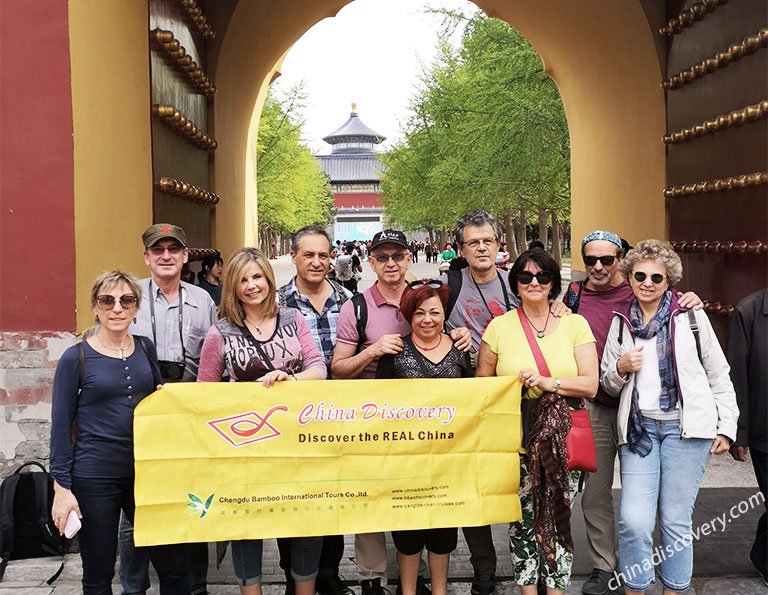
Beijing Tian'anmen
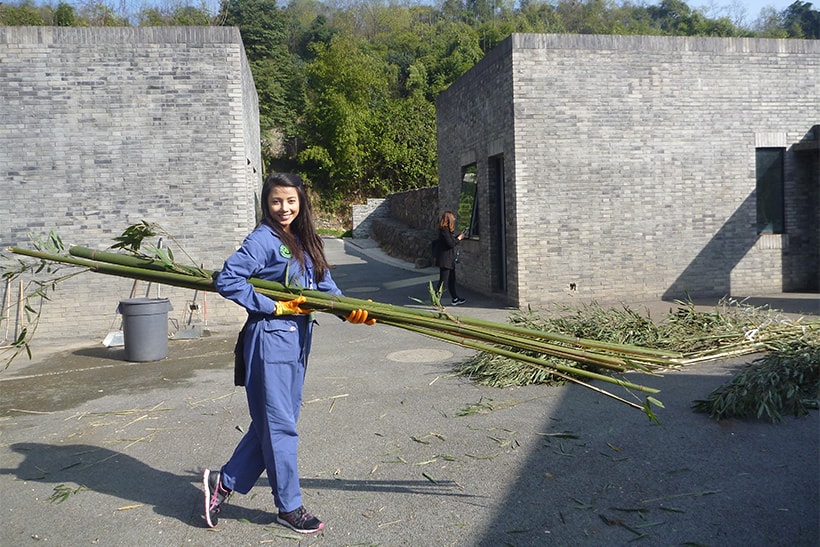
Chengdu Giant Panda
2. Traveling Independently or with a Tour Package
Traveling independently is not very difficult in tourism-developed destinations, such as Beijing, Xian, Shanghai, Guangzhou, Chengdu, but not recommended if you want to explore remote southwestern, southern and northeastern destinations. Well, you should know visiting China independently will cost a lot of time because you have to spend much time for mapping, looking for hotels and navigating location. Sometimes it is more expensive than a tour package.
Traveling with a travel agency is strongly recommended if you want to explore the very essence of China with a comfortable and worry-free way. A good local tour operator, like China Discovery, usually provides valuable group tours as well as tailor-made tour packages. You will be saved from the cumbersome jobs of online researching of hotels, destinations, foods, etc.
Top 10 China Tour Packages Classic China Tours Rated by Real Travelers Recommended China Tours from Beijing Recommended China Tours from Shanghai
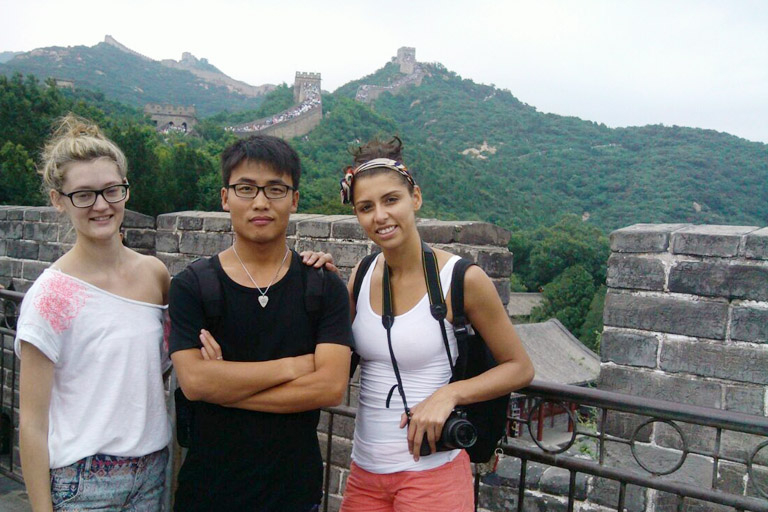
Our tour guide with clients

Non-smoking vehicle
3. Decide When to Go
Since China has four very distinct seasons, and the popular destinations are located in different regions of the territory, it is very important to travel destinations in different seasons. Since China is so large and diverse, you can always find suitable destinations to visit in each season, or each month. In the big metropolis, such as Beijing, Xian, Shanghai, Hong Kong and Chengdu, the season doesn't matter as much as visiting natural destinations, because their best highlights are all conveniently located in or near the city downtown, and it is always very easy to book flights, trains and hotels. But some destinations are only recommended to be visited in specific seasons.
Generally speaking, Autumn is the best season to travel China when the weather is pleasant and scenery is finest. But it is also the busiest tourism peak season. To avoid the crowds, you can avoid traveling during the festivals, such as National Holiday, Middle Autumn Festival, etc. Find out your destinations here in Recommended Destinations to Visit in Spring, Summer, Autumn and Winter.
China Seasonal Destinations China Weather and Climate Best Time to Visit China
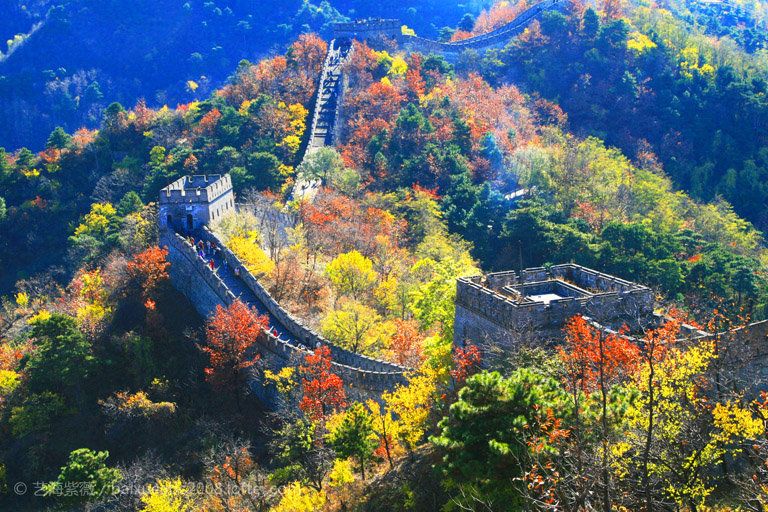
Great Wall in Autumn
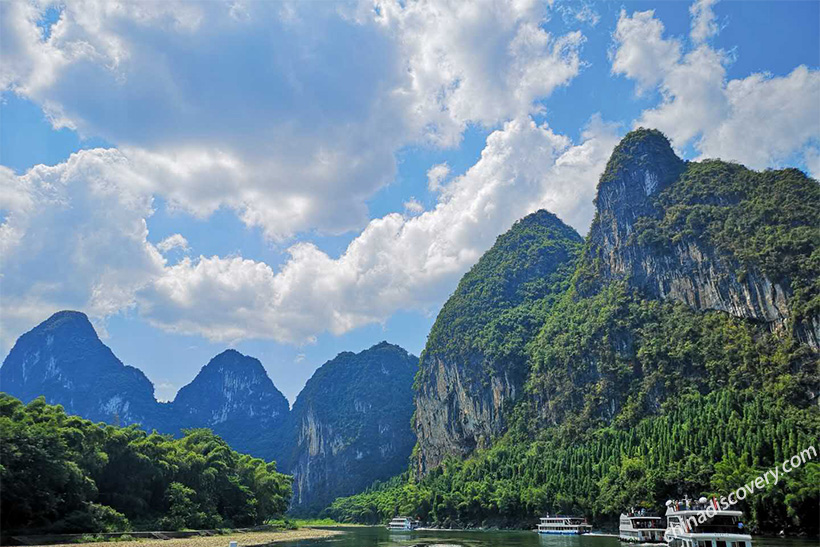
Guilin in Summer

4. Get Your Travel Documents Ready
Before leaving for China, you have to get your passport and Chinese visa prepared in advance. Some cities in China, including Beijing, Shanghai, Chengdu, Xian, etc, have released visa-free policies, but they only allow a stay less 72 hours, and there are a lot of complicated procedures to deal with.
You’d better apply for Chinese visa at least six months before your trip. A multiple entry visa is recommended which allows you to enter China for many times. It is also useful for trips to Hong Kong or Macau with returns to China. You also have to have a valid passport with you. If you don’t have a passport, it usually will take at least four to six weeks from the time of application for you to receive one. Make sure your passport won’t get expired while you’re in China. If you want to visit Tibet, you will have to obtain a Tibet Entry Permit.
Chinese Visa Types Chinese Visa Application Chinese Visa Exemptions
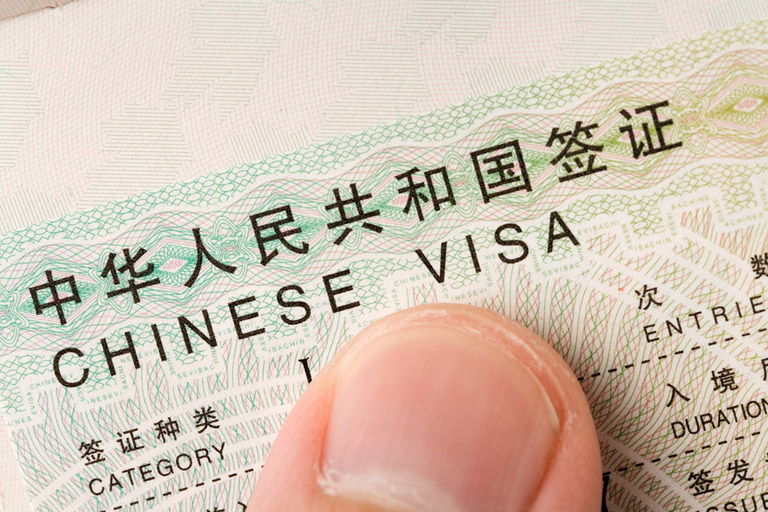
Chinese Visa

5. Decide Your Trip Length and Create a Rough Itinerary
A China trip can be as short as a day tour, or as long as a panoramic trip of months. You decide the trip length, and the destinations decide how many days needed. A classic China tour, which covers Beijing, Xian, Chengdu, Guilin and Shanghai, will cost about 15~16 days. These destinations are usually visited by the first-timers. You can also add Yangtze River Cruise (4~5 days), Tibet (4~8days), Zhangjiajie (3~4days), Yellow Mountain (3~4days) to your trip if you have more days in China.
It is suggested to arrange the itinerary at a leisure pace so that you can have enough time to experience all the best highlights, and won’t get exhausted. If you already have done a lot of researches, you can create a rough itinerary on your own, then send to your travel agency to check availabilities. If you have no idea how to organize the destinations into an itinerary, you can feel free to let your travel consultant offer you a recommended itinerary.
Beijing Xian Tours Beijing Shanghai Tours Hong Kong Guilin Tours
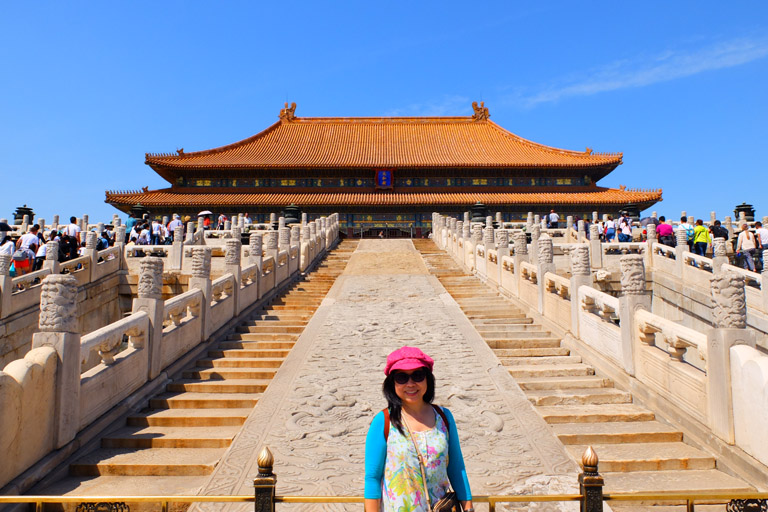
Beijing Forbidden City

Ask us to tailor-make your tour
6. Book Your Flights and Hotels
Once you work out an ideal itinerary and confirm with your travel agency, you can start to book flights and hotels. Early booking is recommended because the fares for flights and hotels are not fixed. The earlier you book, the greater prices you will enjoy. In some popular destinations, such as Huangshan, Lhasa, etc., the demands for hotels are quite high during the peak season. If you are flexible, you can arrange the flights and hotels on your own. But we suggest you let your travel agency book flights and hotels for you because they know which flights match your itinerary well, and which hotels have great service and amenities. Besides, the agencies always have better prices of flights and hotels.
China flights guide and tips Major Airports in China Major Airlines in China
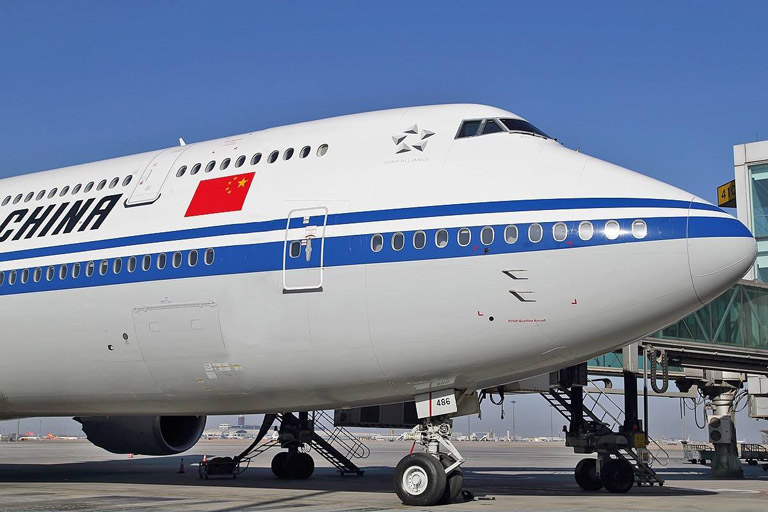
We can book flights for you

We can book hotels for you
7. Traveling with Children
You can definitely travel in China with your kids, which can be fun, entertaining and educational. The profound culture, great history, amazing natural landscape, unique food and budget shopping make the Middle Kingdom the perfect destination for family travel. Besides, it is safe and easy to travel with children in China because most destinations are connected by fast flights, train or bus. There are many things to do for your family vacation - visiting the cute Giant Panda or even having a volunteering job, leisurely hiking the Great Wall, making new friends with local kids in the custom parks, entertaining in the amusement parks, taking Kungfu class, enjoying acrobatic show, etc. At the same time, don’t worry about the accommodation, dinning, transportation in China. Comfort, fun, experiences… all are acquirable if you plan the trip in advance well. Before leaving for China, make sure you have everything you absolutely need but haven’t over-packed, because you can find many of the necessary stuffs for kids or infants in China.
Top China tours for family with kids Family Friendly Activities in China Destinations for Family Travel
Visiting Terracotta Warriors in Xian
Hong Kong Disney Resort
8. Money and Currency in China
Renminbi (人民币) or RMB is the official currency of China. Chinese people often call yuan as “kuai”, both of the two pronunciations are used among China. For example, 1 yuan = 1 kuai. Notes are available for 1RMB, 10RMB, 20RMB, 50RMB, and 100RMB.
Most businesses in China only accept Chinese currency. But your travel agency usually accepts USD, EURO, GBP and AUD. You can change Chinese currency at airports, banks, ATMs, hotels and exchangers. During your travel in China, you are suggested to bring some cashes for daily payments of food, taxi, shopping, etc. Most ATMs in China allow you to withdraw Chinese money in big cities, such as Beijing, Xian, Chengdu, Shanghai, etc.
Chinese Currency & Money Exchange Shopping in China How to make payment to China Discovery
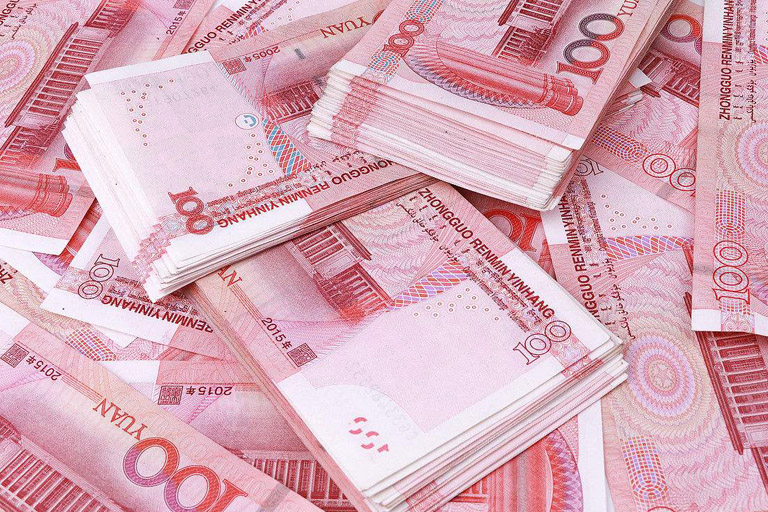
RMB (100 Yuan)

Withdraw money at ATM
9. Start Packing and Review Your Medical Checklist
Pack light and only bring necessary stuffs because you can get most stuffs you want to buy in China. Besides, your baggage will definitely get fuller and heavier as there are too many interesting things you can shop in China.
Bring and keep your passport and Chinese visa well. Getting any of them will be a very serious problem in China. Just in case, you can duplicate several copies of them and keep the originals and the copies separately. Also remember to bring your bank card, credit card and confirmations of your bookings of flights, hotels, trains.
As for clothing, you should wear accordingly to specific season and destination. Check China Weather or ask your travel consultant for recommendations. Bring different sizes of bags to make a classified packing: large bags for clothing and some rarely used stuff before stepping off the plane; small bag for frequently used stuff and carry with you.
Before packing, you should understand there are some luggage restrictions entering China by air. Varying from different airlines, the restrictions can be hard to tell one by one.
What to Pack for China Travel Baggage Allowance for Entry & Exit China

Pack only necessary stuffs
10. Learn More about China
China is a quite different country from America, Australia, and Europe. There are many interesting things to read about China, such as festivals, food, history, facts, etc. Learning about Chinese culture will help you understand well about the things your tour guides explain to you during your trip.
Chinese Culture and History Tours 2025
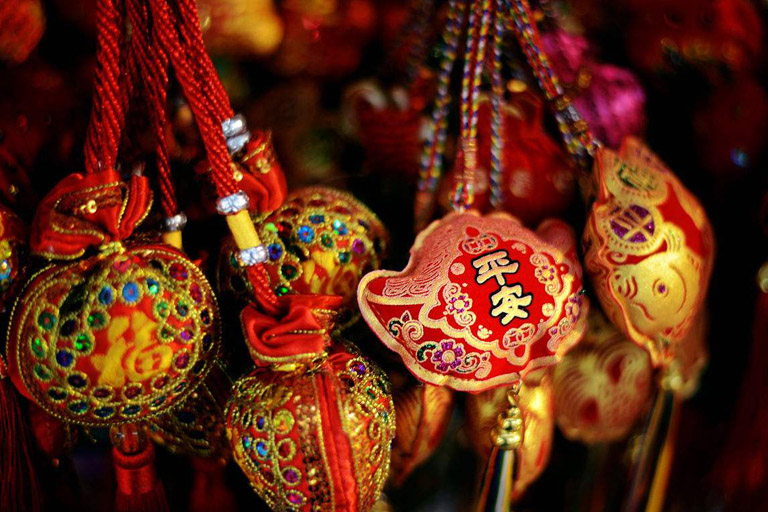
Learn Chinese culture
Keep Reading
- Chinese Visa Types & Application
- China Weather & Climate
- China Accommodation
- China Transportation
- What to Pack for China Travel
- Top 10 China Destinations in 2024
- Top 15 Things to Do for China Vacation
- China High Speed Train travel 2024
- China Travel in Different Seasons in 2024
- China Facts
Recommended Tours
Top 3 tours chosen by most customers to explore in the best way. Check the detailed itinerary, or tailor your own trip now with us.
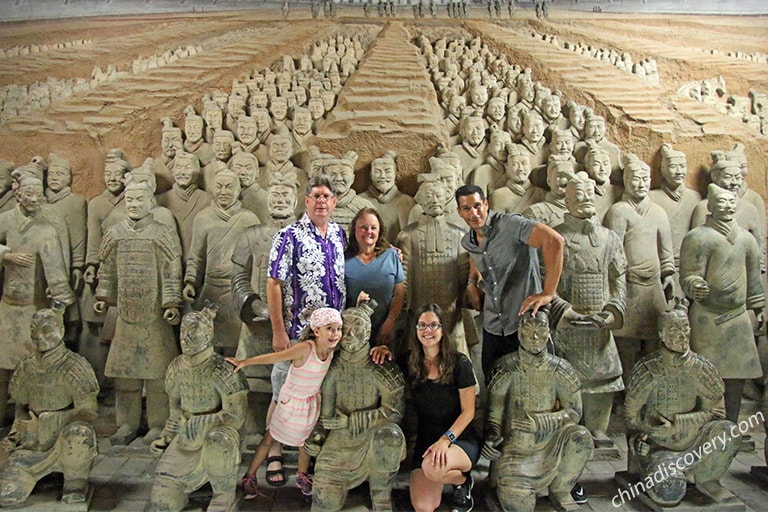
8 Days Best of China Tour (Flight/Bullet Train Covered)
Beijing / Xian / Shanghai
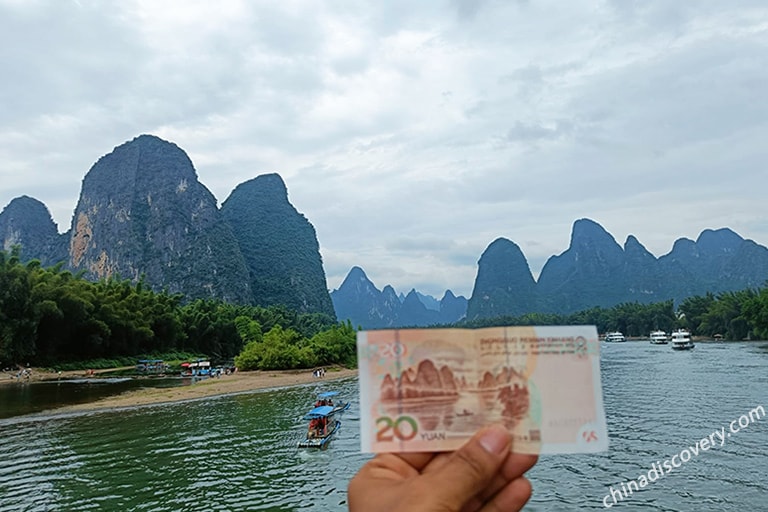
10 Days Classic China Tour from Beijing - First Touch of China
Beijing / Xian / Guilin / Yangshuo / Shanghai
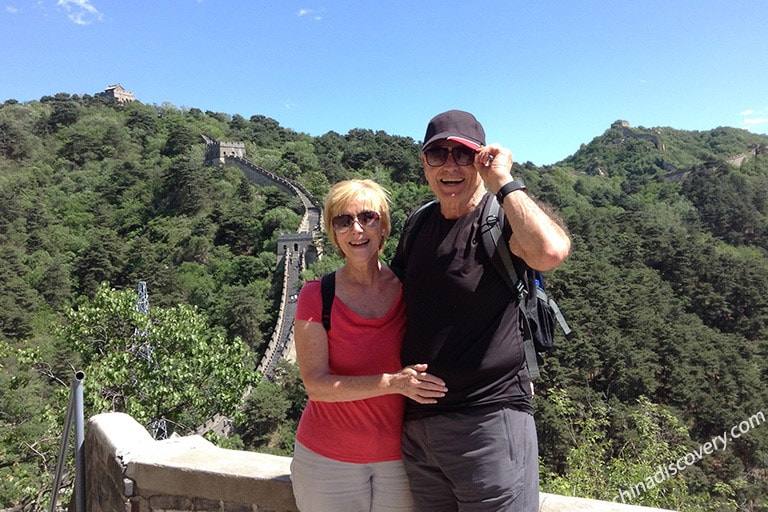
17 Days China Yangtze Tour with Tibet & Giant Panda Visit
Shanghai / Yangtze Cruise / Chengdu / Lhasa / Xian / Beijing
Start planning your tailor-made holiday to China by contacting one of our specialists. Once inquired, you’ll get a response within 0.5~23.5 hours.

Have a question? Get answers from our travel experts or guests
- Your Question:
- Your Email:
- Affordable and valuable price
- 100% tailor-made packages
- Highly rated customers reviews
- Efficient customer support
China Tours
- Top 10 China Tours
- Classic China Tours
- China Tours from Beijing
- China Tours from Shanghai
- China Tours from Hong Kong
- China Tours from Chengdu
- Short China Trips
- Customize China Tour
- China Panda Tours
- Family Tour with Kids
- High-Speed Train Tour
- Silk Road Travel
- Yangtze River Cruise
- Hiking & Trekking Tours
- Photography Tours
- China Minority Travel
- Beijing Shanghai Tours
- Shanghai Yangtze Tours
- Chengdu Jiuzhaigou Tours
- Chengdu Lhasa Tours
- Suzhou Hangzhou Tours
- Guilin & Yangshuo
- Zhangjiajie
“Very good experience”
“WONDERFUL 25 DAYS IN CHINA - PRIVATE TOUR”
“Awesome China tour from northeast to southwest”
Any questions, please email us at: [email protected] or call us at: 86-19138970032 (Monday-Friday 9 a.m. to 6 p.m. GMT+8)
- Terms & Condition
- Privacy Policy
- Customer Support
Copyright © 2011-2024. All rights reserved.
Cookie policy
We use cookies to give you the best experience on our website. Continue using our website means you agree with our cookie policy. For more info, please read here .
Nomadic Matt's Travel Site
Travel Better, Cheaper, Longer
China Travel Guide
Last Updated: April 29, 2024

China is a country filled with micro-cultures, languages, cuisines, and ethnicities. Rapid change has attracted curious people from around the globe and there is a thriving expat scene for anyone looking to teach overseas.
While I dislike the pollution of many of the big cities, the countryside, the food, people, and the history you’ll discover here will leave you in awe and forever changed. This is a country with layers where everything is filled with meaning and history.
This travel guide to China can help you plan your visit to this gigantic country (there’s over a billion people here covering 9.5 million square kilometers) with advice on things to do, how to get around, stay safe, save money, and much, much more!
Table of Contents
- Things to See and Do
- Typical Costs
- Suggested Budget
- Money Saving Tips
- Where To Stay
- How to Get Around
- How to Stay Safe
- Best Places to Book Your Trip
- Related Blogs on China
Click Here for City Guides
Top 5 things to see and do in china.
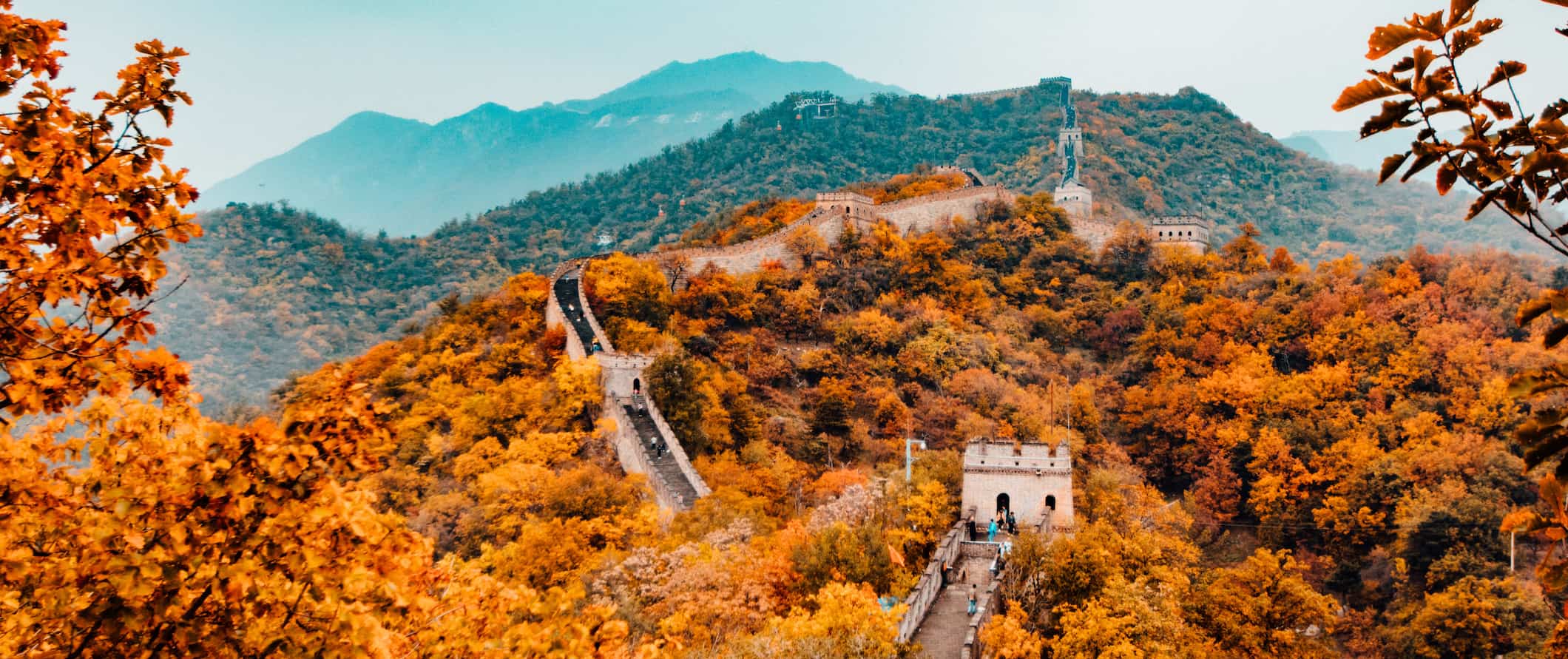
1. Visit Hong Kong
Hong Kong is bustling metropolis that combines high rise buildings with traditional street markets and temples. You have a large expat population, good shopping, fantastic nightlife, and delicious food. It’s one of my favorite cities in the world and I never get tired of visiting!
2. Explore Shanghai
One of China’s largest, busiest, and most visited cities, Shanghai is like visiting the future — fast trains, lights everywhere, efficient organization, and a cosmopolitan vibe. I love Shanghai. To get a sense of historical China, head to the Old City and see the YuYuan Gardens. For some of the best shopping in China, head to Nanjing Road.
3. Wander Beijing
Visit Tian’anmen Square, the Forbidden City, countless shopping malls, the Temple of Heaven, Summer Palace, and of course, the Great Wall. There’s nothing like Beijing in the world, and, though horribly polluted and with awful air quality, it’s still a city you have to visit in order to understand modern China and its dynamism.
4. The Great Wall of China
Stretching over 21,000 kilometers, the Great Wall offers both busy tourist sections as well as secluded ruins (you can even camp beside it in some areas). If you’re on a budget, you can take the public bus to the wall near Beijing. The bus is 12 CNY and admission to the wall is 40 CNY (45 CNY in the summer).
5. See Xi’An
Xi’an is one of the ancient capitals of China and home to the famed Terracotta Army (which is over 2,000 years old), city wall, and architecture of the Muslim quarters. Those three things are pretty much why everyone comes here but there’s also an incredible hike on Mount Hua if you’re looking for adventure.
Other Things to See and Do in China
1. tian’anmen square.
You’ve no doubt seen it in films and on TV, but it is hard to get an idea of the sheer size of this square until you’re standing square in the middle of it. There’s plenty to see here including the Tiananmen Tower, the Great Hall of the People, the People’s Heroes Monument, the National Museum and Mao Zedong’s mausoleum. While you are allowed to take photos in the square itself, you cannot use your camera in the mausoleum.
2. Gorge on food
China is a food lover’s paradise. Eating here will certainly put your take-out back home into perspective. In such a huge country, it’s no surprise that different areas have different culinary delights. It’s entirely possible to enjoy the four styles of Chinese cooking (Cantonese, Beijing, Shanghai, and Sichuan) while on your trip. For spicy food, head to Sichuan or Hunnan in Central China (be sure to try the hot pot while you’re there).
You’ll find more salty items like dried meats and pickled vegetables in the north (where fresh produce is less common) while in cities like Beijing, Hong Kong, and Shanghai you can pretty much find everything!
There are plenty of options for vegetarians in China as well, and even vegans can get by without too much difficulty.
3. Cruise the Li River
For a true sense of natural beauty, cruise down the Li River. The river is 272 miles long and has dozens of places to explore along the way. Some of the best photography spots can be found in Xiaolong, Laozhai Hill, and the karst mountains near Guilin. For tours, prices start at 500 CNY per person, depending on how long (or luxurious) of a cruise you want.
4. Visit the Forbidden City
This famous attraction in Beijing was the imperial palace from the time of the Ming Dynasty to the Qing Dynasty (1420-1912 CE). The “city” covers over 175 acres and is a UNESCO World Heritage Site, welcoming over 16 million visitors each year. Today, the Palace Museum holds artifacts from both dynasties and is a great place to learn about China’s history. The buildings, which cover over 180 acres, have been heavily renovated over the years but it’s still an epic complex worth visiting.
5. Travel (part of) the Silk Road
Dating back over 2,000 years, this unofficial route is a must-see for visitors looking to get off the main tourist trail. There is no “official” road to follow, but you can trace your way along the traditional route as far and wide as you’d like (the Silk Road originally spanned from Chang’an to Romend, Italy). Its total length was over 3,800 kilometers (2,400 miles), half of which was within Chinese territory. Be sure to see the Mogao Caves in Dunhuang, the ancient city of Turpan, and the Rainbow Mountains near Zhangye.
6. Explore Tibet
Also known as “the Roof of the World”, this area is perfect for adventurous travelers that are looking for unique attraction. Explore the snowy mountains, exotic customs, and Buddhism. Tibet has had tumultuous past, so during your visit, it’s wise not to bring up the Dali Lama. The region was annexed by China in the 1950s, forcing the Dalai Lama and his government into exile. Some 400,000 Tibetans were killed directly or indirectly by the occupation, with other estimates placing that number over 1 million. Avoid talking about the history and politics of the region as is it understandably a very sensitive subject for both sides. You’ll need a special permit to visit the region as well.
7. Potala Palace
This Tibetan palace was home to the Dalai Lamas up until 1959, when he was forced to flee or be killed. Established as a holy site in the 7th century, the many halls, temples, and courtyards have been constructed from wood and stone. The current building, which is now a UNESCO World Heritage Site, dates to the 17th-century and has poured copper in its foundation to stabilize it against earthquakes.
8. Take in the Karst mountains
Illustrated on the back of the 20 yuan banknote, these mountains are a stunning sight to see in person. They’re huge! You can take a boat trip down the Li River, and enjoy the breathtaking views of the mountains. You can also rent a bicycle to explore the quieter backroads and take in the picturesque landscape. Prices begin around 20 CNY for a half day. Guilin is a great hopping-off place for this.
9. The Mogao Grottos of Dunhuang
Also known as the Thousand Buddha Caves, these grottos are home to the largest, best-preserved, and richest Buddhist art in the world—the first cave was carved here in 366 AD. There are almost 500 individual temples here and it’s one of the main stops on the Silk Road if you are tracing the footsteps of Marco Polo.
10. Take a free walking tour
All of the major cities in the country offer various types of walking tours, many of which are free and last a few hours. If you want to learn about the history of China’s major cities, this is a great way to start! Whenever I land in a new city, this is how I kick off my trip as it helps me get the lay of the land. Free walking tours are available in Beijing, Shanghai, Hong Kong, Xi’an, and many other cities around the country. Just Google “free walking tour in X” to find the companies that are available during your visit. Just be sure to tip your guide at the end (that’s how they get paid!).
11. Let loose in Macau
Macau is considered the “Las Vegas of Asia” and is a fun destination for anyone looking to splash out. Macau started as a Portuguese colony and remained one for over 300 years so the city has an interesting mix of Chinese and Portuguese cultures. Like Hong Kong, Macau is a “Special Administrative Region” which means it has a lot of autonomy from the mainland government It is also home to the highest bungee jump in the world, boasting a plunge of a whopping 233 meters (764 ft)! I don’t love the city as much as I do Hong Kong but you’ll find a lot of good food and architecture here. If you’re not here to gamble, you only really need one night here!
12. Visit the Pandas in Chengdu
Pandas are an endangered species and rare to see in the wild. If you want to get your fix while in China, head to the Panda Research Base in Chengdu. If you get there early you can beat the crowds and watch the pandas relax, eat, and sleep (that’s all they really do — but it’s still worth seeing!). Admission is 55 CNY per person.
13. Take a class
Calligraphy classes, cooking classes, tea ceremonies — you can find all sorts of amazing, culturally-enriching classes and lessons in all of the major cities in China. Some last an hour, some last multiple days, but no matter what you’re interested in you can find a class to teach you something new! Expect to pay between 300-900 CNY for a calligraphy class while cooking classes start at around 300 CNY per person. You’ll find the most options in Beijing, Shanghai, and Hong Kong. Viator.com is a great resource for finding classes near you. You can also use cookly.me to find cooking classes and prices all around the country as well.
China Travel Costs
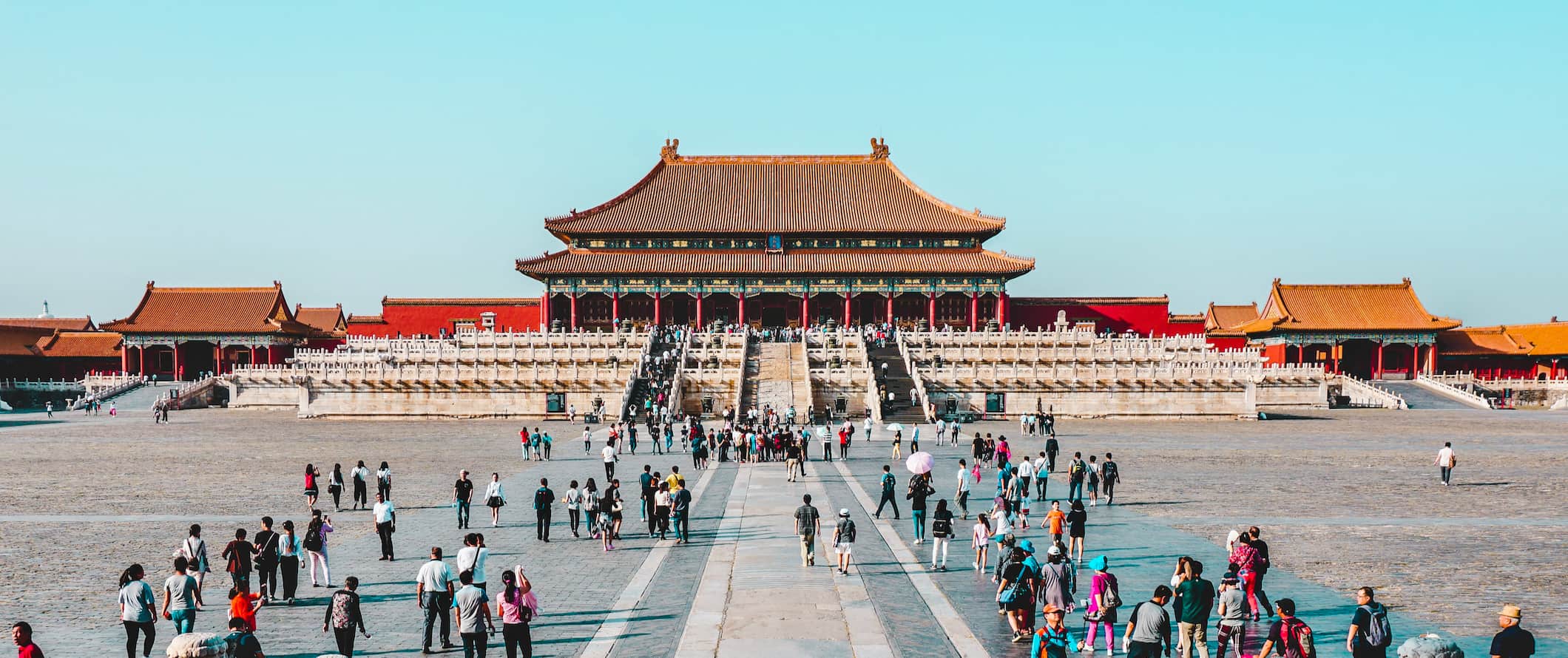
Accommodation – Prices start at around 30 CNY for an 8-10 bed dorm in many of the smaller cities. Expect to pay closer to 85 CNY in Hong Kong and Beijing. For a private room, prices begin around 110 CNY though expect to pay almost double that in the larger cities. Hostels here are generally well equipped and have free Wi-Fi, drinking water, lockers, and even warm blankets in the winter! Hostels in cities will have western-style toilets, though in more remote parts of the country you may find squat toilets more common.
Budget hotels begin around 75 CNY per night for basic accommodations, with higher prices in Hong Kong. Budget hotels will usually include heat or AC, your own bathroom, a kettle, and TV (though you’ll only get Chinese stations). Keep in mind that any hotels offering free breakfast will likely be serving a Chinese breakfast (dumplings, rice congee, vegetables, etc.).
Airbnb is plentiful in China and can be found in all the major cities though it’s much less common in rural areas. Prices range from 175-750 CNY depending on the city and the type of apartment.
There are plenty of campgrounds around the country. Expect to pay around 20 CNY per night for a basic plot. Wild camping is a grey area; it’s both legal and illegal at the same time to allow local authorities the final say. I would avoid wild camping and stick to official campgrounds as to avoid any problems.
Food – Food in China is cheap. I mean, really cheap. A meal from a street vendor usually goes for around 7-14 CNY. For this, you might get noodles, rice, pork buns, or soup. A full meal in a sit-down restaurant will cost between 15-54 CNY plus the fee for a bowl of rice and clean bowls (yes, these cost extra!), which is often around 4 CNY. If you stick to the local food, you’ll find it hard to go broke. You could spend less than 70 CNY for an entire day’s worth of food.
In western China, southwestern China, and the interior, food is much cheaper than in the big cities and you can eat for under 35 CNY per day — about half the costs of the big cities as long as you stick to street food/local restaurants.
For Western food, you can expect to pay much higher prices for food that will be a disappointment compared to home — especially if you’re outside of the more Westernized cities like Hong Kong. A western-style sandwich or fast food meal can run about 40 CNY and a cup of coffee can be similarly-priced to back home — sometimes more!
Vegetarians and even vegans will be able to get by relatively easily in the cities with a little planning as China’s history with Buddhism has made the country quite veg-friendly.
Since food is so cheap, there’s no need to self-cater or cook your own meals. You are better off eating the street food and at the restaurants. Moreover, many hostels don’t have kitchen facilities for you to use even if you did go grocery shopping. Therefore, self-catering is not something I recommend. The food is cheap and plentiful, so enjoy it! If you will be buying your own groceries, expect to spend between 250-400 CNY depending on your diet.
Activities – In general, sights are affordable in China — even popular attractions such as the Great Wall or the Forbidden City are under 68 CNY. While the Great Wall never kept out invaders, it’s beautiful and is only 45 CNY, the Forbidden City is 60 CNY (40 CNY if you visit between November and March). Smaller temples, activities, and sights are much more reasonably priced and cost under 20 CNY.
While attractions and temples are less than 70 CNY, prices for hikes and outdoor activities tend to be more expensive, often costing around 200 CNY. For example, a trip to the Jade Dragon Snow Mountain costs around 200 CNY, a visit to the Jiuzhai Valley is also 200 CNY (as much as 2,000 CNY if you want to go as part of a tour) and a three-day pass to the Wuyi Mountains in Fujian province is 140 CNY while admission to the Yellow Mountains in Anhui province is 190 CNY. You’ll still need to pay for transportation to these places as well.
Backpacking China Suggested Budgets
How much does it cost to visit China? Here are some suggested budgets you can use to help you plan, based on your individual style of traveling. Keep in mind that if you’re staying in cities like Hong Kong, Beijing, or Shanghai you should expect to spend at least 20% more.
On a backpacker’s budget, you should plan to spend between 215-285 ($30-50 USD) per day. This is a suggested budget assuming you’re staying in a hostel dorm, eating fast food occasionally but mainly cooking your own meals, using public transportation, and participating in basic activities like visiting museums.
On a mid-range budget of 645-1,000 CNY ($90-140 USD) per day, you can stay in budget hotels, take buses between destinations, eat fast food, and do more excursions.
For a luxury budget of 1,500 CNY ($210 USD) per day, you can afford to stay in nice hotels, take the high-speed train, do some guided tours, and eat out for every meal.
You can use the chart below to get some idea of how much you need to budget daily, depending on your travel style. Keep in mind these are daily averages — some days you’ll spend more, some days you’ll spend less (you might spend less every day). We just want to give you a general idea of how to make your budget. Prices are in USD.
China Travel Guide: Money-Saving Tips
Given the size of China as well as its general affordability thanks to cheap food and accommodation, there are plenty of ways to save money when you visit here. Here are some of the best ways to save money during your next trip:
- Use sleeper trains – Use sleeper trains (doorless compartments with bunks) to travel overnight since distances between cities can be quite large. Spending a night on the train will save you paying an extra night of accommodation. Lower bunks are less expensive, so purchase a few days in advance to take advantage of these savings. Some stations have ticket offices for foreigners if you need help navigating your options.
- Ask for Xiao Pan – If eating alone, ask for “xiao pan”. These are small portions and work out at 70% of the size and price of a normal dish.
- Hard Seats – Travel on the “hard seats” on trains or buses. These are the cheapest and most basic seats but are not “hard” as the name would lead you to believe (they’re just regular seats).
- Take a walking tour – Free walking tours are available in most Chinese cities. They generally last a couple of hours and are a great way to get the lay of the land and learn some of the local history.
- Avoid Golden Week – Golden Week is the busiest holiday of the year and is a time when the entire country is off. Held at the start of October, prices will rise, transportation is booked out weeks in advance, and the large cities are essentially gridlocked. Avoid visiting during this time. (Or, at the very least, avoid the big cities!)
- Stick to public transportation – You can get pretty much anywhere in all the major cities by bus or subway — and it’s super affordable. Do as the locals do if you want to save money.
- Buy water jugs – Instead of buying bottled water every day (as the tap water is not potable), bring a reusable water bottle and buy the biggest jugs you can find. They are only around 15 CNY and will last weeks. If you’re not staying that long, get your fellow travelers to chip in. You’ll save money and prevent more single-use plastic from ending up in a landfill. Conversely, bring a LifeStraw or SteriPen to purify your own water.
Where To Stay in China
Hostels are common all across China. Here are my recommended places to stay in the country:
- Hong Kong Hostel (Hong Kong)
- Kelly’s Courtyard (Beijing)
How to Get Around China

While most cities in China are great to discover on foot, the pollution can be quite hard on the body for extended periods. Be sure to check the air quality every morning before heading out.
Bus – Buses are generally cheaper than trains when it comes to intercity travel so they are your best bet for short distances (anything under 8-10 hours). For example, the 9-hour ride from Beijing to Anshan is around 220 CNY while the train is between going to be at least 350 CNY (and the train only saves you 90 minutes). The two-hour bus ride from Beijing to Tianjin is around 80 CNY while the trip from Shanghai to Hangzhou is 3 hours and costs around 120 CY.
To find bus routes and prices, use BusBud .
Train – For long-distance travel around the country, trains are an affordable and often unique choice. On a high-speed train, the ticket from Beijing to Shanghai is around 555 CNY for 2nd class, around 935 CNY for 1st class, and around 1,800 CNY for a VIP seat. The journey takes around 4.5 hours.
For the full-day train that takes between 14-22 hours, a soft sleeper ticket is 525 CNY while a superior sleeper is 880 CNY. You can also get a regular hard sleeper seat for just 180 CNY but 22 hours in a seat is asking a lot!
The 5-6 journey ride from Beijing to Xi’an will cost 515 CNY for a second-class seat, 825 CNY for a first-class seat, and 1,630 CNY for a VIP ticket.
For overnight trains, keep in mind that the lower bunk is usually cheaper as it is closer to the noise. Top bunks will be more expensive, though they occasionally have very little space to offer (even though you pay more); it is not uncommon to be unable to sit all the way up. But you do get more privacy, which is worth it in my opinion!
Flying – There are plenty of regional carriers in China when it comes to flights. In fact, there are over 30 domestic airlines in the country! Some of the larger ones are Air China, China Eastern, China Southern, and Southwest Airlines. Just keep in mind that many flights rarely leave on time, so be mindful of your connections when booking!
Round-trip flights from Beijing to Shanghai can cost as little as 1,150 CNY for the two-hour journey.
From Beijing to Hong Kong will cost at least 900 CNY and take just under four hours. Xi’an to Shanghai will cost at least 950 CNY and take just over two hours. Beijing to Taipei will cost around 1,600 CNY and take just over three hours.
Car Rental – China does not recognize the International Driving Permit, making it virtually impossible to rent a car here unless you apply for a Chinese license. I don’t advise renting a car here.
When to Go to China
Since China is such a large country, climate and temperature change drastically from region to region. Sub-tropical Hong Kong is going to have much different weather than the steppes of Inner Mongolia or the mountain ranges of Tibet and Western China.
Summers in China (June-August) is the peak time to visit, though it also the hottest time. Temperatures will soar into the 30s (87-92 F) and can get quite humid. The pollution and air quality can also be ongoing concerns during this time. Expect inflated prices and larger crowds during these months.
September-October is a great time to visit China, as long as you can dodge the hectic Golden Week holiday in early October. The weather will cool to just under 20C (68 F), which is much more pleasant for hiking and exploring.
Traveling to China in the winter is rare, unless you’re heading to Hong Kong where the weather is still pleasant at 20C (68 F). Places like the Great Wall are occasionally closed due to weather, and regions like Tibet can drop to -13 C (9F) overnight. That being said, China has a fun winter festival called the Harbin Ice and Snow Festival where you’ll find huge, record-breaking ice sculptures.
How to Stay Safe in China
China is quite safe for travelers owing to its heavy crack down on crime and the fact that it is a full-on surveillance state. However, there are still a few things you’ll want to keep in mind to stay safe during your visit.
For starters, watch what you eat. Sanitation standards are not exactly the most stringent here, so always use hand sanitizer before you eat and make sure you only go to restaurants that appear clean. Street food — while delicious — can also cause some upset so be prepared. You may need some time to adjust to the local cuisine upon arrival.
Petty theft is rare, though you should still take precautions. Don’t flash your valuables or leave them in unsecured pockets. Most petty thefts occur when travelers don’t pay attention to their things. Don’t be one of those travelers!
As a tourist, you’ll also likely get ripped off here and there. Expect to see inflated prices often, so be sure to ask your hostel/hotel staff for price estimates in advance if you need to go to a market. While commercial supermarkets and shops won’t be an issue, local markets and small stores might try to fleece you. Be firm and barter hard when you have to.
As for scams, they are unfortunately common here. The most common is when someone approaches you and asks to practice their English with you (they are usually a “student.” You’ll head to a café, have some tea and food, and then you’ll be stuck with the bill. As a general rule, if folks ask you to practice English with them just politely decline.
Traffic in China can also be a bit of challenge. Pedestrians don’t have the right of way, so always look both ways before crossing. When in doubt, stick to the locals and follow their lead. They know what to do!
China cracks down on drug use very hard, dishing out hard labor and death penalties to anyone caught with large amounts of drugs. You may also get extorted by the police for a bribe if you’re caught with drugs, so it’s generally a good idea to avoid all drugs while you’re here.
When you’re here, you’ll also want to avoid talking politics — especially when it comes to regions like Tibet and Hong Kong. Information about these regions is highly censored and political discussions are highly monitored online. Play it safe and avoid talking politics.
Lastly, try to avoid using illegal taxis. Marked taxis will use a meter and have set prices, so stick to them (or use the ride-sharing app DiDi). When looking for a cab you’ll likely get approached by illegal taxis. Avoid them if you can unless you’re comfortable negotiating a fare and taking an illegal ride (which I don’t recommend).
Worried about travel scams? Read about these 14 major travel scams to avoid .
The most important piece of advice I can offer is to purchase good travel insurance. Travel insurance will protect you against illness, injury, theft, and cancellations. It’s comprehensive protection in case anything goes wrong. I never go on a trip without it as I’ve had to use it many times in the past. You can use the widget below to find the policy right for you:
China Travel Guide: The Best Booking Resources
These are my favorite companies to use when I travel. They consistently have the best deals, offer world-class customer service and great value, and overall, are better than their competitors. They are the companies I use the most and are always the starting point in my search for travel deals.
- Skyscanner – Skyscanner is my favorite flight search engine. They search small websites and budget airlines that larger search sites tend to miss. They are hands down the number one place to start.
- Hostelworld – This is the best hostel accommodation site out there with the largest inventory, best search interface, and widest availability.
- Booking.com – The best all around booking site that constantly provides the cheapest and lowest rates. They have the widest selection of budget accommodation. In all my tests, they’ve always had the cheapest rates out of all the booking websites.
- Get Your Guide – Get Your Guide is a huge online marketplace for tours and excursions. They have tons of tour options available in cities all around the world, including everything from cooking classes, walking tours, street art lessons, and more!
- SafetyWing – Safety Wing offers convenient and affordable plans tailored to digital nomads and long-term travelers. They have cheap monthly plans, great customer service, and an easy-to-use claims process that makes it perfect for those on the road.
- LifeStraw – My go-to company for reusable water bottles with built-in filters so you can ensure your drinking water is always clean and safe.
- Unbound Merino – They make lightweight, durable, easy-to-clean travel clothing.
- Top Travel Credit Cards – Points are the best way to cut down travel expenses. Here’s my favorite point earning credit cards so you can get free travel!
China Travel Guide: Related Articles
Want more info? Check out all the articles I’ve written on China travel and continue planning your trip:
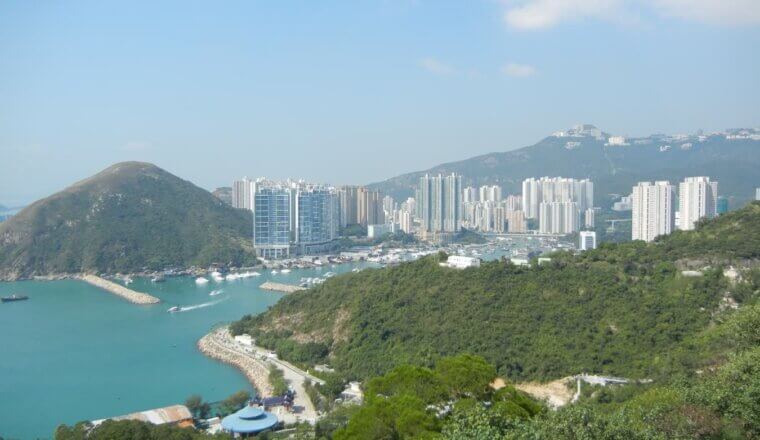
The 23 Best Things to Do in Hong Kong
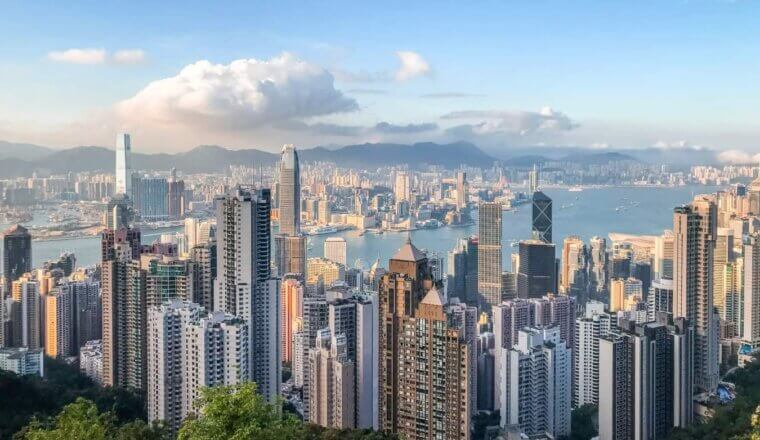
Hong Kong Itinerary: What to Do in 4 (or More) Days
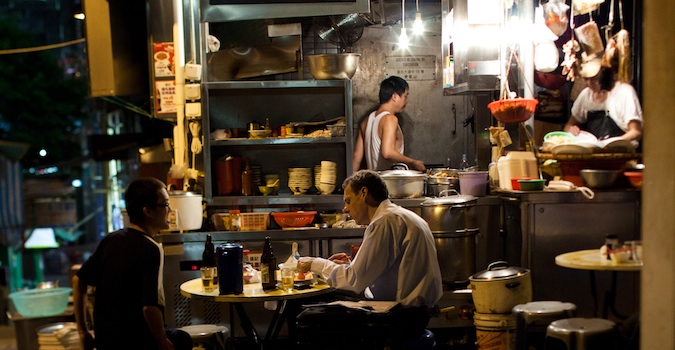
My Favorite Restaurants in Hong Kong

What Hitchhiking Solo as a Female in China Taught Me
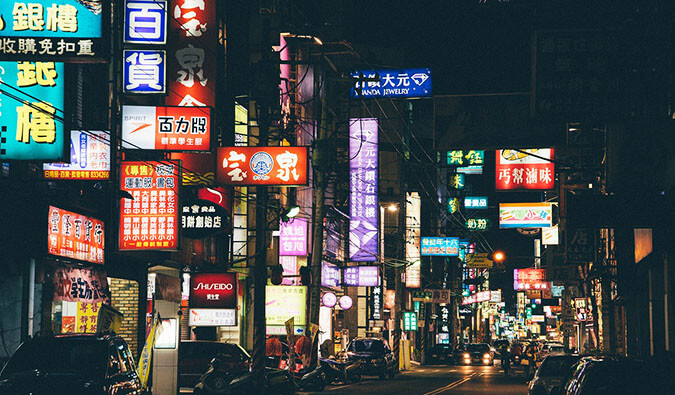
7 Lessons Learned from 3 Months in China
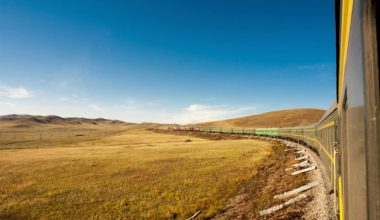
How to Travel the Trans-Siberian Railway
Get my best stuff sent straight to you, pin it on pinterest.
- Transportation
- Booking Resources
- Related Blogs
Your Best Guide to China
Visiting China soon? Start here

- Best China VPN
- Chinese culture
- Banned apps
- Apps in China
- Love in China
- Teach in China
- Provinces and regions
- Special offers
- 6 steps to get started
- Best places to visit in China
- What to bring to China
- What not to bring to China
- China packing list
- Tips for your first trip
- Tips for solo travel

Top 16 do’s and don’ts of texting Chinese girls
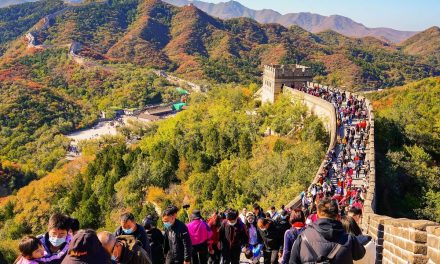
Best time to visit the Great Wall of China (2024)
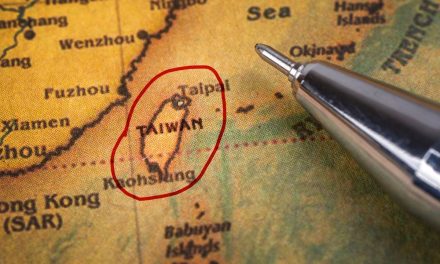
What are the main differences between China and Taiwan?
- Travel agencies
- Learn Chinese in China
- Learn Chinese online
- Study programs
- Internships
- Recruitment agencies
- Teacher recruitment agencies
- TEFL courses
- Volunteer programs
- Dating sites
- Travel insurance
Select Page
Planning a trip to China (6 steps to get you started)
Posted by Gayle Aggiss | Updated February 3, 2022 | Travel
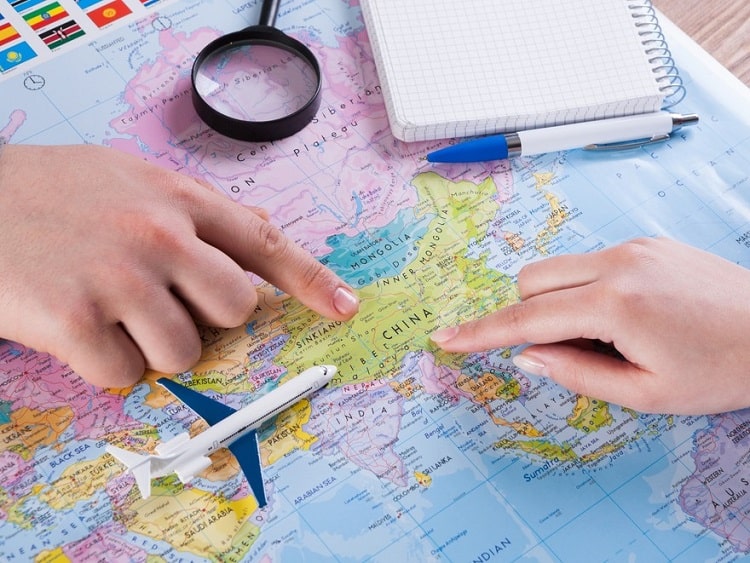
So, you’re planning a trip to China?
Get ready for sites that most travelers won’t ever see, a culture that’s incredibly different to your own, and food that will leave your mouth begging for more.
China has a lot to offer, and because it’s so huge and a little intimidating, some parts aren’t heavily traveled.
That gives you a unique opportunity to see and do things that will leave even your well-traveled friends marveling.
But going on vacation isn’t always smooth sailing, especially if you haven’t thought things through.
Don’t worry, though. I’ve lived and traveled in China and have laid out some key things for you to consider.
So, if you’re ready to take the plunge and plan a trip to China (once it’s safe to do so), here are six steps to help get you started.
1. Choose where to go
The first thing you need to do when you’re planning a trip to China is choose where you want to go.
This may seem obvious, but China is a massive country. Unless you’re planning on spending months there, you’ll never be able to see everything.
Every part of China is different too.
You might think that you know a lot about Chinese culture . But when you visit the country, you’ll realize that every region has its own unique culture, food, language, customs , beliefs and ways of doing things.
In fact, China is like a lot of small countries all pressed in close together!

When you travel there, the cities you want to visit will depend on what you want to see. But if you aren’t sure about where to go, you could take the well-traveled route.
Practically all tour packages include the big two – Beijing and Shanghai. Many tours will also include Xi’an, while Chengdu is an emerging place to visit (and for good reason, as outlined below).
But even if you’re traveling solo in China , the big cities are a decent starting point.
Everyone has heard about Beijing . It’s a mega-city with a lot of history behind it.
This is the place to travel to when you’re interested in exploring the country’s imperial history and its monuments.
And, importantly, this is one of the closest cities to well-preserved sections of the Great Wall of China.
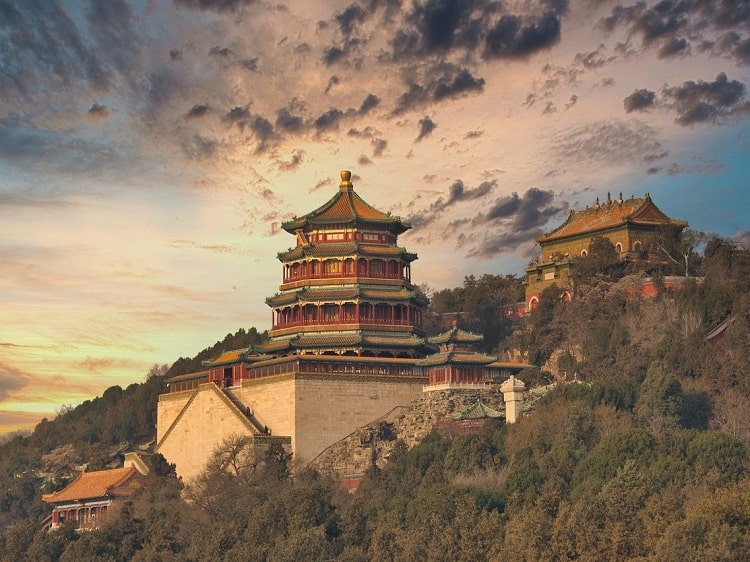
Summer Palace in Beijing. Image by H. Hach on Pixabay.
Beijing is located in the north of China, so the weather is generally cooler than other parts of the country. It’s particularly bitter in winter.
See also: What is the weather like in China?
Shanghai is an easy entry point into China. It’s a bustling modern city where you’ll find international shops and restaurants and a busy, vibrant culture.
A lot of the local people in Shanghai speak English, so you shouldn’t have too much trouble navigating the city.
That’s why, if you’re nervous about travelling in China, this city is the perfect place to start and gain some confidence.
This city is the home of the Terracotta Warriors.
It’s one of the most popular sights in China, and you can’t miss out on seeing them while you’re in the country.
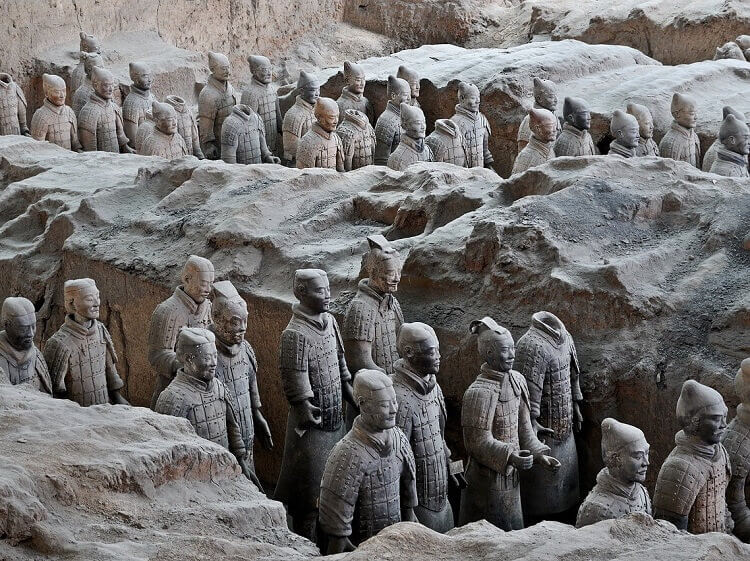
The amazing Terracotta Army. Image by Christel Sagnieze on Pixabay.
But Xi’an has even more to offer than these amazing pieces of history. Xi’an is near the center of China and its food reflects all the many influences around it.
So, if you’re looking to try a range of different Chinese cuisines, Xi’an is the perfect place to do it.
China is known for its panda population and Chengdu is their hometown.
In this big but fairly relaxed city, you can explore the life cycle of these iconic animals as well as see the efforts that are being made to preserve their habitat and protect the species.
There are also some historic landmarks in this city for you to explore and some unique spicy dishes as well!
If you’d prefer to get off the beaten path, here are just a few suggestions:
Zhangjiajie
If you’ve ever seen the movie Avatar, then you’ve seen Zhangjiajie.
The mountains in the movie were actually inspired by mountains in the Zhangjiajie National Forest Park , which should give you an idea of how amazing this part of the country is.

Famous Zhangjiajie. Image by YHBae on Pixabay.
It’s one of the most scenic areas in China and boasts dense forests, karst caves, awesome cliff peaks and incredible biodiversity.
If you’re travelling in China and tired of the big cities, this area is the perfect antidote.
You need a special pass to visit Tibet.
I recommend going to Chengdu and checking out the pandas and the touristy stuff there, as a way to acclimatize yourself to China.
Then, book a Tibet tour with a local, English-speaking travel agency . It’s usually cheaper this way.
Though I haven’t done it (it’s on my bucket list), you catch a bullet train with your tour group from Chengdu to Lhasa, the capital of Tibet.
The region is famous for its people, natural environment and wild animals including the Tibetan macaque .
Located in Guizhou, one of China’s poorer provinces, Guiyang is a mid-sized city with a population of over 3.5 million.
Guiyang’s biggest drawcard isn’t the town itself. Rather, it’s the extraordinary natural beauty and enchanting rural villages surrounding it.
If you have any interest in the diverse cultures of southern China’s ethnic minorities, the region offers an authentic and immersive cultural experience.
2. Choose the length of your trip
For most people who visit China as a tourist, it’s the trip of a lifetime.
So, if you’re unlikely to find yourself in China again, make sure that you take your time and see everything you want to see.
China is an enormous country, and has a lot of amazing, unique, and just plain unusual things to see.
That’s why you need to do your research first and make sure you know what your absolute must-sees are.
I would just write down what you want to see and allocate time for each place.
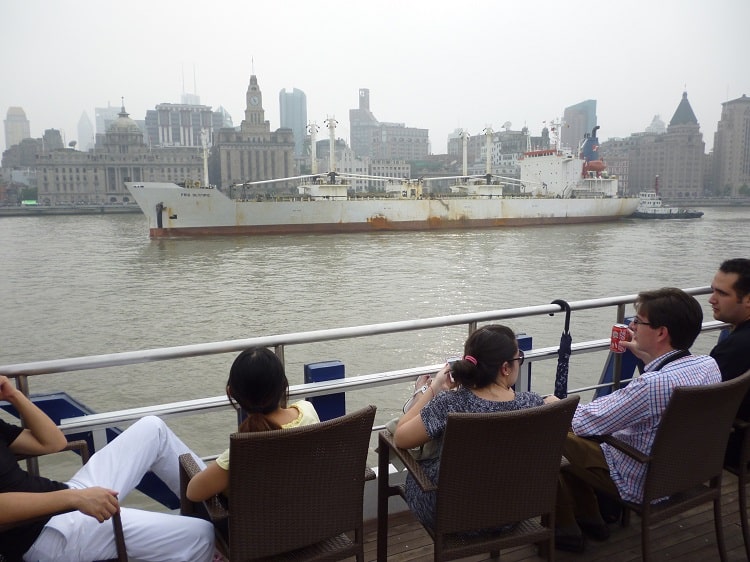
Try not to squeeze too much in a short time. Image supplied by Mike Cairnduff.
Keep some space in your itinerary to allow for things like travel between cities, unexpected delays, a ‘nothing day’ (e.g. if you want to spend time in the hotel), or even if you happen to get sick.
As a general guide, if you want to see two major cities and all their best sites, make sure you stay at least a week.
That way, you shouldn’t miss anything major.
Ten days would be ideal for a tour that includes Beijing, Shanghai and Xi’an.
The most important thing to do is not squeeze in a hundred things in a short period of time. Some tour packages are notoriously bad for this.
3. Choose when to go
The best times to travel in China are spring, from April to May, and fall, from September to October.
At this time of year, it isn’t too hot or too cold. And as an added bonus, these are the shoulder seasons, so your accommodation should be a little cheaper.
See also: When is the best time to visit Beijing and Shanghai?
There’s nothing worse than fighting with hordes of local tourists to see the best sights!
Try to avoid traveling during any national holiday in China, especially Chinese New Year which is in January or February depending on the lunar calendar.
During Chinese New Year, hundreds of millions of Chinese people return to their hometowns to celebrate the holidays with their families.
The transport systems in China are usually prepared to deal with these types of crowds. After all, it happens every year.
But it’s still a chaotic, stressful, and packed way to travel and should be avoided if at all possible.
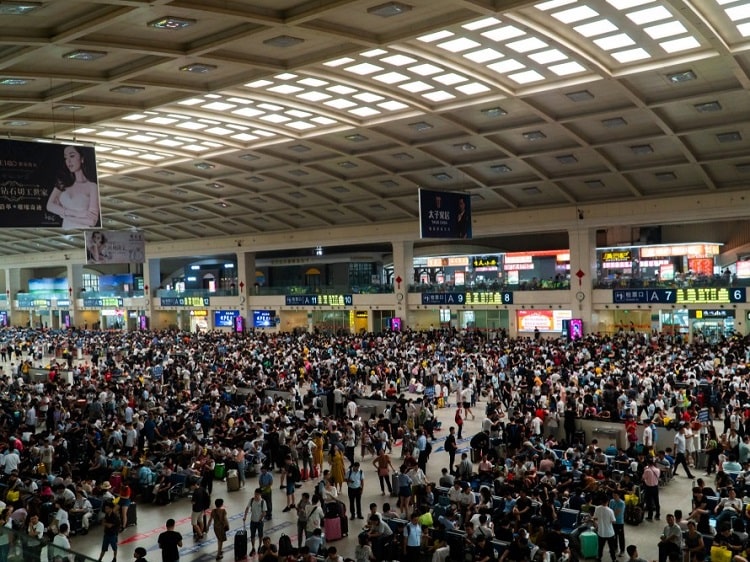
Train stations are crazy at Lunar New Year. Image by Maciej Zarzeczny on Shutterstock.
Prices for accommodation may also be higher during these periods and you might have trouble finding a hotel room at all.
This page lays out all the holiday dates to make planning a trip to China a bit easier.
4. Check out the visa requirements
Getting a visa can take some time, so make sure you start the process early. The last thing you want is to realize at the last minute that you need to have a visa and that you won’t be able to get it done it time.
I recommend starting the process at least a month before you plan to go, assuming you already have a passport.
If you need the visa processed quickly, you’ll need to pay more.
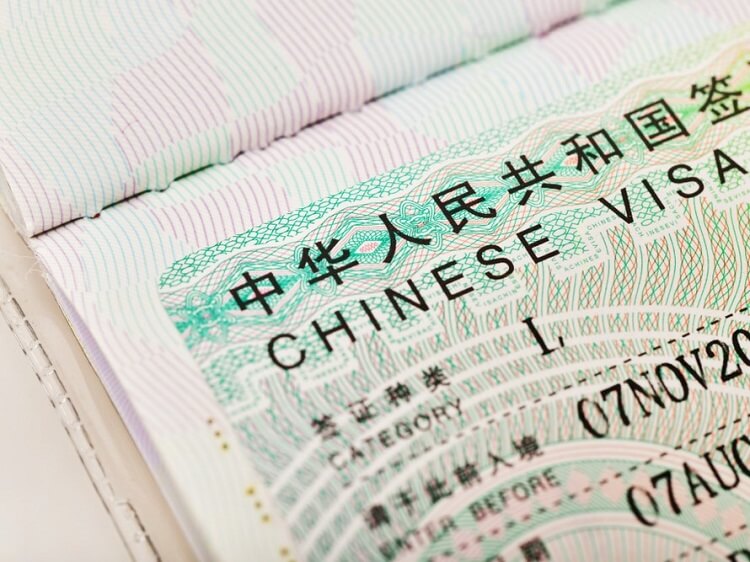
Chinese tourist visa. Image by i viewfinder on Shutterstock.
Time frames, costs and documentation requirements are different depending on the country you’re from.
So, check with your nearest consulate, chat with a travel agent or take a read of this helpful China visa guide .
Visa-free transit
You can take advantage of what’s known as the Visa-Free Transit initiative.
If you’ll only be in China for a short stay en route to somewhere else, you may not need a visa at all.
For rules and eligibility, check out the China visa guide .
5. Book accommodation and internal flights
As you would know, there are a plethora of hotel and flight booking sites available.
You’ve probably got your favorites, but one that’s great for domestic China travel is Trip. You can visit the site here .
Trip allows you to compare flights for Chinese airlines , book accommodation, and even book your train tickets. There’s an English version and the site is organized and reliable with an easy-to-use booking and confirmation system.
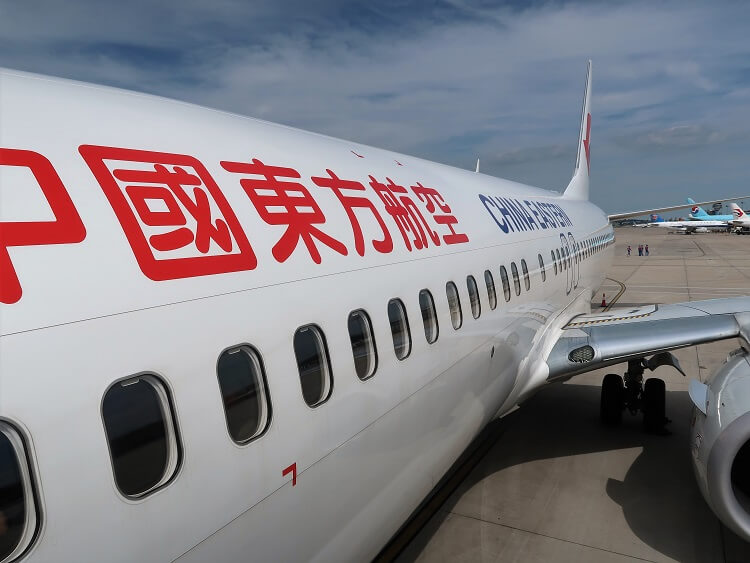
China Eastern is a big, local airline. Image supplied by Mike Cairnduff.
Agoda is also popular in Asia, particularly for hotel bookings .
Even if you choose to do a package tour in China, where all the accommodations are included, you may have days either side of your trip requiring your own bookings.
And that’s where sites like Trip and Agoda come in handy.
A word of advice about dirt-cheap tours to China
You may have heard about or even know someone who has been to China on a tour that was dirt cheap.
In this context, the old saying “You get what you pay for” could not be truer.
You may get an all-inclusive tour (i.e. flights, hotels, attractions and food) for just a couple of thousand dollars, but the airline could be dodgy, the hotels could be below average, and chances are you’ll be squeezed onto a big tourist bus.
That’s not my idea of a great vacation.
(If you’re interested, check out this scathing review about budget carrier Beijing Capital Airlines .)
6. Brace yourself for the Chinese culture and language barrier
If you step out of the tourist areas of major cities like Shanghai, you’ll encounter quite a substantial language barrier in China.
And, if you’re determined to go way off the beaten path, chances are that you won’t meet anyone who speaks English at all.
This is a substantial barrier to travelling in China, but it’s also one that will make your trip so much more exciting!
When you travel in China, you’re reliant on your own street smarts, independence and problem-solving skills. And that’s part of what will make your trip so exciting and memorable.
However, if traveling in a place where you can’t understand the locals is a problem, you can always try a tour.
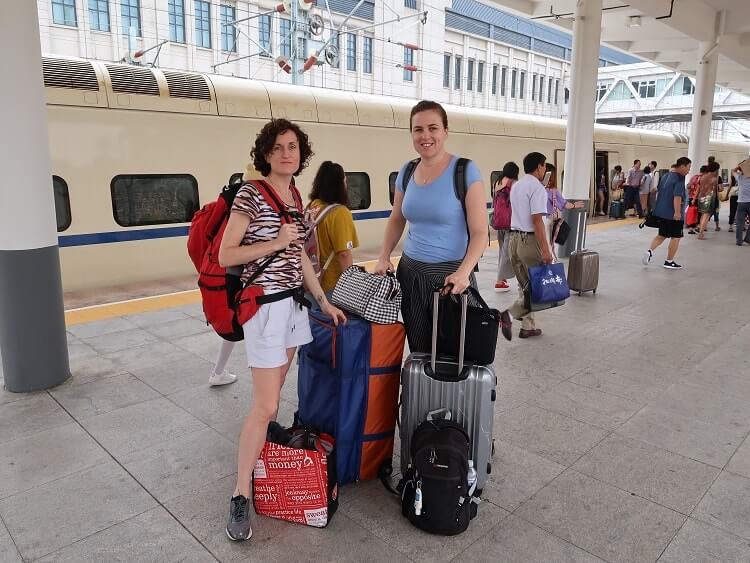
Get ready for big cultural differences when traveling in China. Image supplied by Mike Cairnduff.
There are countless companies that run tours through the most popular parts of China, and you could always do a tour for a few days until you’re comfortable enough to strike out on your own.
This is often a good way to get used to the general complexity of this huge and special country.
While the Chinese culture is beautiful and unique, it can also feel overwhelming and very different to what you’re used to.
Consider watching some movies about Chinese culture or even invest in a Chinese history book or two.
I’ve actually written an article about some of the quirks of the Chinese, like why they drink hot water and why some men have long fingernails (I kid you not). You can read about that here .
In summary, read up on Chinese culture when you’re planning a trip to China. It’ll make the adjustment a little easier.
Don’t forget your VPN!
In case you haven’t heard, the Chinese internet is censored.
This means you won’t have access to all your favorite sites like Google, Gmail, Facebook and Instagram unless you get a virtual private network (VPN) on your phone or laptop.
Check out this article for a VPN that works in China . Problem solved!
Why you should definitely plan a trip to China
China is a big, baffling, confusing, amazing and exciting country with a lot to offer travelers of all kinds.
The better you plan for China, the more you’ll get out of this once-in-a-lifetime experience.
Whether you want to visit for a week and just see the main sights or really immerse yourself for longer, you’ll come away from your trip to China with lots of stories, pictures, and the memory of every emotion you could imagine.
You may even end up like me and stay for a whole year!
Further reading
Planning your trip to China doesn’t end here. I’ve only just scratched the surface.
Take a read of one, or all, of these helpful articles:
- 10 tips for your first trip to China – super relevant for you
- Best places to visit in China – helps with your planning
- Apps you need for traveling to China – let’s get ‘appy!
If you have any questions, just let me know in the comments section below.
Want more helpful information about China?
Then hop on the monthly newsletter!
One more step: You must click the link in the email we just sent you to confirm your email address.
Commercial relationship disclosure: The Helpful Panda has commercial arrangements with organizations that may appear on this page, such as affiliate links. See our terms for more info.

Gayle Aggiss
Gayle loves learning and is intensely curious about the world. This curiosity has driven her to travel and work overseas, including China and Vietnam. Gayle is from Perth, Western Australia. You can follow her on LinkedIn .
Got a question or comment?
We welcome relevant and respectful dialogue. See our terms for our comment policy.
More Great Content
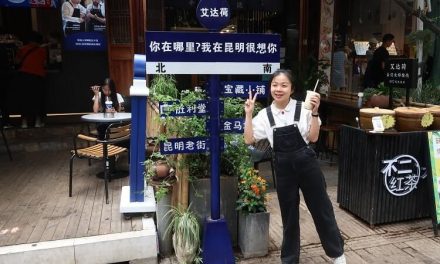
Best things to do in Kunming (expat tips and photos)
Updated September 4, 2023

What to wear in China
Updated April 29, 2023
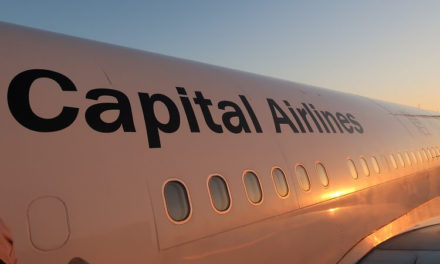
Beijing Capital Airlines review (in one word: horrid)
Updated October 12, 2023

Best things to do in Xiamen (expert tips and photos)
Updated August 24, 2023
Recent Posts

Recent Comments
- Mike Cairnduff April 29, 2024 on Best things to do in Kunming (expat tips and photos)
- Mike Cairnduff April 29, 2024 on Can I bring nuts to China?
- Candice Adelson April 29, 2024 on Can I bring nuts to China?
Ads space (New)

Explore China
Do you want to build your career in China?
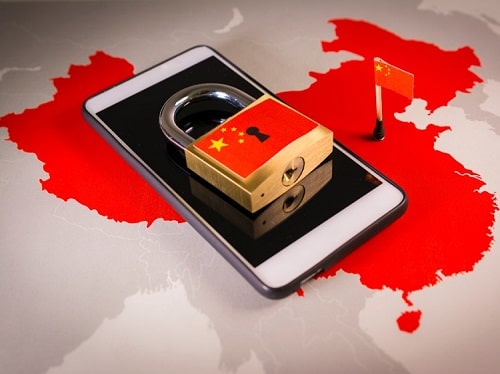
Our writers have all experienced China in person. Support them by subscribing to the free monthly newsletter about visiting China.

- [email protected]
- 86-773-286-5632 (Intl rates apply)

How to Plan Your First China Trip 2024
Until November 30th, 2024 , ordinary passport holders of France, Germany, Italy, Netherlands, Spain, Switzerland, Ireland, Hungary, Austria, Belgium, Luxembourg, and Malaysia can enjoy a 15-day visa-free entry to China.
You can start planning your trip to China now! We will provide you with a flexible, tailor-made private tour of China .
Thinking of traveling to China?
China, with its long history and unique culture, maybe a must-visit place for you. The numerous destinations, vast geography, and unintelligible language make trip planning appear challenging. Is this true? Not at all!
Our 11 easy-to-follow tips, based on our 25+ years of experience in custom travel, will help you create the perfect itinerary with ease. So, if you want to plan your first China trip effortlessly and make the most of your vacation, read on!
- 1. Determine Your Travel Duration
- 2. Choose How Long to Spend
3. Decide on the Travel Season
4. consider budget and affordability.
- 5. Consider Travel Type
6. Research China Visa Policy
7. get to/around china.
- 8. Know How to Access Your Money
- 9. Organise Travel Insurance
- 10. Stay Safe and Healthy
- 11. Pack for China Trip
12. Travelling with Kids to China
1. determine your travel duration in china.
Considering your time constraints, it is recommended to choose 2-3 cities for a more immersive travel experience, allowing you to explore the culture and attractions of China in depth.
After years of experience and feedback from our travelers, we have found that the best destinations for a first-time trip to China are Beijing, Xi'an, and Shanghai . The classic three-city tour takes about 8 days. Click to check the itinerary of the 8-Day Classic China Tour
If you have an additional 3 to 4 days , we recommend visiting one of the following cities: Guilin, Chengdu, or Zhangjiajie.
1) Take a Classic China Tour to Beijing, Xi'an, and Shanghai
Beijing – China's capital and a major gateway to the country.
Start your trip in the capital city, Beijing. Explore the historic Forbidden City, walk along the Great Wall of China, and visit the Temple of Heaven. Don't miss the ancient alleyways of Hutong and the impressive Summer Palace.
To cover the city's highlights, you would need about 3-4 days.
Xi'an – the place to go if you are interested in history.
Discover why Qin Shi Huang built the marvelous Terracotta Warriors, one of the world's most significant archaeological discoveries. Explore the city's well-preserved city walls, visit the Big Wild Goose Pagoda, and sample delicious local dishes.
With so much to see, you could spend 2 days here and it's only a 4-6 hour high-speed train ride from Beijing.
Shanghai – China's biggest and most prosperous city.
Explore Shanghai's blend of history and modernity with a 1-2 day tour and extend your itinerary for 2-8 days to nearby Suzhou, Hangzhou, or Huangshan for more culture-rich experiences.
Want to start planning your private China tour now? Click on the tailor-made tour to arrange your unique trip.
2) Extend Your Trip to Guilin, Chengdu or Zhangjiajie
Guilin – the perfect destination to immerse yourself in natural picturesque landscapes, ethnic culture, and rural scenery.
Take a Li River Cruise to Yangshuo and soak in the stunning scenery. Cycle around the picturesque Yangshuo countryside, hike the Longji Terraced Fields and try exciting outdoor activities like Ferrata, Drifting, Kayaking, and more.
You can easily spend 3-4 days enjoying Guilin and its surroundings.
Chengdu – the home of the Giant Panda and famous Sichuan cuisine.
You have a chance to get close to the fluffy Pandas, marvel at the towering Leshan Giant Buddha, and pray at the Golden Summit of Mount Emei. Don't miss authentic Sichuan dishes like kung pao chicken and spicy hotpot.
You can enjoy all these experiences and more in Chengdu, which typically requires around 2-4 days to fully explore.
Zhangjiajie — offers a wonderland of natural landscapes and exciting outdoor activities perfect for a 3-4 day trip.
Take a cable car up to the Avatar Hallelujah Mountains, walk through the thrilling Grand Canyon Glass Bridge, and trek the 999 steps up to Tianmen Mountain.
If you are interested in exploring other parts of China, such as Lhasa for Tibetan culture, Yangtze River for the Three Gorges Dam, and Dali, Lijiang, and Shangri-la for a diverse range of minority cultures and history, don't hesitate to contact us.
We can organize a custom tour that is tailored specifically to your needs and preferences.
2. Choose How Long to Spend in China
Evaluate how much time you have for your trip. China's vast size means you may need to prioritize certain areas if you have limited time. For a first-time visit, it's recommended to allocate at least one week to explore this fascinating country.
For 7-10 days , we suggest visiting China's "Golden Triangle," which includes Beijing for 3-4 days, Xi'an for 2 days, and Shanghai for 1-2 days. You can refer to our 8-Day Classic China Tour for more information.
If you have 11-16 days , you can discover more of China, such as the beautiful Guilin, charming Chengdu, wonderful Yangtze, etc. Check out our carefully selected 13-Day China Adventure Tour , and 16-Day Panoramic Impression of China .
If you want to get more inspiration, please contact us about your requirements, including the length of your holiday. Our experienced travel specialists can design a travel plan tailor-made to your needs, ensuring a uniquely fulfilling experience.
The best time to travel to China depends on your interests, the region you want to visit, and also the time you have.
The most popular China tourist hotspots of Beijing, Xi'an, and Shanghai are suitable to visit all year round .
Usually, spring (April and May) and autumn (September and October) are the most comfortable and recommended times for a China tour. If you want to travel comfortably without too much sweating and not too much rain, that's the best time.
The summertime from July to August is hot in the afternoon in some places, but air conditioning and expert arrangements will help you to avoid the heat as much as possible. Meanwhile, there are various summer activities for you to experience.
During the winter from December to February (except the Chinese New Year and New Year's Day), there are fewer travelers with better prices. So you could enjoy the benefits of the 'low season'.
Check more detailed tips on the Best Time to Go to China .
China is not the cheapest country to explore, but some good planning can save you a lot of money. Your budget will influence both your destination choice and the duration of your trip. Larger cities like Beijing and Shanghai tend to be more expensive, while rural areas may offer more affordable options. Research the cost of accommodations, transportation, and activities in different regions to make an informed decision.
Usually, international airfare is the largest cost item. The airfare from the US or Europe to China costs about US$1200 to US$4,000 for a direct economy round trip.
However, it is possible to save a lot if you get a great deal or take stopovers. We recommend you start to look for flights as soon as your travel date is fixed.
You can expect to spend about US$180–350 per person per day on a high-quality China tour based on 2 person group, including domestic flights/trains, 3/4/5-star hotels, attractions, meals, private tour guides, and vans.
China's peak tourist seasons typically take place during the first weeks of May and October summer holidays and Chinese New Year(around late January or early February ).
During these periods, the price differences between peak and low season can be quite significant, with hotels and airfares going up by anywhere from 30% to 50% or more.
To avoid higher costs during peak season, we suggest you book your travels at least two months in advance. If you book with us, we offer a guarantee of a 100% refund if you cancel your travel plans up to three weeks before departure.
5. Consider Traveling Independently or Taking a Guided Tour
Should you go to China with an organized tour through a tour agency, or make the tour arrangements yourself? It depends on your needs.
Take a Private Tour
A private tour is the best option for you if you want to have deeper experiences in China.
A private guided tour is always to help you maximize your time and ensure a worry-free and more enjoyable trip for you.
If you're considering taking a private China tour, it's very important to choose a reliable and trustworthy travel agency, like ChinaTravel . We have 25 + years of experience in creating custom tours .
You can be guided as much or as little as you like. Our professional trip advisers will customize a tour that suits your budget and interests, and local drivers and guides will make your trip a carefree and insightful experience.
Based on 91 reviews
LiPing best guide for Guilin
I visited Guilin for the first time in October 2023 and only had a 2-day window. Absolutely worth a packed full 2-day tour. And, LiPing with her love of this land and her enthusiasm, made a huge difference for me...
2 Day Private Tour Highlights Guilin, Li River Cruise and Yangshuo
I had a great experience during this private 2 days tour organized by Vanessa at China Travel and guided by Gary, a highly professional, friendly and knowledgeable guide...
4-star Li River cruise
It was fabulous and met my expectations. It was part of a 4-day private tour in Guilin. The local guide - Henry - was courteous, knowledgeable, professional, patient, and very flexible and accommodating...
david_kt_yu
Trusted, friendly, concise and highly recommended
We were on a 4 day trip to Guilin and Yangshuo covering the highlights. The tour guide, Ms Yang, gave us the highlight of our lives when we traveled to the cities...

Tour as A Group
Advantage: You can spend less money to see China's key sights and have more security.
Disadvantage: The downsides of this option are the lack of flexibility and the that you can only scratch the surface of Chinese culture.
Travel Independently
Advantages: If you are an adventurer or you have a great deal of time to plan an itinerary, you can do a lot of preparation to book transportation tickets, hotels, etc.
Disadvantages: It is not easy for first-time visitors to have a smooth solo trip in China. In addition to a lot of hard work, study, planning, and bookings, once you are on the ground, you may waste time trying to get to places and end up seeing less.
There will also be numerous problems to overcome, such as an unfamiliar language and it is not always the cheapest option.
Most people require a visa when traveling to China. We recommend that you apply for your Tourist Visa (L visa) one to two months before your departure date .
However, do not apply too early because China visas are usually valid for only three months from the date of issue.
Alternatively, you can take advantage of the 144-hour visa-free transit policy or apply for a port visa, which makes it easier for you to take a China tour.
If you book with us, we will provide you with an invitation letter that you will need to apply for a tourist visa. Just contact us about your tour needs.
Getting to China has become easier due to the increasing number of non-stop flights from several cities in the USA, Europe, Australia, Singapore, and other countries and regions. More routes to China will be added soon.
Keep in mind that booking your flight at the very last minute can be expensive.
To ensure the best travel experience, make sure you start booking your flights as early as possible and select the most suitable option for your needs, such as direct flights, flights with stopovers, and so on.
When traveling between cities in China, there are many options like flight and train, and the most “Chinese-style” way is to travel by high-speed train , which is fast, convenient, punctual, comfortable, and reasonably priced.
8. Know How to Access Your Money in China
The official currency of China is the Ren Min Bi, often called RMB or CNY (Chinese Yuan), and is used throughout the Chinese mainland. It is commonly referred to as kuai (pronounced kwai) by locals.
The exchange rate between the CNY and dollar and Euro is 1 USD = about 7 CNY, 1 Euro = about 8 CNY, which of course can change.
Download “Digital Money Pocket” – Alipay/WeChat Pay
Cash-free travel, sounds exciting? Chinese people nowadays pay bills via two very practical and convenient payment apps, Alipay/WeChat Pay.
You don't need to worry about how much cash to bring when traveling in China and taking your wallets out anymore – a smartphone can handle all shopping requirements.
From high-end restaurants to wet markets to street vendors, just show your Alipay/WeChat Pay QR code and pay the bills!
Use a Credit/Debit Card
Hotels, standard restaurants, and large shopping malls in big cities accept credit/debit cards.
But please be aware that many restaurants and mall shops will not accept plastic. They are rarely used here, so even if a company officially accepts a credit/debit card, it might not have working hardware for using it.
Prepare Chinese Cash
You may need cash for small purchases in China: taxis, small shops, restaurants, etc. You could withdraw from the ATMs in airports and big malls.
9. Organise Your Travel Insurance for China
Travel Insurance will make your trip financially safer. It is not only for medical emergencies, but also for assisting in cases of lost baggage, trip delays, or interruptions because of snowstorms, heavy rains, and evacuations.
The price of insurance may seem expensive, but it could potentially save you a significant amount of money.
When purchasing insurance, pay attention to what is covered and to what amount. Choose a suitable one rather than just selecting the cheapest option.
10. Stay Safe and Healthy
Is China safe? Yes! China is a country with many places with good policing, tight gun control, and relatively few natural disasters and health risks.
Chinese people are friendly and trustworthy. However, crime, bad weather, and accidents do happen, so buying Travel Insurance is important.
Is Chinese food safe? If you go to reputable establishments, yes, but take care of street stalls and avoid less hygienic eateries.
Can I drink running water? No! Most tap water in China needs boiling (well) before drinking. In some areas avoid tap water altogether and buy bottled water.
11. Pack for Your China Trip
With only one week left, it's time to start packing. Make a checklist of items you need and pack according to your destination, especially if you are traveling with children.
The economy class seat on International flights generally allows 23kg per person while domestic flight in China limits it to 20kg per person.
Be sure to include important documents such as your passport and China visa, and pack luggage essentials such as a travel adapter and chargers.
Additionally, pack appropriate clothing for your destination. For example, T-shirts and sunglasses are suitable for summer, while a down jacket and sweater are necessary for winter.
Traveling with children requires patience and flexibility, so be prepared to adapt your plans based on their needs. Embrace the opportunity for your family to create lasting memories and experiences together in China.
Plan child-friendly activities : Research and include activities that are suitable for children. Look for interactive museums, parks, zoos, amusement parks, and cultural experiences that can engage and entertain them.
Choose family-friendly destinations : Consider destinations that offer suitable facilities and amenities for families. Beijing, Shanghai, and Hong Kong have a range of child-friendly attractions and accommodations. It's also worth exploring smaller cities known for their family-friendly environments, such as Chengdu and Guilin.
Pack essential items : Pack appropriate clothing for the weather, sufficient diapers and baby supplies (if applicable), snacks, toys, books, and entertainment for the kids during the trip. Consider carrying a stroller or baby carrier for younger children.
Choose child-friendly accommodations : Look for hotels or vacation rentals that cater to families. Check for amenities like childproofing, cribs, high chairs, and play areas. Consider options that provide larger rooms or interconnected rooms to accommodate your family comfortably.
Recommended China Tours for 2024/2025
All of the itineraries on our website can be tailored further to fit your needs . You can easily add whatever interests you. They are hand-picked by us from many options and can be adjusted as we go along.
Below are some of our most popular tour packages.
You can use them as a guide and a starting point. We are here to make your tour easier and more fun. We are ready! Are you?
- 8-Day Beijing - Xian - Shanghai Tour - classic Golden Triangle trip
- 11-Day Beijing - Xian - Guilin - Shanghai - Immerse in China history and Natural Landscape
- 13-Day Beijing - Xian - Chengdu - Guilin - Yangshuo - Shanghai Tour - good for adventure and panda lovers
- 16-Day Beijing - Xian - Lhasa - Yangtze River - Shanghai Tour - to know Tibetean culture and natural landscape
Request a custom itinerary today and get one step closer to your personalized trip
Create Your Trip

- Visa Application Helpline
Subscribe to our newsletter
Learn how to live a sustainable long-term travel lifestyle.
By signing up, you agree to the our terms and our Privacy Policy agreement.
Top 27 Places to visit in Darjeeling, Explore the Beautiful Hills of Darjeeling
Top 10 things to do when traveling to shimla: shimla travel guide, the ultimate paris travel guidelines for first timers | top attractions & things to do.

The Ultimate China Travel Guide: Unlocking China’s Splendors
China, a country of immense beauty and captivating diversity, is a destination that promises to leave you with an indelible impression on every traveler. With its rich tapestry of ancient history, breathtaking landscapes, vibrant culture, and modern marvels, this vast nation offers something for every type of adventurer.
In this blog, I will share with you the ultimate China Travel Guide to assist you in uncovering the most unforgettable experiences that this extraordinary country has to offer.
Find the best time to visit China, plan your trip, explore top destinations, and budget for your adventure to make the most out of your trip to China!
WHAT IS COVERED IN THIS ARTICLE?
The Ultimate China Travel Guide: How to Plan a Trip to China

A trip to China can be an exciting adventure, as it offers you a rich tapestry of cultural experiences, breathtaking landscapes, and historical marvels. However, to make the most of your journey and avoid unnecessary hiccups, thorough planning is essential.
But why should you put so much effort on planning this trip? Thorough planning is essential for a successful trip to diverse China as it:
- It maximizes your overall experience.
- It eases communication with locals.
- Planning simplifies the visa application process.
- It helps in optimizing your budget for the trip.
- It also allows customization of your visit to match your interests.
Step-by-Step Guide on Trip Planning
Here’s a step-by-step guide to help you plan your trip to China effectively:
Determine Your Travel Goals: Identify the regions and attractions you want to explore, whether it’s the Great Wall of China, the Terracotta Army, or the bustling streets of Beijing.
Set a Budget: Determine how much you’re willing to spend on your trip and allocate funds for different expenses such as flights, accommodations, food, and activities accordingly.
Check Visa Requirements: Depending on your nationality, China’s visa requirements may vary. Research and apply for the appropriate visa well in advance.
Choose the Best Time to Visit: China experiences different climates in different regions. Consider the weather and your preferred travel dates when deciding the best time to visit.
Book Flights: Search for flights to China, compare prices, and book your tickets. Major international airports like Beijing, Shanghai, and Guangzhou are common entry points.
Accommodation: Research and book your accommodations, considering your budget and preferred location. Options range from luxury hotels to budget-friendly hostels.
Create an Itinerary: Plan your daily activities and sightseeing. Include popular attractions, local experiences, and time for relaxation.
Learn About Local Culture: Familiarize yourself with Chinese customs and etiquette, which can enhance your travel experience.
Pack Smart: Pack suitable clothing and essential items for your trip, considering the weather and activities.
Stay Informed: Keep an eye on travel advisories and any specific travel restrictions or health-related guidelines related to China, especially if you’re traveling during unusual times.
By following these steps, you’ll be well-prepared for your adventure in China and can focus on immersing yourself in the country’s wonders!
Tips on Visas, Flights, and Accommodations
- Visas: Check the Chinese embassy or consulate website for the most up-to-date visa requirements. Ensure your passport is valid for at least six months beyond your intended departure date.
- Flights: Use flight comparison websites or apps to find the best deals on airfare. Be flexible with your travel dates to potentially score lower prices.
- Accommodations: Consider booking your accommodations through trusted platforms like Airbnb, Booking.com , or directly through hotels’ websites. Read reviews and select lodgings that cater to your preferences.
Best Time to Visit and Travel Restrictions
Here is a complete guide covering all the seasons:
Spring in China
Spring in China is a beautiful time to visit, with landscapes bursting into bloom. The weather is mild and sunny, with average temperatures ranging from 10 to 20 degrees Celsius. This makes it ideal for sightseeing and outdoor activities, such as hiking, biking, and visiting temples and gardens!
Some of the best places to visit in China during the spring include:
- Beijing : The Forbidden City, the Great Wall of China, and the Temple of Heaven are all must-see attractions in Beijing. During the spring, the city’s parks and gardens are also in full bloom.
- Shanghai : Shanghai is a vibrant city with a lot to offer visitors. In the spring, you can enjoy the city’s many parks and gardens, visit the Bund waterfront, or take a boat trip on the Huangpu River.
- Xi’an : Xi’an is home to the Terracotta Warriors, one of the most amazing archaeological discoveries of all time. In the spring, you can also visit the city’s many temples and mosques, or take a day trip to Mount Huashan, a sacred mountain known for its challenging hiking trails.
- Guilin : Guilin is known for its stunning scenery, including limestone karsts, rivers, and lakes. In the spring, you can take a boat cruise on the Li River to see the karsts up close, or visit the nearby town of Yangshuo for its laid-back atmosphere and scenic bike trails.
Summer in China
Summer in China can be hot and humid, especially in the south. Average temperatures range from 25 to 35 degrees Celsius, with high humidity levels. However, there are still many things to see and do in China during the summer, such as visiting beaches, hiking in the mountains, and attending festivals!
Some of the best places to visit in China during the summer include:
- Sanya : Sanya is a popular beach resort town in southern China. In the summer, you can enjoy the city’s many beaches, go swimming, snorkeling, or diving.
- Lijiang : Lijiang is a UNESCO World Heritage Site known for its well-preserved ancient town. In the summer, you can enjoy the town’s many canals and bridges, or take a day trip to Jade Dragon Snow Mountain.
- Harbin : Harbin is the capital of Heilongjiang province in northeastern China. It is known for its cold winters and its annual International Ice and Snow Festival.
Autumn in China
Autumn is another beautiful time to visit China. The weather is mild and sunny, with average temperatures ranging from 15 to 25 degrees Celsius. The leaves on the trees turn red and yellow, creating stunning scenery throughout the country.
Some of the best places to visit in China during the autumn include:
- Beijing : The Forbidden City and the Temple of Heaven are especially beautiful in the autumn, when the leaves on the trees turn red and yellow.
- Jiuzhaigou National Park : Jiuzhaigou National Park is a UNESCO World Heritage Site known for its stunning lakes, waterfalls, and forests. In the autumn, the park’s leaves turn red and yellow, creating a magical landscape.
- Huangshan Mountain : Huangshan Mountain is a sacred mountain in Anhui province. It is known for its towering granite peaks, pine trees, and clouds. In the autumn, the mountain’s leaves turn red and yellow, creating a breathtaking sight.
Winter in China
Winter in China can be very cold, especially in the north. Average temperatures range from -10 to 5 degrees Celsius, with snowfall common in many parts of the country. However, there are still many things to see and do in China during the winter, such as skiing, visiting hot springs, and attending festivals!
Some of the best places to visit in China during the winter include:
- Harbin : Harbin is known for its cold winters and its annual International Ice and Snow Festival. During the festival, you can see giant ice sculptures, snow castles, and ice slides.
- Yabuli Ski Resort : Yabuli Ski Resort is one of the largest ski resorts in China. It is located in Heilongjiang province and offers a variety of ski trails for all levels of skiers and snowboarders.
- Guilin : Guilin is also a popular winter destination, as the weather is mild and there are fewer tourists than in the summer.
No matter what time of year you choose to visit China, you are sure to have a memorable experience!
Top 10 Tourist Attractions in China
1. the great wall of china.

First on this list is The Great Wall of China , an architectural marvel that is etched into history. It beckons you to embark on an awe-inspiring journey through time. Located in northern China, this UNESCO World Heritage site is a testament to human ingenuity and perseverance.
You must visit here to experience the majestic allure of China’s rich history and resilience. Visiting this iconic structure allows you to walk in the footsteps of emperors and soldiers, offering a profound connection to the nation’s past.
The main attractions you must visit along the Great Wall include popular sections like Badaling, Mutianyu, and Jinshanling, each with its unique features and scenic vistas. You can hike along the wall, explore watchtowers, and capture breathtaking panoramic views of the surrounding landscape!
Best Time To Visit The Great Wall of China: The best time to visit is during the spring or autumn when the weather is pleasant, and the landscapes burst with color. To avoid the crowds, consider weekdays and early mornings for a more serene experience.
2. The Terracotta Army

Next is the Terracotta Army , an archaeological wonder nestled in Xi’an that invites you to delve into the fascinating world of ancient history and artistic mastery. This UNESCO World Heritage site is a testament to the power and legacy of China’s first emperor, Qin Shi Huang!
You must visit here to view this testament to human ingenuity and artistry. It’s an ancient marvel that showcases the craftsmanship of thousands of life-sized clay soldiers, horses, and chariots, created over two millennia ago to guard the tomb of Emperor Qin. A visit offers you a rare glimpse into the depths of China’s rich imperial history!
The main attractions you should visit within the site include the three massive pits containing the Terracotta Army, each revealing different aspects of the ancient soldiers’ roles and weaponry.
Best Time To Visit The Terracotta Army: The best time to visit is during the spring or autumn when the weather is pleasant and the site is less crowded. Arrive early in the morning to make the most of your visit and avoid the midday rush.
3. The Forbidden City

Another amazing place to visit in China is The Forbidden City , a UNESCO World Heritage site that beckons you to embark on a journey through the heart of imperial China. Located in the heart of Beijing, this historic palace complex is a must-visit destination if you seek a glimpse into the rich tapestry of Chinese history.
You must visit Forbidden City because it is an unparalleled repository of Chinese culture and heritage. As the former imperial palace for over five centuries, it offers you a unique opportunity to witness the grandeur and opulence of the Ming and Qing dynasties.
The main attractions within the Forbidden City you must visit include the Hall of Supreme Harmony, the Palace of Heavenly Purity, and the Imperial Garden. Don’t miss the Palace Museum, which houses countless treasures, or the awe-inspiring Meridian Gate!
Best Time To Visit The Forbidden City: The best time to visit is during the spring or autumn when the weather is mild, and the gardens are in full bloom. Avoid the peak summer and winter months to enjoy a more comfortable experience.
4. The Li River Scenic Area

The next best place to visit in China is The Li River Scenic Area . Here, You get to explore an enchanting natural landscape that has inspired poets and artists for centuries. Located in the Guilin, Guangxi Zhuang Autonomous Region of China, this destination beckons you to experience the sublime beauty of the region.
You must visit here to experience the otherworldly karst landscape, where picturesque limestone peaks rise dramatically from the water’s edge. As you drift along the river on a leisurely cruise, you’ll be surrounded by breathtaking scenery straight out of a traditional Chinese painting.
The main attractions you must not miss within the Li River Scenic Area include the unique karst formations such as Elephant Trunk Hill, Nine Horses Mountain, and the Yellow Cloth Shoal. The charming town of Yangshuo, with its vibrant street markets, is another highlight you must explore.
Best Time To Visit The Li River Scenic Area: The best time to visit is during the spring or autumn when the weather is pleasant, and the landscape is at its most picturesque. The lush greenery of spring and the golden hues of autumn enhance the region’s natural beauty.
5. The Zhangjiajie National Forest Park

Next place on this list is Zhangjiajie National Forest Park which is a natural wonder that invites you to step into a realm of surreal landscapes and captivating beauty. Located in Hunan Province, this UNESCO World Heritage site is a must-visit destination for nature enthusiasts and adventure seekers!
If you love nature, you must visit here to explore its towering sandstone pillars and lush greenery, which served as inspiration for the breathtaking landscapes in the movie “Avatar.” It offers an otherworldly experience that feels like a journey through a fantasy world!
The main attractions within the park you can explore include the Avatar Hallelujah Mountain, the mesmerizing Tianzi Mountain, and the awe-inspiring Golden Whip Stream. The Zhangjiajie Glass Bridge, the world’s highest and longest glass-bottomed bridge, is also a thrilling addition to your visit.
Best Time To Visit The Zhangjiajie National Forest Park: The best time to visit is during the spring or autumn when the weather is comfortable, and the landscape is at its most vibrant. To avoid crowds, aim for weekdays and early mornings.
6. Potala Palace
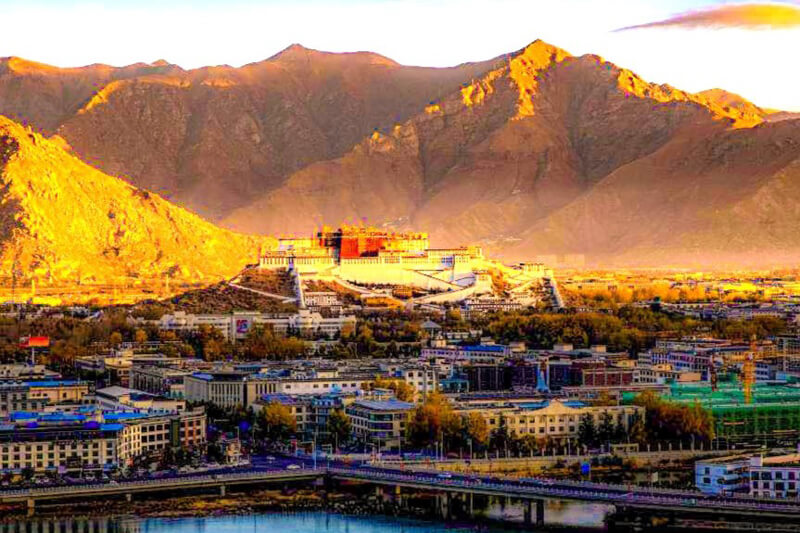
The Potala Palace , a UNESCO World Heritage site in Lhasa, Tibet, invites you to embark on a spiritual and architectural journey like no other. Perched on the Red Hill, this iconic palace is a testament to Tibetan culture, history, and the enduring legacy of Buddhism.
You must visit here to explore this symbol of Tibetan Buddhism and a reflection of Tibet’s rich heritage. It’s not only an architectural masterpiece but also a pilgrimage site for Buddhists worldwide. Visiting here is an opportunity for you to immerse yourself in the spiritual and cultural heart of Tibet!
The main attractions within the Potala Palace include the White Palace, the Red Palace, and the sacred chapels and shrines. The murals, sculptures, and ancient artifacts provide you a glimpse into Tibetan history and artistry.
Best Time To Visit The Potala Palace: The best time to visit is during the spring or early autumn when the weather is relatively mild, and the skies are clear. Be aware that the palace has limited daily visitor slots, so it’s advisable to book your tickets well in advance.
7. Emperor Qinshihuang’s Mausoleum Site Museum

The next amazing place to visit in China is the Emperor Qinshihuang’s Mausoleum Site Museum . Located in Xi’an, China, it is an archaeological wonder that invites you to journey back in time to the ancient Chinese empire. This UNESCO World Heritage site is a testament to the First Emperor’s grandeur and the rich history of the Qin Dynasty.
You must visit here as this museum is home to the renowned Terracotta Army, an army of life-sized clay soldiers and horses that were buried alongside the First Emperor to protect him in the afterlife. It’s also a remarkable display of ancient craftsmanship and an extraordinary historical artifact.
The main attraction within the museum is, of course, the Terracotta Army, but it also includes various other artifacts and exhibits that provide you insights into the life and times of Emperor Qin Shi Huang. The Bronze Chariots and Horses Exhibition Hall is a must-see addition.
Best Time To Visit Emperor Qinshihuang’s Mausoleum Site Museum: The best time to visit is during the spring or autumn when the weather is comfortable, and the crowds are less overwhelming. Be sure to arrive early to avoid the peak visitor hours.
8. The Bund

The Bund , a historic waterfront promenade in Shanghai, is another gorgeous place for you to experience the city’s rich past and vibrant present. This iconic destination is a testament to Shanghai’s evolution from a trading port to a modern metropolis.
You must visit here to experience this captivating juxtaposition of old and new. On one side, you’ll find a collection of colonial-era buildings showcasing European architecture, while on the other, you’ll be greeted by the futuristic skyscrapers of Pudong.
The main attractions along The Bund you can visit include the Peace Hotel, Customs House, and the Bund Sightseeing Tunnel, which takes you beneath the river to Pudong. The area comes to life at night when the buildings are illuminated, creating a breathtaking urban spectacle!
Best Time To Visit The Bund: The best time to visit is in the evening, as the Bund truly comes alive with its dazzling lights and stunning skyline views. The months of spring and autumn offer the most pleasant weather for exploring this iconic waterfront.
9. Leshan Giant Buddha

The Leshan Giant Buddha is another perfect place to visit in China. Located near Leshan City in Sichuan, It is a monumental masterpiece of ancient art and engineering that calls you to explore its serene majesty. This UNESCO World Heritage site is a captivating symbol of Buddhism’s enduring influence and a testament to human ingenuity.
You must visit here to see the largest stone Buddha statue in the world, standing at a towering 71 meters (233 feet) in height. Carved into the cliffside during the Tang Dynasty, it’s not just a testament to religious devotion but also an incredible engineering marvel. Visiting here offers a profound sense of reverence and appreciation for both history and culture!
The main attraction is, of course, the Giant Buddha itself, which you can explore from various vantage points, including a boat ride on the river. The surrounding area also includes temples, shrines, and stunning natural scenery, providing a well-rounded experience.
Best Time To Visit Leshan Giant Buddha: The best time to visit is during the spring or autumn when the weather is pleasant and the crowds are relatively smaller. Plan your visit in the morning to avoid the midday rush.
10. Chengdu Research Base of Giant Panda Breeding

The last, but certainly not the least, best place to visit in China is the Chengdu Research Base of Giant Panda Breeding , nestled in the heart of Sichuan. It offers you a unique opportunity for panda enthusiasts and nature lovers to witness the world’s most beloved endangered species up close. This renowned research facility is a sanctuary for giant pandas and is dedicated to their conservation and breeding.
You must visit here and get a rare chance to observe giant pandas in a semi-wild environment. As the leading center for panda research and breeding, it plays a crucial role in preserving these iconic creatures. Your visit not only supports their conservation but also offers a remarkable educational experience!
Of course, The main attraction is the giant pandas themselves. You can watch them roam, play, and even eat bamboo, which is their favorite food. The base is also home to other wildlife species, including red pandas, which adds to the experience.
Best Time To Visit Chengdu Research Base of Giant Panda Breeding: The best time to visit is during the morning when the pandas are most active and before the crowds arrive. Spring and autumn are ideal seasons, as the weather is comfortable, and the pandas are often more active.
The Best Part of China to Visit
China, a diverse and culturally rich country, offers a range of regions for you to discover, tailored to your preferences as a traveler.
- Coastal Cities:
- Shanghai : A modern hub where you can enjoy shopping and vibrant nightlife.
- Beijing : Immerse yourself in history at the Forbidden City and Great Wall.
- Hong Kong : Experience a unique blend of eastern and western influences in this bustling city.
- Scenic Natural Landscapes:
- Guilin : Delight in picturesque karst landscapes and explore ancient villages.
- Zhangjiajie : Hike among the breathtaking “Avatar Hallelujah Mountain.”
- Jiuzhaigou Valley: Find serenity in crystal-clear lakes and cascading waterfalls.
- Historical and Cultural Sites:
- Xi’an : Discover the Terracotta Army and walk along the ancient city wall.
- Chengdu : Experience history, culture, and savor delicious Sichuan cuisine.
- Pingyao : Step back in time in a well-preserved walled city from the Ming and Qing dynasties.
- Ethnic Minority Regions:
- Yunnan : Immerse yourself in unique cultural experiences and explore ethnic diversity.
- Tibet : Embark on a spiritual and adventurous journey to discover Tibetan culture and high-altitude landscapes.
In conclusion, the best part of China for you to explore depends on your specific interests as a traveler.
How Much Does It Cost to Visit China
The cost of visiting China can vary widely depending on your travel style, preferences, and the cities you plan to explore. Here’s a breakdown of typical expenses for a trip to China:
- Accommodation: Accommodation costs vary from budget to luxury options. In major cities like Beijing and Shanghai, a mid-range hotel might cost $80 to $100 per night, while luxury hotels can exceed $200. Budget travelers can find hostels or guesthouses for $30 to $50 per night.
- Food: Chinese cuisine is diverse and budget-friendly. Street food and local restaurants offer affordable meals for as little as $5, while dining in upscale restaurants can cost $20 or more. A daily food budget can range from $15 to $40, depending on your preferences.
- Transportation: Transportation in China is efficient and budget-friendly. Subway and bus rides are usually under $1, while long-distance bullet train tickets range from $50 to $200. Domestic flights cost $100 to $300, but consider economical high-speed trains for city-to-city travel when budgeting.
- Activities: Entrance fees to popular tourist sites vary, with some costing $10 to $30, and others being free. Cultural activities, shows, and guided tours may add to your expenses. Budget an extra $10 to $30 per day for activities.
Budgeting tips:
- Opt for local street food and eateries to save on food costs.
- Consider using public transportation and walking to explore cities.
- Plan your trip during the shoulder seasons to find better deals on accommodation and flights.
- Purchase a local SIM card or use Wi-Fi to avoid international data roaming charges.
China offers a wide range of options to suit different budgets, from affordable backpacking to luxurious travel. Careful planning and research can help you make the most of your budget and have a memorable experience in this diverse and culturally rich country.
China offers everyone a wide array of attractions, each steeped in history and culture. Planning a trip to China involves thoughtful consideration of expenses and preferences. From choosing accommodations to savoring the diverse culinary scene and utilizing efficient transportation, you can personalize their experiences to match their budgets and interests.
With all the incredible wonders and experiences China has to offer, doesn’t the charm of this country call out to you?
If you enjoyed reading about ways to make the most of your China trip, do check out our other travel inspiration blogs. If you have your own adventurous stories to share, we would love to hear from you.
Frequently Asked Questions (FAQ’s)
What are five fun things to do in china.
Five fun things to do in China include exploring the Great Wall, visiting the Terracotta Army, enjoying traditional tea ceremonies, experiencing vibrant street markets, and trying authentic Chinese cuisine.
Is China cheap or expensive?
China’s cost can vary, but it’s generally considered an affordable travel destination, offering both budget and luxury options.
What is China unique for?
China is unique for its rich history, diverse cultures, stunning natural landscapes, and the Great Wall, one of the world’s most iconic landmarks.
Is China tourist friendly?
China is generally tourist-friendly, with many English-speaking services and a growing tourism infrastructure.
Who visited China the most?
China’s most visited by tourists from within Asia, with countries like South Korea, Japan, and the United States also contributing significant numbers.
What is a popular activity in China?
A popular activity in China is practicing Tai Chi in parks, a traditional martial art that promotes health and relaxation.
What is China’s favorite food?
Popular Chinese foods include dishes like Peking duck, dumplings, and various regional cuisines, with rice and noodles being staples.
Related Posts
Maldives travel guide: tourist places, culture & budget breakdown to plan a trip to maldives, top 25 best countries to visit: your ultimate travel destination guide, the 20 best things to do in medina: make your pilgrimage even more satisfying, the top 13 highest motorable roads in the world: dangers & route details.
Save my name, email, and website in this browser for the next time I comment.
This site uses Akismet to reduce spam. Learn how your comment data is processed .
Type above and press Enter to search. Press Esc to cancel.
8 tips for your first trip to China

As the world's most populous country and second-largest economy, China can be a daunting place to visit. I've seen plenty of veteran New York City residents whose heads start to spin as they get caught up in the fast pace of Shanghai or Beijing. Yet by the same token, visiting China is one of the most rewarding things you can do. I've lived in Shanghai for a year and a half now, and I've loved learning about one of the world's oldest cultures and seeing the ways in which modern Chinese are changing their country and the world.
Really, Anthony Bourdain said it best when he brought his hit series "Parts Unknown" to Shanghai: "The one thing I know for sure about China is I will never know China," he said. "It's too big, too old, too diverse, too deep. There's simply not enough time. That's, for me, the joy of China — facing a learning curve that impossibly steep."
I try hard to channel this humility when I'm traveling around China, knowing I'll never be able to see or understand it all, but also knowing I have to try. Whether you're planning your first trip to China or are a repeat visitor, here are a few tips to help you get the most out of your time in the Middle Kingdom.
Related: The best starter travel credit cards
1. The early bird gets the worm
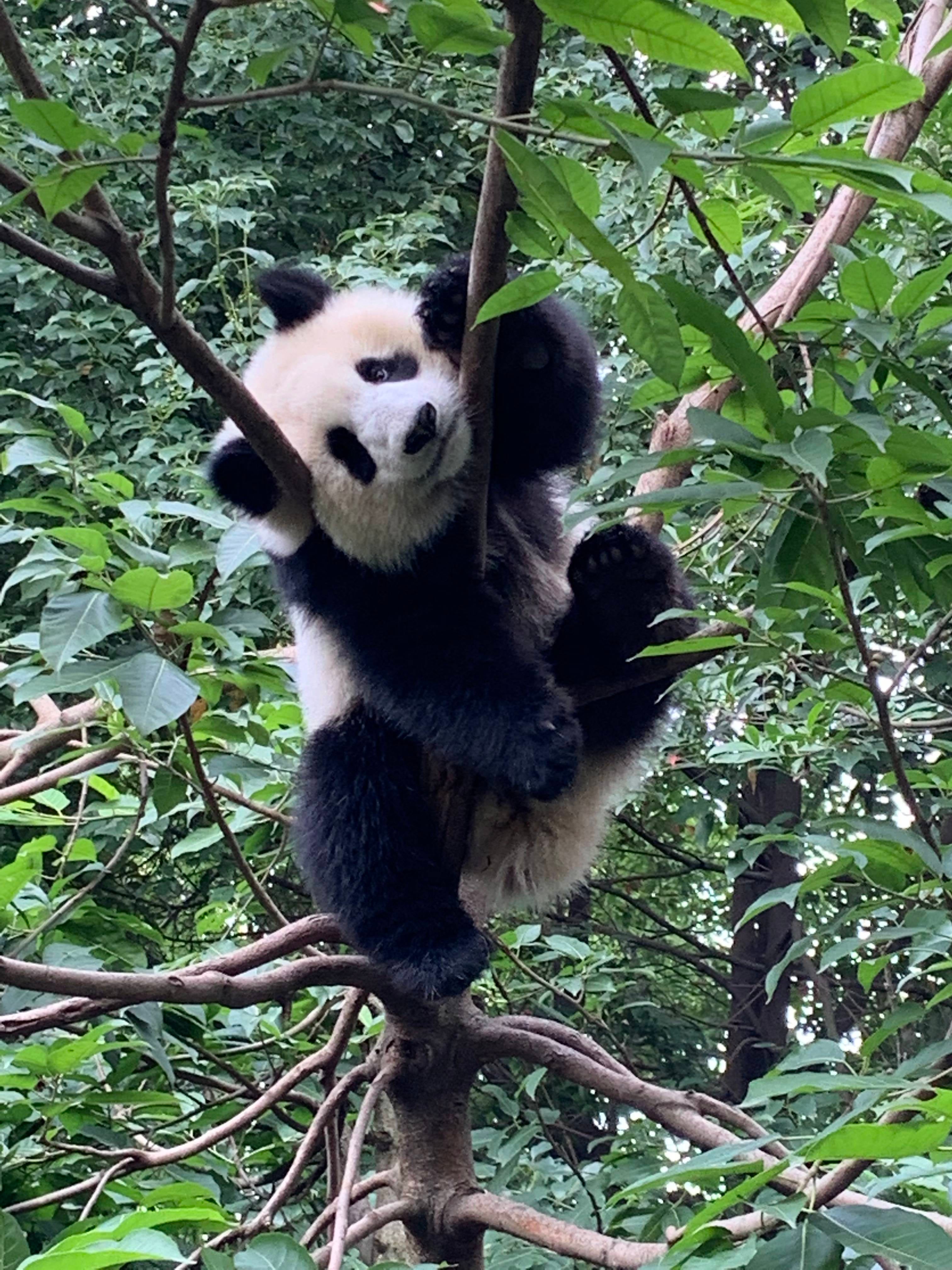
Official estimates put the population of China around 1.4 billion people, and growing every year. Between native Chinese traveling around their country and foreigners flocking here for work or vacation, the crowds can get overwhelming. This is especially true at major tourist attractions, such as the terra cotta warriors in Xi'an or the Chengdu panda research base.
While you can't control the size of the crowds on any given day, you can do your best to beat them. When my girlfriend and I were traveling around China this past summer, we made a point to show up to every attraction the minute it opened in the morning. We were able to enjoy an hour of relative peace and quiet in the panda base with no more than approximately 200 other guests, before all the school and tour groups began rolling in. By the time we left the park around 11 a.m., the place was a complete zoo (no pun intended), and a wildly different experience for anyone just arriving. I'm normally not a morning person, but we realized early on that our trip would be materially better if we woke up a bit earlier to try and beat the crowds.
2. Know your cardinal directions
You can get by traveling in China without speaking the language — more on that later — but there are a few words that I think are especially important to know beyond the simple phrases (please, thank you and where's the bathroom?).
Most Chinese cities have multiple train stations, named depending on whether they're in the north, south, east or west of the city.
These cardinal directions don't get translated to English along with the name of the city, so make sure to do your research ahead of time so you go to the correct train station. Here's a quick primer (and a mini history lesson that might help the names stick):
- Bei means north, since Beijing was historically the northern capital of China
- Nan means south, with Nanjing having served as the southern capital of China
- Dong means east, which you know if you've ever flown into Shanghai Pudong (PVG) and seen how far east of the city it really is
- Xi means west, so you can see in the train ticket below I was traveling from "Lanzhou West" to "Zhangye West"

3. Learning one phrase can make your entire trip
My Chinese lessons have been progressing at an embarrassingly slow pace over the last few months, but before setting out on my big summer trip I learned one single phrase that resulted in some of the most authentic and memorable experiences: 你们有什么好吃的.
If, like me, you can't read those characters, the phrase translates as Nǐmen yǒu shé me hào chī de, or simply put: What's good here?
Asia as a whole is known for having some of the world's best and most affordable street food, and China is no exception. But you'll also find thousands of small restaurants (stalls would probably be a more apt description) with no English menu, where the locals go for the really good stuff. I've found that most translation apps don't work well with the overload of text you'll find on a menu, so simply walk in and ask the lǎobǎn (shopkeeper) or Fúwùyuán (waiter) what's good on the menu, and he or she will be happy to take care of you.
This is a surefire way to eat like a local, and make sure you get to sample the best and most unique dishes of whatever city, province or village you find yourself in. If all else fails, I've also had a ton of success pointing at dishes I see other customers eating. I promise you one thing: You won't leave China hungry.

Related: The apps you need on your family vacation to China
4. Cash is for tourists
China is one of the most technologically-advanced countries in the world, but tourists can't take advantage of some of the biggest time-saving inventions. Chinese use mobile payment systems like WeChat Pay and AliPay for almost everything, from rent to groceries. The process is simple: Scan your merchant's QR code, type in the amount to pay them, and then use FaceID, TouchID or a passcode to complete the transaction. For more trusted merchants like chain stores, you can also show them a code on your phone which they scan to debit your payment account.

The entire process is finished faster than it usually takes me to find my wallet, and has made cash nearly obsolete in many parts of China.
In 2018, Chinese mobile payment systems processed over $41 trillion worth of transactions, more than Visa and Mastercard combined. The shift to mobile payments has even affected cultural traditions, like the giving of the red envelope (filled with cash) on Chinese holidays to family members and friends. During the Chinese New Year in 2018, more than 768 million people sent red packets through WeChat instead of delivering physical envelopes.
I experienced the most extreme example of the mobile-first economy during my first week in China, when I was traveling to Lanzhou in Gansu province with a friend. We took a road trip out from the city, and stopped by a small fruit stand on the side of the highway. The man running the stand, miles away from the nearest town, refused to accept cash payments. Instead, he'd taped a QR code onto one of the watermelons he was selling, allowing us to scan it with our phones to pay.
But unfortunately, most tourists won't be able to set up WeChat Pay or AliPay without jumping through some serious hoops. Many establishments don't accept credit cards, so if you're traveling to China you have to be prepared to pay for everything in cash. Don't be surprised if you get some confused looks or even disappointment when you try and pay with paper money.
5. Leave the big cities
Most people traveling to China for the first time (especially if they're coming for work) will plan an itinerary centered around the big cities including Beijing, Shanghai, Chengdu and Xi'an. I'm by no means advocating you skip these stops, but you should spend just as much time in nature as you do in the cities.
Go out west, for example, and visit the rainbow mountains (and make sure to get there for sunrise when the deepest colors are prominent).

Or climb Mount Huashan, and explore the ancient temples dotting the precarious peaks of one of China's most historically-significant mountains.

You can even visit Zhangjiajie National Forest Park and see the near-vertical peaks that inspired the mountains in the James Cameron blockbuster "Avatar." China is so much more than just its cities, and you owe it to yourself to see as much of the nation's natural beauty as possible.
6. Download a good VPN
By now, most people know that certain western websites including Facebook and Google are blocked in China, meaning you won't be able to access them without using a Virtual Private Network (VPN). However, many people leave this until the very bottom of their pretrip to-do list, and forget to set up a VPN until they've already arrived in China.
The Chinese government blocks the websites of all known VPN providers inside mainland China, which means if you don't set one up before you leave for your trip, you likely won't be able to answer emails or check in on social media until you return home. This forced detox might be a good thing, but if you need to maintain connectivity for work reasons, make this a priority.
7. Don't travel during Chinese holidays
I mentioned avoiding crowds whenever possible, but if you end up planning your trip to China during a Chinese holiday, prepare to wait in long lines and fight through crowds wherever you go. There's a Chinese saying: rén shān rén hǎi , or "people mountain people sea."
If you travel to China during one of the major holidays, including Golden Week/National Week in the fall, Chinese New Year in late winter and a few other shorter holidays spread throughout the year, you'll find yourself caught in the mountain and sea of people. Every mode of transportation — planes, trains and highways — will be packed to capacity, and most tourist attractions will be incredibly crowded as well.
In fact, I make a habit of traveling as far away from China as possible during these holidays, using last Chinese New Year as a great excuse to head to the Maldives and Dubai.
8. A good translation app can save the day
This last one should go without saying, but download a good translation app (I recommend Baidu translate, which works very well in China) and familiarize yourself with how it functions before your departure.
You'll find varying degrees of English spoken in major cities like Shanghai and Beijing, but the farther out you go, the harder it will be to get by with English. Even words like "no" and "toilet," which are pretty universal, aren't well understood in China.
The people I've met on the road have been incredibly friendly and curious about where I'm from and why I'm in China. On many long train rides, I've enjoyed the ability to strike up a conversation with my seatmate through a translation app, even if we don't speak a word in common.
Bottom line
There's no denying that China looks intimating to many travelers from the outside, but the more time I spend here the more approachable it becomes. Sure, I'll never fully understand China, but that's not going to stop me from trying. And even simple steps, like leveraging every piece of technology I can and learning a few key phrases, has helped me make the most of my travels here.

Navigate forward to interact with the calendar and select a date. Press the question mark key to get the keyboard shortcuts for changing dates.
Navigate backward to interact with the calendar and select a date. Press the question mark key to get the keyboard shortcuts for changing dates.
China Trip Planner
Top destinations in china.

Top attractions in China

Other notable attractions

Explore nearby places
- Wushan County
- Zhang County
- Longxi County
- Dangchang County
- Gangu County
- Weiyuan County
- Xihe County
- Zhouqu County
- Tongwei County
- Qin'an County
- Zhuoni County
- Lintao County
- Lintan County
- Kangle County
- Cheng County
- Huining County
- Qingshui County
- Diebu County
- Zhuanglang County
- Jingning County
- Zhangjiachuan County
- Yuzhong County
- Hezheng County
All related maps of China
- Map of China
- Map of Wushan County
- Map of Zhang County
- Map of Longxi County
- Map of Li County
- Map of Min County
- Map of Dangchang County
- Map of Gangu County
- Map of Weiyuan County
- Map of Xihe County
- Map of Zhouqu County
- Map of Tongwei County
- Map of Tianshui
- Map of Qin'an County
- Map of Zhuoni County
- Map of Dingxi
- Map of Lintao County
- Map of Lintan County
- Map of Longnan
- Map of Kangle County
- Map of Cheng County
- Map of Huining County
- Map of Qingshui County
- Map of Diebu County
- Map of Zhuanglang County
- Map of Jingning County
- Map of Zhangjiachuan County
- Map of Yuzhong County
- Map of Hui County
- Map of Hezheng County
- Map of Zhangzha
China throughout the year
- China in January
- China in February
- China in March
- China in April
- China in May
- China in June
- China in July
- China in August
- China in September
- China in October
- China in November
- China in December
Q&A about China
Add places from guides with 1 click, collaborate with friends in real time, import flight and hotel reservations, expense tracking and splitting, checklists for anything, get personalized suggestions.
4.9 on App Store, 4.7 on Google Play
Winter is here! Check out the winter wonderlands at these 5 amazing winter destinations in Montana
- Travel Destinations
How To Plan Your First Trip To China
Published: October 17, 2023
Modified: December 28, 2023
by Maighdiln Getz
- Plan Your Trip
- Travel Guide
- Travel Tips
Introduction
Welcome to the fascinating and diverse country of China! Whether you’re a history buff, an adventure seeker, a food lover, or simply curious about exploring a new culture, China has something for everyone. Planning your first trip to China can be both exciting and overwhelming, but with the right information and preparation, it can be a truly unforgettable experience.
China is a vast country with a rich history and vibrant modernity. From the iconic Great Wall to the cosmopolitan cities of Beijing and Shanghai, there are endless opportunities to explore and discover. However, before you embark on your journey, there are a few important factors to consider to ensure a smooth and enjoyable trip.
The first step in planning your trip to China is to check the visa requirements. Most visitors to China will need a visa, and the type of visa will depend on the purpose and duration of your stay. It’s recommended to apply for your visa well in advance to avoid any last-minute complications.
Next, consider the best time to visit China. The country experiences different climates in different regions, so it’s essential to plan your trip according to the weather conditions. Spring (April to May) and autumn (September to October) are generally the best seasons to visit, as the temperatures are moderate, and the landscapes are breathtaking.
Another crucial aspect to decide is the duration of your trip. China offers such an array of attractions that it’s impossible to see everything in a single visit. Determine how much time you have available and prioritize the destinations and experiences that interest you the most.
Speaking of destinations, China has countless remarkable places to visit. From the ancient capital of Xi’an to the picturesque beauty of Guilin, each city offers a unique experience. Research and consider your interests, whether it’s historical sites, natural wonders, or cultural hotspots, to narrow down your choices and plan your itinerary accordingly.
Visa Requirements
Obtaining the appropriate visa is an essential step in planning your trip to China. Most visitors will need a visa to enter the country, with a few exceptions for certain nationalities with visa-free agreements. It’s crucial to familiarize yourself with the visa requirements and apply for the correct visa type based on the purpose and duration of your stay.
The most common visa for travelers is the L visa, which is for tourists. The application process typically involves completing an application form, providing a recent passport-sized photograph, providing proof of travel arrangements, such as flight bookings and hotel reservations, and submitting a valid passport with at least six months of validity remaining. Depending on your country of residence, you may need to apply at the nearest Chinese embassy or consulate or opt for a visa on arrival if applicable.
It’s important to note that visa requirements may vary depending on your nationality, so it’s recommended to check with the Chinese embassy or consulate in your home country for the most up-to-date and accurate information. Additionally, the visa application process can take some time, so it’s advisable to apply well in advance to avoid any last-minute complications.
If you plan to engage in business activities, attend conferences, or work in China, you will need to apply for a different visa type, such as the M visa for business purposes or the Z visa for employment. These visas require additional documentation, such as an invitation letter from a Chinese company or organization, and may have different application procedures.
It’s crucial to ensure that your passport has a minimum of six months’ validity beyond the duration of your planned stay in China. If your passport is due to expire within this timeframe, it’s recommended to renew it before applying for a visa.
Once you have obtained your visa, make sure to carry a copy of it with you and keep your passport safe during your trip. China has strict regulations regarding passport and visa violations, so it’s important to abide by the rules and regulations to enjoy a hassle-free and memorable visit.
Choosing the Right Time to Visit
When planning your trip to China, it’s essential to consider the best time to visit based on the weather, festivals, and tourist crowds. China is a vast country with diverse climates, so the weather can vary greatly depending on the region and time of year.
Spring (April to May) and autumn (September to October) are generally considered the best seasons to visit China. During these months, the weather is mild and pleasant, with blooming flowers and vibrant foliage adding beauty to the landscapes. It’s a great time for outdoor activities and exploring popular tourist destinations without the extreme heat of summer or freezing temperatures of winter.
Summer (June to August) can be hot and humid in many parts of China, especially in the southern regions. However, if you plan to visit higher altitude areas, such as Tibet or the cooler regions of northern China, summer can be a great time to escape the heat. Just be prepared for larger crowds, as summer is the peak tourist season.
Winter (December to February) can be quite cold, especially in northern China, with temperatures often dropping below freezing. However, winter can also offer unique experiences, such as walking along the Great Wall dusted with snow or celebrating Chinese New Year in traditional villages. It’s important to pack warm clothing and be prepared for possible travel disruptions due to weather conditions.
Aside from weather considerations, it’s worth checking the festival calendar when planning your trip. Chinese New Year, also known as the Spring Festival, is one of the most significant celebrations in China and typically falls between January and February. This festive period is a great opportunity to experience traditional customs, colorful decorations, and lively street performances. Just keep in mind that transportation and accommodation may be busier during this time.
Another festival to consider is the Mid-Autumn Festival, which usually takes place in September or October. Celebrated with mooncakes, lanterns, and family gatherings, it’s a beautiful time to witness cultural traditions and enjoy the enchanting atmosphere.
Ultimately, the right time to visit China depends on your personal preferences and interests. Consider the weather, festivals, and your desired activities to choose a time that suits you best. Remember, no matter when you decide to visit, China’s rich culture and diverse landscapes will leave a lasting impression on you.
Deciding on the Duration of Your Trip
Deciding on the duration of your trip to China is an important consideration that will greatly impact your itinerary and overall experience. China is a vast country with a multitude of attractions, from bustling cities to breathtaking natural landscapes, and each destination deserves ample time to explore.
Before determining the duration of your trip, think about your travel goals and interests. Are you interested in exploring the major cities, experiencing local culture, visiting historical sites, or immersing yourself in nature? This will help you prioritize your destinations and allocate time accordingly.
If you have limited time, it’s best to focus on a particular region or a few key cities to make the most of your visit. For example, a week-long trip could be spent exploring the highlights of Beijing, such as the Great Wall and Forbidden City, or experiencing the vibrant city life of Shanghai. Alternatively, you could opt for a shorter trip and take a guided tour that covers the key attractions in a specific region, like the Terracotta Warriors in Xi’an and the picturesque beauty of Zhangjiajie.
If you have more time available, consider extending your trip to experience the diverse landscapes that China has to offer. For example, you could venture to the rural areas of Yangshuo to cruise along the Li River and immerse yourself in the karst peaks. Or, take a journey to Tibet to witness the stunning Himalayan scenery and explore Tibetan culture.
Keep in mind that traveling within China can be time-consuming due to the vast distances and transportation options. Factor in travel time between destinations when deciding on the duration of your trip to ensure you have enough time to fully experience each place.
Ultimately, the duration of your trip will depend on your personal preferences, available time, and budget. It’s recommended to allow at least 10 days to two weeks to get a taste of China’s diverse offerings. However, if you have the flexibility, a longer stay of three to four weeks will provide a more comprehensive exploration of the country.
Remember, China is a captivating destination with so much to see and experience. No matter the duration of your trip, make the most of your time by planning an itinerary that aligns with your interests and allows for a balance of city exploration, cultural immersion, and natural wonders.
Deciding on the Destinations
Choosing the right destinations to visit in China is an exciting task that will shape your entire travel experience. With its vast size and diverse offerings, China has something for every type of traveler, from ancient landmarks to modern metropolises, picturesque landscapes to cultural treasures.
Start by considering your interests and preferences. Are you fascinated by history and ancient civilizations? If so, destinations like Beijing, Xi’an, and Luoyang should be on your list. These cities are home to iconic attractions such as the Great Wall, Terracotta Warriors, and Longmen Grottoes.
If you are captivated by towering mountains and serene landscapes, consider visiting Huangshan, Jiuzhaigou Valley, or Zhangjiajie. These destinations offer breathtaking natural beauty, with towering peaks, crystal-clear lakes, and vibrant forests.
For those seeking a mix of history and culture, cities like Shanghai and Chengdu are worth exploring. Shanghai is known for its modern skyline and bustling streets, while Chengdu offers a glimpse into traditional Chinese culture and is famous for its adorable giant pandas.
Consider the geographical location and climate when choosing your destinations. Some regions, such as Yunnan and Guizhou, offer mild climates and stunning landscapes all year round. On the other hand, areas like Harbin are known for their winter wonderland and ice sculptures during the colder months.
If you have a specific interest, such as traditional Chinese gardens, water towns, or the Silk Road, research and include relevant destinations in your itinerary. This will allow you to delve deeper into specific aspects of Chinese history and culture.
Another factor to consider is the ease of transportation between destinations. China has a well-developed transportation network, including high-speed trains and domestic flights, making it relatively easy to access different parts of the country. Plan your itinerary in a way that minimizes travel time and maximizes your time spent exploring each destination.
Remember, you don’t have to cram too many destinations into one trip. It’s better to fully immerse yourself in a few places rather than rushing through a long list of attractions. Quality over quantity is key for a fulfilling and memorable travel experience.
Ultimately, the choice of destinations will depend on your interests, available time, and budget. Research and consider what aspects of China you are most excited about, and build an itinerary that allows you to explore and appreciate each destination to the fullest.
Booking Flights
Booking flights for your trip to China is an important step that requires careful consideration to ensure a smooth travel experience. There are several factors to keep in mind when booking your flights, such as airline options, airports, travel times, and pricing.
Start by determining which airports are most convenient for your arrival in China. Major international airports in China include Beijing Capital International Airport, Shanghai Pudong International Airport, and Guangzhou Baiyun International Airport. Consider the city and region you plan to visit, as well as the availability of direct flights from your departure location.
Research different airlines that operate flights to China and compare prices, services, and flight schedules. It’s advisable to book your flights well in advance to secure the best deals and availability. Keep in mind that peak travel seasons, such as Chinese New Year and summer, may result in higher prices and limited availability, so plan accordingly.
Consider the duration of your flight and layovers. Direct flights are often the most convenient option, but they may not always be available or affordable. If you have a layover, check the duration and location to ensure you have enough time to make your connection. Additionally, familiarize yourself with the visa requirements for transit passengers if you have a layover in China.
When booking your flights, be mindful of the baggage allowances and restrictions of the airline. Each airline may have different rules regarding the number of checked bags, weight limits, and carry-on items. Ensure you understand these requirements to avoid any additional fees or inconveniences at the airport.
If you plan to explore multiple destinations within China, consider booking domestic flights or high-speed train tickets in advance. Domestic flights can be a convenient way to cover long distances quickly, while high-speed trains offer a scenic and efficient mode of transportation between cities.
Lastly, don’t forget to consider travel insurance when booking your flights. Travel insurance can provide coverage for unforeseen circumstances such as trip cancellations, medical emergencies, or lost baggage. It’s always a good idea to be prepared for the unexpected.
Booking your flights to China requires careful planning and consideration of various factors. By doing thorough research and comparing options, you can find the best flights that align with your itinerary and budget, ensuring a stress-free and enjoyable journey to this captivating country.
Accommodation Options
Choosing the right accommodation is an important aspect of planning your trip to China. With a wide range of options available, from luxury hotels to budget hostels and traditional guesthouses, there is something to suit every traveler’s preferences and budget.
When deciding on your accommodation, consider the location and proximity to attractions or transportation hubs. If you plan to explore the major cities, look for hotels that are centrally located, allowing for easy access to public transportation, restaurants, and popular sites.
If you prefer a more immersive cultural experience, consider staying in traditional guesthouses or boutique hotels. These accommodations often provide a unique glimpse into the local culture, architecture, and lifestyle. In cities like Beijing or Xi’an, you can find traditional courtyard houses known as “hutongs,” while in rural areas, you might opt for a stay at a traditional farmhouse or a guesthouse in a picturesque landscape.
For budget travelers or those looking to connect with fellow travelers, hostels and guesthouses are a great option. Hostels often provide dormitory-style rooms as well as private rooms, allowing you to choose the level of privacy and social interaction you prefer. These accommodations are not only economical but also provide an opportunity to meet other travelers and share experiences.
If you desire a more luxurious experience, China has a plethora of world-class hotels and resorts. From international chains to boutique properties, you can find upscale accommodations with luxurious amenities and exceptional service. Many of these hotels are located in major cities or tourist destinations, offering stunning views and top-notch facilities.
When booking your accommodation, consider reading reviews and ratings from previous guests. Websites and platforms like TripAdvisor or Booking.com can provide valuable insights into the quality and reputation of different accommodations. Pay attention to factors such as cleanliness, comfort, customer service, and overall value for money.
It’s also worth noting that during peak travel seasons, such as Chinese New Year or holidays, accommodation prices may be higher, and availability may be limited. It’s advisable to book your accommodation well in advance to secure the best options and prices.
Ultimately, the choice of accommodation in China depends on your preferences, budget, and travel style. With careful research and consideration, you can find the perfect place to stay that enhances your overall travel experience and provides a comfortable and memorable stay in this fascinating country.
Transportation within China
Getting around China efficiently and comfortably is essential for making the most of your trip. Fortunately, China has a well-developed transportation network that offers various options for traveling within the country.
One of the most popular and convenient modes of transportation in China is the high-speed train network. The high-speed trains connect major cities across the country and offer fast and comfortable travel. These trains are known for their punctuality, modern amenities, and smooth rides. It’s recommended to book train tickets in advance, especially during peak travel seasons, to secure your preferred departure time and seating class.
Domestic flights are another common means of transportation, particularly for covering long distances. China has numerous domestic airports, and many cities are serviced by several airlines. Domestic flights are a time-saving option if you plan to visit destinations that are far apart or have limited travel time.
For shorter distances within cities or towns, public transportation is readily available. Most cities have an extensive network of buses and subway systems, which are not only cost-effective but also provide a convenient way to get around. Public transportation signage and announcements are often provided in both Chinese and English, making navigation easier for foreigners.
Taxis and ride-hailing services like DiDi are also popular in China, offering a convenient and comfortable mode of transportation. Taxis are usually equipped with meters, and it’s essential to ensure the driver activates the meter at the beginning of the journey. If using ride-hailing services, make sure you have a local SIM card or access to Wi-Fi to book and communicate with the driver.
If you prefer more autonomy in your travels, renting a car is an option, especially for exploring rural areas or lesser-known destinations. However, be aware that driving in China can be challenging due to heavy traffic, differing road rules, and language barriers. Additionally, an international driving permit and a valid passport and visa are required to rent a car in China.
When it comes to payment methods for transportation, China is known for its widespread use of mobile payment platforms such as Alipay and WeChat Pay. These convenient options allow you to pay for buses, taxis, and even street vendors using a QR code on your phone. It’s advisable to set up one of these mobile payment options before your trip to maximize convenience.
Before traveling, familiarize yourself with local transportation customs and etiquette. For example, it’s customary to offer priority seating to the elderly or pregnant passengers on public transportation. Additionally, be prepared for crowded conditions during peak travel hours and holidays, particularly on buses and trains.
With its diverse transportation options, getting around China is relatively straightforward and accessible. Plan your travel routes in advance, consider the distances and time needed to travel between destinations, and be open to embracing the local transportation experiences to enhance your journey in this captivating country.
Language and Cultural Considerations
When traveling to China, it’s essential to be aware of the language and cultural considerations to ensure a smooth and respectful interaction with the locals. While English is spoken in some tourist areas and major hotels, it’s not widely spoken throughout the country. Therefore, having some understanding of the Chinese language can greatly enhance your travel experience.
Learning a few basic Mandarin phrases, such as greetings, thank you, and please, can go a long way in showing respect and building rapport with the locals. Consider investing in a phrasebook or using language learning apps to familiarize yourself with common phrases and pronunciations.
In addition to the language, understanding and respecting Chinese culture is crucial. Chinese culture is deeply rooted in Confucianism, which emphasizes respect for authority, family values, and social harmony. It’s important to be mindful of cultural norms and customs during your interactions with locals.
For example, addressing people using proper titles, such as “Mr.” or “Ms.” followed by their last name, is considered polite. Avoid using someone’s first name unless they instruct you to do so. Additionally, a slight bow or nod is often given as a sign of respect when meeting or greeting someone.
Personal space in China may be different from what you are accustomed to. It’s common for people to stand closer to each other during conversations and crowds may be more tightly packed. Be aware of this cultural difference and respect personal boundaries while adapting to the local norms.
When visiting religious or sacred sites, dress modestly and behave respectfully. It’s important to avoid loud or disruptive behavior and to follow any specific rules or rituals that may be in place. Always ask for permission before taking photos, especially of local people, and respect their wishes if they decline.
Chinese cuisine is renowned around the world, and trying local dishes is one of the highlights of any trip to China. However, be aware that Chinese dining etiquette may differ from what you are accustomed to. For example, it’s polite to wait for the host to start eating before you begin, and it’s courteous to leave a little food on your plate to show that you are satisfied.
Lastly, it’s essential to be aware of local laws and regulations to avoid any unintended offenses. China has strict laws regarding drug use, public behavior, and sensitive political topics. Be respectful of the local customs and adhere to the regulations to ensure a safe and enjoyable trip.
By being aware of the language and cultural considerations, you can show respect, build connections, and navigate cultural differences more gracefully during your journey through China. Embracing the local customs and norms will broaden your cultural understanding and create meaningful interactions with the people you encounter.
Budgeting for Your Trip
When planning your trip to China, it’s important to consider your budget to ensure that you can make the most of your experience without overspending. China offers a wide range of options for every budget, from affordable street food to luxury accommodations.
Start by setting a realistic budget for your trip. Consider factors such as accommodation, transportation, meals, activities, and souvenirs. Research the average costs of these items in the areas you plan to visit to get an idea of the daily expenses you can expect.
Accommodation costs can vary greatly depending on the type of lodging you choose. Hostels and budget guesthouses can cost as little as $10-20 per night, while luxury hotels can exceed $200-300 per night. Consider your comfort preferences and the desired level of amenities when deciding on accommodation options.
Transportation expenses will depend on the distance between your chosen destinations. High-speed trains are a popular and efficient means of transportation, especially for longer distances, while buses, taxis, and ride-hailing services are common within cities. Plan your itinerary carefully to minimize travel costs.
Food in China can be incredibly affordable, especially if you’re willing to try street food or eat at local eateries. Street food can cost as little as $1-2 per dish and offers a delicious array of flavors to sample. Local restaurants and markets are also more budget-friendly compared to upscale dining options.
Activities and attractions can vary in cost, so it’s essential to research admission fees or tour costs in advance. Some attractions offer discounted tickets for students or senior citizens, so consider bringing relevant identification to take advantage of these discounts.
Souvenir shopping can be a fun part of your trip, but it’s important to budget for it accordingly. Consider what types of souvenirs you want to bring back, whether it’s traditional crafts, tea, or clothing. Set aside a specific amount for souvenirs to avoid overspending.
While budgeting for your trip, it’s also important to set aside some funds for unexpected expenses or emergencies. It’s recommended to have a contingency plan and carry a sufficient amount of cash or have access to emergency funds, as credit cards may not be widely accepted in all areas.
Keep in mind that prices may vary depending on the season and location within China. Popular tourist destinations and peak travel times may result in higher prices for accommodations, activities, and even transportation. Be prepared to adjust your budget accordingly.
By setting a realistic budget and sticking to it, you can make the most of your trip to China without overspending. Researching costs in advance, exploring affordable options, and planning your itinerary carefully will help ensure a memorable experience that aligns with your financial goals.
Must-See Attractions
China is a country brimming with must-see attractions that showcase its rich history, cultural heritage, and natural wonders. While it’s impossible to explore all of them in a single trip, here are a few iconic and must-visit attractions that should be on your itinerary:
- The Great Wall of China: One of the world’s most famous landmarks, the Great Wall stretches over 13,000 miles and offers breathtaking views of the Chinese countryside. Visit sections like Badaling or Mutianyu for a glimpse into this architectural marvel.
- The Terracotta Warriors: Located in Xi’an, the Terracotta Army is an awe-inspiring archaeological site. Thousands of life-sized terracotta soldiers and horses guard the tomb of China’s first emperor, Qin Shi Huang.
- The Forbidden City: Situated in the heart of Beijing, the Forbidden City is a magnificent imperial palace complex that was home to Chinese emperors for nearly five centuries. Marvel at its grand halls, ornate architecture, and beautiful gardens.
- The Li River and Karst Landscapes: Take a scenic cruise along the Li River in Guilin to witness the stunning beauty of the karst mountains and picturesque rural landscapes. The surreal landscapes have inspired countless artists and poets throughout history.
- The Panda Research Base: Chengdu is home to the giant pandas, and a visit to the Panda Research Base offers a chance to observe these adorable creatures up close. Learn about conservation efforts and see pandas in their natural habitat.
- The Zhangjiajie National Forest Park: The unique sandstone pillars that inspired the movie “Avatar” can be found here. Explore the towering peaks, dense forests, and breathtaking views from the famous glass-bottomed Zhangjiajie Glass Bridge.
- The West Lake: Located in Hangzhou, the West Lake is a UNESCO World Heritage site known for its serene beauty. Take a boat ride, stroll along the scenic paths, and admire the pagodas and gardens that dot its shores.
These are just a few of the countless must-see attractions in China. Other notable mentions include the Summer Palace and the Temple of Heaven in Beijing, the Potala Palace in Lhasa, the Yellow Mountain in Huangshan, and the ancient water towns of Suzhou and Tongli.
When planning your trip, consider your interests, the time available, and the geographical locations of these attractions to create a well-rounded itinerary. Remember, every region of China has its unique charm and hidden gems waiting to be discovered.
Immerse yourself in the captivating history, natural beauty, and cultural wonders of China as you explore these must-see attractions, creating unforgettable memories and a deeper connection with this spellbinding country.
Planning Daily Itineraries
Planning daily itineraries is an essential part of maximizing your time and experiencing the best of China’s diverse offerings. With so much to see and do, thoughtful planning will help you make the most of each day. Here are some tips for crafting daily itineraries:
Start by prioritizing the must-see attractions and activities in each destination. Research the opening hours, ticket information, and any special considerations for each site. Consider the location and proximity of attractions to create a logical sequence for your daily plans.
Take into account the opening and closing times of attractions, as well as any peak visiting hours. Arriving early or visiting during off-peak times can help you avoid crowds and enjoy a more immersive experience. However, be mindful of potential closures or reduced hours on public holidays or special occasions.
Pace your daily itineraries to avoid exhaustion. Allow for breaks, meals, and time to soak in the atmosphere. Consider incorporating both well-known landmarks and hidden gems to get a well-rounded experience of each destination.
Factor in travel time between attractions and plan accordingly. Whether you’re taking public transportation or hiring a private driver, consider the distances and potential traffic conditions. Leave extra time if needed, especially for longer journeys or during peak travel periods.
Be mindful of the local customs and cultural practices when planning your daily itineraries. For example, some attractions may have specific dress codes or require a certain level of modesty. Additionally, be aware of any religious or cultural practices that may impact opening hours or visitor access.
Allow for flexibility in your itineraries to accommodate unexpected discoveries or spontaneous activities. Sometimes the most memorable experiences happen when you veer off the planned path. Embrace the spirit of exploration and leave room for serendipitous encounters.
Ensure you have a good balance of activities and downtime in your daily itineraries. While it’s enticing to pack your schedule with as much as possible, remember to allow yourself time to relax, reflect, and savor the experiences. This will prevent burnout and ensure a more enjoyable journey.
Finally, keep a map or navigation app handy to help you navigate your daily itineraries. Familiarize yourself with the local transportation options and have a backup plan in case of any unforeseen circumstances or closures.
Remember, the key to planning daily itineraries is finding a balance between visiting top attractions, immersing yourself in local culture, and allowing room for flexibility and relaxation. By careful planning and being open to unexpected adventures, you’ll make the most of your time in China and create cherished memories that will last a lifetime.
Packing Essentials
Packing for your trip to China requires careful consideration to ensure you have everything you need for a comfortable and enjoyable journey. Here are some essential items to include in your packing list:
- Valid travel documents: This includes your passport, visa, and any necessary identification or permits. Make sure your passport has at least six months of validity remaining beyond your planned departure date.
- Weather-appropriate clothing: China experiences diverse climates, so pack clothing suitable for the season and regions you plan to visit. Layering is recommended for fluctuating temperatures, and don’t forget to include a light jacket or raincoat.
- Comfortable footwear: As you’ll likely be doing a lot of walking and exploring, it’s essential to have comfortable shoes or sneakers. Consider packing a pair of comfortable breathable shoes for urban areas and sturdy hiking shoes for outdoor adventures.
- Electrical adapters: China uses Type A, C, and I electrical outlets, so depending on your home country, you may need an adapter to charge your electronic devices. It’s advisable to bring a universal adapter.
- Personal toiletries and medications: Pack your essential toiletries, including toothbrush, toothpaste, shampoo, and any necessary prescription medications. It’s also a good idea to bring a basic first aid kit for minor injuries or illnesses.
- Reusable water bottle: Stay hydrated and reduce plastic waste by bringing a reusable water bottle. Make sure it’s empty before going through airport security and refill it with bottled or filtered water during your trip.
- Travel-sized umbrella: China’s weather can be unpredictable, so having a compact travel umbrella can come in handy during sudden rain showers or for shade during sunny days.
- Travel guidebook or apps: While you can find a wealth of information online, having a printed travel guidebook or offline travel apps can be useful for navigation, cultural insights, and recommendations.
- Cash and cards: It’s advisable to carry some Chinese currency (renminbi) for small purchases and in case of emergencies. Also, notify your bank or credit card company about your travel plans to avoid any issues with card usage.
Remember to pack according to your specific needs and preferences. If you have any special requirements, such as prescription glasses, specific dietary items, or specialized equipment, be sure to include them in your packing list.
It’s also wise to pack a small day bag or backpack to carry your essentials during daily outings. This will allow you to have easy access to important items like your wallet, camera, mobile phone, and sunscreen.
Lastly, try to pack lightly to avoid unnecessary weight and to leave room for souvenirs or items you may want to purchase during your trip. Consider taking versatile clothing items that can be mixed and matched, and prioritize essential items over non-essential ones.
By packing smartly and thoughtfully, you’ll be well-prepared for your trip to China, ready to embrace the adventures and create unforgettable memories.
Health and Safety Precautions
Ensuring your health and safety is paramount when traveling to China. Taking necessary precautions will help you have a safe and worry-free trip. Here are some important health and safety tips to keep in mind:
- Travel insurance: Before your trip, consider purchasing comprehensive travel insurance that covers medical emergencies, trip cancellations, and lost or stolen belongings. This will offer you peace of mind in case of unforeseen circumstances.
- Medical check-ups and vaccinations: Schedule a visit to your healthcare provider well in advance to ensure you are up-to-date on routine vaccinations and to discuss any specific vaccinations recommended for traveling to China. Common vaccinations include Hepatitis A and B, typhoid, and influenza.
- Prescription medications and travel health kit: If you take any prescription medications, ensure you have an adequate supply for the duration of your trip. It’s also wise to pack a small travel health kit containing basic medications like pain relievers, antihistamines, and any necessary personal medications.
- Drink safe water: It’s advisable to drink bottled water or use filtered water for drinking and brushing your teeth. Avoid consuming tap water or ice made from tap water, especially in rural areas. Be cautious with street food and ensure it is freshly cooked and served hot.
- Stay vigilant about hygiene: Wash your hands frequently, especially before eating or handling food. Carry hand sanitizers or antiseptic wipes for times when soap and water are not readily available. Also, consider using tissues or a face mask in crowded areas to protect against respiratory illnesses.
- Be cautious with street food: While trying local street food is a part of the cultural experience, it’s essential to choose vendors and stalls carefully to minimize the risk of foodborne illnesses. Look for places with clean preparation areas and high turnover of food.
- Be aware of your surroundings: China is generally safe for travelers, but it’s always wise to be aware of your surroundings, especially in crowded places and tourist areas. Take precautions against petty theft, such as keeping your belongings secure and being cautious of your valuables in public.
- Respect local customs and laws: Familiarize yourself with local customs, traditions, and laws to avoid inadvertently causing offense or breaking any rules. Be mindful of cultural sensitivities, dress modestly when required, and follow any regulations at sacred sites or cultural attractions.
- Stay informed about current events: Keep yourself updated on the latest travel advisories and news regarding the region you plan to visit in China. Register with your embassy or consulate to receive important safety information and contact details in case of emergencies.
It’s always a good idea to conduct additional research specific to your travel destination in China to identify any region-specific health concerns or safety precautions.
By taking these health and safety precautions, you can minimize risks and ensure a smooth and secure journey throughout China. Stay informed, be prepared, and prioritize your well-being for a memorable and worry-free travel experience.
Tips for a Smooth Trip Experience
To make the most of your trip to China and ensure a smooth and enjoyable experience, here are some helpful tips to keep in mind:
- Learn a few basic phrases: While English is not widely spoken, learning a few basic Mandarin phrases will go a long way in communicating with locals and showing respect. Simple greetings, “thank you,” and “please” can make a significant difference.
- Use mobile payment platforms: China is a cashless society, and mobile payment platforms like Alipay and WeChat Pay are widely used. Set up one of these apps on your smartphone before your trip to make transactions more convenient.
- Carry a Mandarin phrasebook and map: While technology can be helpful, it’s always wise to have a backup. Carry a Mandarin phrasebook and a map of the areas you plan to visit to assist with communication and navigation, particularly in more remote locations.
- Respect queue systems: Chinese culture places importance on queueing, so follow the local practice by waiting in line and respecting the order. Be patient and avoid jumping queues, even if it appears chaotic at times.
- Be prepared for crowds: China is a densely populated country, and popular tourist attractions can be crowded, especially during peak travel seasons. Plan your visits for off-peak times and arrive early in the morning to avoid large crowds whenever possible.
- Carry tissues and hand sanitizers: Public restrooms in China may not always provide toilet paper or hand soap, so it’s advisable to carry your own tissues and hand sanitizers for personal hygiene purposes.
- Respect cultural differences: Chinese culture has its own customs and traditions. Be respectful of local customs, such as removing your shoes in homes or temples, covering your shoulders in religious sites, and following any specific rules or rituals.
- Be patient and flexible: China is a vast and diverse country with its own pace of life. Embrace the differences, be patient with any challenges or language barriers, and remain flexible in your plans. This will help you navigate unexpected situations with ease.
- Try local cuisine: Food is an integral part of the Chinese culture, so be adventurous and try the local cuisine. Street food can offer authentic and delicious experiences, but make sure to choose vendors with good hygiene practices.
- Stay connected: Consider purchasing a local SIM card or using Wi-Fi hotspots to stay connected during your trip. Having internet access will help with navigation, translation, and staying connected with family and friends.
Remember, traveling to China is an opportunity to immerse yourself in a unique culture and experience a fascinating country. By embracing the local customs, being prepared, and maintaining an open mind, you’ll create unforgettable memories and have a smooth and enjoyable trip throughout China.
Embarking on a trip to China is an exciting adventure filled with rich history, stunning landscapes, and vibrant cultural experiences. By considering visa requirements, choosing the right time to visit, deciding on your desired destinations, and carefully planning your daily itineraries, you can optimize your journey and make the most of your time in this captivating country.
Understanding language and cultural considerations, budgeting appropriately, and packing essential items will ensure a smooth and enjoyable trip. Additionally, prioritizing health and safety precautions, staying informed about local customs and laws, and being respectful of the local culture will contribute to a positive travel experience in China.
Exploring must-see attractions, trying local cuisine, and embracing the unique aspects of each destination will provide a deeper understanding of China’s vibrant heritage. By incorporating these tips and suggestions into your travel plans, you will create lasting memories and forge connections with the local people and their captivating culture.
China offers a wealth of experiences that will leave you awe-inspired and with a newfound appreciation for its diverse landscapes, rich history, and warm hospitality. Whether you choose to explore ancient landmarks, immerse yourself in local customs, or venture into stunning natural wonders, your trip to China is bound to be an enchanting journey of discovery.
So, embrace the adventure, prepare well, and get ready to embark on a remarkable trip to China, where the past meets the future, and every moment is an opportunity for exploration and wonder.

- Privacy Overview
- Strictly Necessary Cookies
This website uses cookies so that we can provide you with the best user experience possible. Cookie information is stored in your browser and performs functions such as recognising you when you return to our website and helping our team to understand which sections of the website you find most interesting and useful.
Strictly Necessary Cookie should be enabled at all times so that we can save your preferences for cookie settings.
If you disable this cookie, we will not be able to save your preferences. This means that every time you visit this website you will need to enable or disable cookies again.
How to Plan a Trip to China
Here, your itinerary from Shanghai to Beijing.
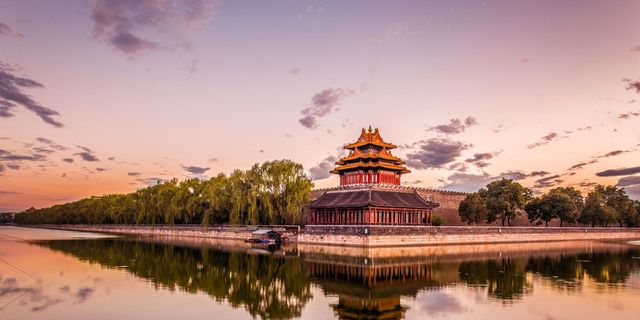
Welcome to China
For those who have seen the soaring mountains in Yunnan and the open-air Muslim markets in Xinjiang, the cosmopolitan streets of Shanghai and the traditional hutong, or alleyways, in Beijing, it's not surprising that China is the world's favorite new travel destination. It's not, however, the mesmerizing landscapes, cultural diversity, or unique urban neighborhoods that have constantly propelled China into the news cycle and onto everyone's mind.
In recent years, the Chinese economy -- the fastest growing in the world -- has captured the attention of businesses all over the globe. Mandarin has become the language to learn, and the government in Beijing has begun to throw its weight around on the international stage. Indeed, China's reach and potential for growth often seems limitless, a stunning turn of events considering that just 40 years ago the country's doors were effectively closed.
But fast development has come at a price for this ambitious country. Despite a prosperous economy, the per capita income remains approximately one tenth that of developed countries, and core technologies are still heavily reliant on imports. With surging economic growth benefiting some and leaving many in the dust, Chinese society has become defined by its staggering contrasts and growing inequality gap.
Economics and business aside, observers increasingly want to know more: What is daily life here actually like? Does everyone still ride bicycles? Do old women still have small feet as a result of old binding customs? Do Chinese people ever use forks? How do ordinary people reconcile the clashing forces of China's long, proud history and its frenetic drive to become the world's newest superpower?
While sites such as the Great Wall, the Forbidden City, and the Terracotta Soldiers astound, it's everyday China that represents the country at its best. Watch couples waltzing in the park in the shade of the world's most innovative and striking buildings, while young businessmen pedal to work in suits. Witness sprawling metropolises boom further and further skyward, a world away from picturesque countryside villages home to minority cultures. Now is the time to see China, while ancient traditions still permeate everyday life, and modern influences creep in through the old city streets.
Once a mere backwater fishing village, the destiny and fortunes of Shanghai changed forever when the British opened their first concession here in 1842, followed soon after by the French and Japanese. By the 1930s, Shanghai had achieved international status as Asia's foremost commercial center and became known as the colonial "Paris of the East." Shanghai today retains those charms in the tree-lined streets of the former French Concession and iconic banking houses along the Bund; at the same time, the urban bustle and multitudes of skyscrapers are a testament to Shanghai's aspirations to be a major international metropolis. Now the worldly financial capital of China, Shanghai is a great place to check out the old, the new and the foreign.
DAY ONE: Arrive in Shanghai
- Meet your WildChina Shanghai guide at the arrival hall of the airport
- Travel to The Peninsula to check in and relax
- Stroll along the Bund and enjoy and dinner at M on the bund
- Grab a seat at the ERA Acrobatics show, which fuses traditional Chinese arts and modern technologies for an explosive effect
Upon arriving in Shanghai and entering the arrival hall, you will be met by your WildChina Shanghai guide and private chauffeur, who will escort you to your hotel for check-in and freshening up.
Stroll through the Art Deco and Neoclassical office buildings and soak up the glamorous European style of old Shanghai. You can take a look inside some of these glamorous buildings, including the famous HSBC building with frescos on the ceiling, Astorhouse, home of Shanghai's first stock exchange, and the Peace hotel, with a springy floor you can actually bounce on.
Characterized by feats of strength and daring routines, the "ERA" Chinese acrobatics performance will have you sitting on the edge of your seat. "ERA: The Intersection of Space and Time" is a spellbinding performance that fuses Chinese acrobatic arts with modern technology. Just like Shanghai, ERA evolves through a constant collision between the past and future. The daring routines will have you contorting your own body in suspense at the thrilling energy of the show. Several acts, including "play dooly," "silk stripes," and "pyramid of chairs," are Gold Lion Award winners at the China National Acrobatic Competitions.
YOUR HOTEL: The Peninsula , Shanghai
Located directly on the Bund, this five-star hotel is decorated in the 1930s old Shanghai style to honor it's past. The original hotel, originally closed down by the government, has made a glamorous return. With beautiful new accommodations and world-class service, this hotel is a complete package. The hotel offers good Western and Eastern style dining options, as well as luxurious comfortable rooms.
DAY TWO: Shanghai
- Experience a snapshot of local life by walking around Fuxing Park, before taking a fan dancing class with our WildChina Expert
- Take to the streets via a Shanghai Sideways sidecar, where you can catch a ground-level view of Shanghai's urban jungle
- Enjoy lunch in one of the chic restaurants or cafes of Xintiandi, housed in retrofitted shikumen structures (traditional Shanghainese architecture combining Chinese and Western elements)
- Join Dvir, WildChina's Jewish expert for a tour of Shanghai's Jewish Quarter (subject to availability)
Fuxing Park is a European style park reminiscent of Paris' traditional gardens and architecture that is a popular spot for local Shanghai people to congregate. Locals go about daily exercises and activities, including taichi, mahjong, and a colorful array of fan dancing. Here, we will start the day with our local fan dance master. He will provide a fan-dancing demo and lesson.
Swerve in and out of Shanghai's winding roads and orient yourself with the city—all from the seat of a sidecar motorcycle. Shanghai Sideways Vintage is a truly unique way to explore this bustling Chinese city, and explore it we shall. From Fuxing Park, we'll head off to Chinatown and the French Concession area, riding alongside Shanghai locals as we make our way to our final destination of Xintiandi.
A hip dining, retail and entertainment area filled with international-standard restaurants, boutiques, cafes and bars, Xintiandi's shops are housed in old shikumen buildings restored to their original appearance. Imagine the glamorous days of old Shanghai's sophisticated international past, with all the comforts of a modern city. We'll stroll around the area, eat lunch, and take in the sights of Shanghai's new and old.
Shanghai's Jewish history dates back to the 19th century when Sephardic Jews started moving to Shanghai from Bombay and Baghdad. In the early 1900s, Russian Jews also immigrated to Shanghai. Some of the city's most famous buildings from that era, such as the north building of the Peace Hotel, were built by some of Shanghai's most successful Jewish families. Later, in the 1930s, Shanghai was one of the few places in the world where Jews fleeing Nazism could emigrate without a visa or family sponsorship. By the end of World War II the Jewish community in Shanghai numbered 20,000. In 1941, during Japanese occupation, a Japanese-issued proclamation forced most Jewish refugees in Shanghai to relocate to a ghetto of approximately one square mile in the Hongkou District. Despite the difficult conditions in the ghetto, the Jewish community adapted to retain its culture, tradition and social lifestyle.
Under the guidance of our Jewish history expert, we stroll through the historic Jewish Quarter and learn about the preservation of Jewish heritage in China. Our tour will end with a visit to the newly restored Ohel Moishe Synagogue that now houses the Shanghai Jewish Refugees Museum.
Yunnan—which literally means "South of the Clouds" due to its location just south of the Tibetan Plateau—is home to some of the most diverse cultures, ecology, and terrain in China. With verdant low-lying valleys, spectacular white-capped mountains, rustic towns and villages, and a lively mix of ethnic minority communities, Yunnan has long inspired poets and travelers alike.
Yunnan's mountains have historically isolated groups of people from one another, which has fostered the unique ethnic cultures that flourish in the region today. With 26 ethnic groups including Han, Tibetan, Dai, Bai, Yi, Hani, Hui, Mongol, Naxi, Lisu, Yao, Lahu and countless subgroups, Yunnan is a rainbow of different ethnic traditions, clothing and cuisine.
DAY THREE: Shanghai – Dali
- Experience zero turbulence as you zip towards Pudong International Airport at well over 400km/hour via the Maglev
- Transfer to Dali
- Learn the process of making China's most famous drink in a tea plantation at the foot of the soaring Cang Mountain
- Take part in a traditional Bai 'Three Cup' Tea Ceremony
- Travel back in time by walking around Dali's picturesque old town, a mixture of pagodas, red lanterns and mountains
Although you may not be in a hurry to leave Shanghai, in a way you may find yourself moving faster than expected. The fastest growing country in the world is also home to the world's fastest commercial train. The Maglev, or magnetic levitation train, runs on cutting-edge technology. The Maglev in Shanghai makes the 30 km (19 mi) journey between Pudong International Airport and Shanghai's Lujiazui financial district in less than 8 minutes, reaching a maximum speed of 431 km/hr (268 mph). For a paced city like Shanghai, this fast-paced train to Pudong certainly suits the atmosphere.
Arrive in the Ming era town of Dali. Once the chief city of Yunnan and the capital of the Nanzhao Kingdom , the indigenous Bai ethnic minority who comprised its population still accounts for the majority of the residents of Dali and surrounding villages.
Outside Dali in its neighboring mountains lays a tea plantation that has spectacular views of Dali Old Town and the famous Three Pagodas. This hidden gem is the opportune place to relax and soak in Yunnan's mountainous scenery, while of course sipping a freshly brewed cup of tea. We will also have time to explore the farm, and the farmers are always enthusiastic to teach the curious how to pluck tea and even explain the process of making tea from pluck to sip.
Embark to Dali Old Town to check into our hotel. In the early evening we will attend a traditional Bai minority "Three Cup Tea" ceremony. Often performed at marriages and festivals, this ceremony is an important way in which the Bai people honor guests. Strict etiquette will be followed as our host carefully prepares three different beverages that we will then taste in turn. The first, a bitter tea, represents the hard times in life. The second, a sweet beverage, shows how happiness prevails after difficulty. The third tea has fragrant aftertastes to encourage the drinker to reflect on both life's ups and downs and be grateful for the present.
After dinner in Dali Old Town, the evening will be spent on a walking tour through the town's cobblestone streets. Built in the 14th century and surrounded by a moat and wall, Dali Old Town is reputed for its graceful living and delightful Bai architecture. During the walk, visit a beautiful Catholic church donned in a Buddhist temple design.
YOUR HOTEL: One Resort , Dali
Conveniently located within the city walls of the old town, One Resort, Dali offers a peaceful retreat just a few minutes' walk from the lively pedestrian streets and local sites. This boutique hotel offers a modern and fresh twist on classical Chinese design that perfectly balances tradition and luxury. You can wind-down at the end of the day with a glass of chilled champagne on the terrace or by indulging in one of the many sensuous spa treatments on offer. The resort also boasts spectacular mountain views that are sure to take your breath away.
DAY FOUR: Dali – Shaxi – Lijiang
- En route to Lijiang by car, stop by Shaxi village, which used to be an important conduit on the Ancient Tea and Horse Road connecting Tibet and Eastern China
- Friday is market day in Shaxi, where locals from around the region come to trade animals, groceries, and handicrafts. Arrive at your hotel in Lijiang and check in
- Enjoy a dinner of both Naxi and Han Chinese cuisine in the Aman
- Spend the remainder of the evening at your leisure (We recommend browsing the wares of Lijiang's many shops)
Today enjoy a day on the road passing through Yunnan's picturesque countryside to Shaxi. Until the middle of the last century, the village of Shaxi flourished thanks to its position on the Ancient Tea and Horse Caravan Trail and southern Silk Road. After years of neglect, Shaxi has undergone an extensive architectural renovation with aid from the World Monuments Fund. The project is considered a model of preservation and sustainable development by UNESCO.
Friday is market day in Shaxi, where locals from around the region come to trade animals, groceries, and handicrafts. Sident Market is the only existing trade market that traces its origins directly from the Tea and Horse Caravan Trail.
Continue on the road to Lijiang, which lies in the shadow of Jade Dragon Snow Mountain and has entranced visitors for centuries with its singular architecture, quaint bridges, and narrow canals. Kublai Khan praised Lijiang for its charm in 1254, and UNESCO classified it as a World Heritage Site in 1997.
YOUR HOTEL: The Amandayan , Lijiang
With commanding views of the local area, the Amandayan is arranged around quiet, traditional courtyards. The architectural aesthetic, inspired by the local Naxi people, was created using locally sourced fabrics and Yunnan pine. Each contemporary style suite opens onto a courtyard or terrace where guests can enjoy undisturbed views of the surrounding mountains and the on-site tea house overlooks the bustling Old Town. Local ingredients take prominence across Amandayan's restaurants which offer Chinese, Western and Asian cuisines.
DAY FIVE: Lijiang
- Drive to Wenhai valley, where a local Shaman will discuss his beliefs with us before performing a Prayer Ceremony to bless our travels
- Return to Lijiang for a lively walking tour of Lijiang Old Town
- Get ready to dance at a festive Naxi dinner
Though rapid economic development, as well as the spread of mass media can be a positive change for some, it also puts the traditions and languages of China's ethnic minority cultures at risk for extinction. As the elders pass away, so do the traditions. Therefore, visiting this delightful village in the Jade Snow Mountain Range whose thirty families preserve the ways of their forebears, grants a fleeting encounter with not only the culture but the living history of the Yi people.
The village shaman, or Bimo, will welcome us to his village and share his perspective on local life, the challenges posed by development and his animist faith, a religion that predates the arrival of Buddhism in China. The Bimo is a sacred hereditary office held by one family over centuries. The incumbent is a well-respected scholar who mediates tribal disputes and presides over Yi ceremonies. Our discussion will continue over lunch, which will include "Yi French fries" (pan-fried sliced potatoes), after which the Bimo will conduct a blessing ceremony and pray for visitors' safe travels.
According to local history, the Naxi ethnic minority descends from Tibetan nomadic tribes, and once had a unique matriarchal society where marriage was not widely practiced. This practice is still existent in the remote regions outside of Lijiang, particularly in Lugu Lake. The Naxi are famed for their traditional music, shamanistic rituals and animist Dongba faith. Led by WildChina's experienced local guide, we will take a stroll down quieter side lanes of Lijiang Old Town for a more private and authentic experience. Encounters with Lijiang's Naxi residents, who, like their ancestors, depend on the mountain water that flows through the town's canals, will be a trip highlight.
Served in a traditional Naxi courtyard home, WildChina will arrange an opportunity to sample local Naxi cuisine. The five family members who live here make up three generations. Dressed in traditional costumes, the family will serve up tasty local dishes for dinner, while the mother-in-law gives guests a simple cooking lesson. Try the light, fresh, spicy dishes, as well as the herb, mushroom and flower infused flavors of Naxi cuisine. While we feast on local specialties, a Naxi orchestra and Naxi dancers will perform traditional music and dance. At the end of the meal they will even invite us to join in communal dancing around a bonfire.
DAY SIX: Lijiang
- For a closer look at local minority culture and history, head over to the Dongba Culture Museum
- Grab a bike or set out on foot to get a closer look at Lijiang's snow-crowned sentinel, the Jade Dragon Snow Mountain
- Travel to Yuhu village, located in the Lijiang basin, and visit the former residence of Austrian-American botanist Joseph Rock and hike around the surrounding countryside
- Traditional Naxi myths and stories will be recounted in Impressions Lijiang, an incredible spectacle featuring a cast of more 500 actors
Situated on the north side of the Black Dragon Pool, the Dongba Culture Museum is not only the biggest cultural relic museum in Dongba, but also its gorgeous setting around the mountains and water makes it a great place to soak up local history. Led by WildChina's experienced local guide, you will see thousands of antiques and relics precious to China's long past.
Lijiang's defining geographical feature is Jade Dragon Snow Mountain, an alpine range which soars to a dizzying height of 5,596 meters (18,360 feet) and boasts the southernmost glaciers in the northern hemisphere.
Striking from any angle, especially when viewed from Tiger Leaping Gorge, this massif is also stunning when seen from the Black Dragon Pool Park in Lijiang. Likewise, the views from Jade Dragon Snow Mountain itself are fantastic. Take a bike ride or hike around this breathtaking landmark, taking in the surrounding landscape in the process. We will also be passing by the former home of Joseph Rock, the famed botanist and explorer. An Austrian-American, Rock spent over two decades of the first half of the 20th century researching and documenting the flora and cultures of southwestern China.
Created by acclaimed film director Zhang Yimou, who also directed the opening ceremony of the Beijing Olympic Games, Impression Lijiang features a cast of more 500 actors and a number of horses in a performance that recounts traditional Naxi myths and stories. WildChina will arrange for you to see the show, held on a vast outdoor stage in the foothills of Jade Dragon Snow Mountain that offers views of its glaciers and peak.
Hong Kong may be modern and Xi'an may have a long history, but Beijing is a mix of both. Serving as China's capital since the Yuan dynasty (1279-1368AD), Beijing's past present and future are forced together in the crowded neighborhoods and streets of the city. But despite a divide between new and old, one thing about Beijing has remained constant for centuries: hard-handed political power, as well as thriving intellectual and artistic thought prominent in Beijing, continues to influence China and the world.
DAY SEVEN: Lijiang – Beijing
- Rise early and take the morning flight from Lijiang to Beijing (approx. 4hrs)
- Check into The Opposite House hotel and relax
- Catch an elaborate Peking opera performance in one of the oldest theaters in China
- Transfer to Lijiang airport and take a morning flight to Beijing
In the past seven centuries, Beijing has survived dynastic collapses, rebellions, colonial incursions, world wars, warlords, revolutions and transitions in and out of communism. As a result of its complex political history, the Chinese capital is now home to world-class monuments. But it is often the small details, not the marquee attractions that reveal the human side of Beijing history: the name of a city gate that recalls an imperial ritual, the recipe originating in the palace kitchen that has been passed from chef to chef for generations, and the faded Maoist slogan still detectable on the wall of a chic new art gallery are all delicate reminders of Beijing's past echoing in the city's future.
But contemporary city life has an equal appeal. After cycles of destruction and reconstruction, Beijing's mix of new and old is truly unique. Ancient hutong lanes and traditional courtyard homes are sewn neatly between the web of bold skyscrapers and vast avenues paving their way into the city.
Our evening will be spent watch Peking Opera at one of the oldest theaters in China, Zheng Yi Ci Peking Opera Theater. This theater is an avenue to discover Peking Opera in an elaborately decorated traditional setting.
YOUR HOTEL: The Opposite House , Beijing
One of the most acclaimed hotels in Beijing, The Opposite House is a modern boutique featuring contemporary, minimalist designs, and offering luxury amenities and services in the heart of the Sanlitun embassy neighborhood. Feel at ease while lounging in your beautifully designed room or take a leisurely stroll through the tree-lined embassy district. If you want to feel the pulse of the city, take a short walk to Sanlitun, Beijing's "happening" shopping district.
DAY EIGHT: Beijing
- Enter the Forbidden City, where emperors ruled, concubines fluttered their fans, and eunuchs schemed for five hundred years
- Enjoy privileged access to the Forbidden City's Chonghua palace
- Bike around Tiananmen square and in to Beijing's hutong alleyways
- Visit a local market and purchase vegetables for dinner
- Hone your culinary skills in a cooking class in a courtyard residence
With the iconic portrait of Mao Zedong looming over the gates of Tiananmen Square, this public square is one of the largest in the world, and has been the site of numerous historical events in China.
Home to emperors of the Ming and Qing dynasty for over 500 years, the over 800 buildings and 9,000 chambers of the Forbidden City were filled with only the elite officials and associates of the imperial family. The Palace Museum is now the best-preserved palace complex in China. It is a life preserved in chambers, where emperors ruled, empresses and concubines strolled in the gardens, and palace staff lived for centuries behind the towering red walls.
During our visit to the Forbidden City WildChina will arrange privileged access to the Chonghua Palace, which is closed to the general public. Chonghua Palace, or the 'Palace of Double Brilliance', features the lavish sitting rooms and sleeping quarters used by Emperor Qianlong, the proud military ruler-turned-patron of the arts who met with the British Ambassador George Macartney. Here, in Chonghua Palace, he would meet his close friends and government officials and hold tea banquets for the ruling elite every New Year's Day, and to this day this private sanctuary remains as exclusive as ever.
Set out on bicycle to explore Beijing's ancient and interwoven hutong, narrow alleys and lanes first laid out during the Yuan dynasty (1268-1364AD), and the siheyuan, traditional courtyard homes that border these leafy streets, define old Beijing. Here, we can get an idea of what the entire city once looked like, and experience the traditional way of life. Amongst the hutong, we can watch elders whiling away the night with a game of Chinese chess or mahjong, shopkeepers selling traditional snacks like jianbing (pancakes) and baozi(steamed buns), and hear calls announcing the arrival of the knife sharpener or cardboard collector. It is in these ancient neighborhoods where the capital's distinct culture was generated and where it continues to thrive today. Some of the most well preserved hutong can still be found north of the Forbidden City.
Beijing's cuisine is hearty and robust, appropriate for the harsh northern winters of the capital. Nestled down an alley in old Beijing, this private cooking school is located in a traditional courtyard residence. We can roll up our sleeves and learn to cook classic cuisine in a classic Chinese setting.
During this tour we'll learn about the ingredients used in Beijing food and how to prepare Beijing dishes. First we'll drive to a local produce market. In the market, besides browsing through stalls filled with unfamiliar vegetables and spices, we'll get to mingle with the crowds buying their groceries and get a taste of local life. Once we have made our purchases, we go to our kitchens, where the chefs instruct us on how to prepare some of the regional specialties.
DAY NINE: Beijing
- Travel to the Mutianyu section of the Great Wall of China
- Hike along the wall before enjoying a sparkling thirst quencher - A champagne picnic
- Spend a relaxing afternoon at the Summer Palace, where tranquil waters, green foliage, ancient bridges and imperial buildings converge in what used to be the Emperor's private garden
- Savor Beijing's famous kaoya in one of the city's oldest Peking Duck restaurants
Starting at the sea and stretching more than one thousand miles to the desert frontiers of China's west, the Great Wall is a lasting symbol of China's imperial might; built over the course of two millennia, it is actually a series of defensive walls erected to protect China's heartland from invaders. Although it ultimately failed as a defensive structure, the Great Wall remains a monument to the ingenuity and determination of imperial China.
Two hours outside Beijing proper, the Mutianyu section of the Great Wall affords views of the stone structure snaking over precipitous mountain ridges on the horizon. For the more daring visitors, Mutianyu offers a toboggan ride to the bottom of the wall. WildChina will organize a champagne picnic for you to enjoy on one of the wall's many turrets.
In the afternoon we will head to the summer palace, an impressive display of man-made beauty built around Kunming Lake, another man-made body of water that required an army of over 10,000 laborers to complete.
After a long day we will retire to one of the city's oldest duck restaurants to taste Beijing's famous Peking duck.
DAY TEN: Depart from Beijing
- Focus your energy in a private taiji lesson at the Temple of Heaven, where locals gather to socialize, dance, and fly kites
- Transfer to the airport for your departure flight
The Temple of Heaven is a vast complex of Chinese architectural masterpieces where Chinese emperors conducted arguably the most important rituals an emperor ever had to do: to offer sacrifices to Heaven and pray for good harvests. Even larger than the Forbidden City, the Temple of Heaven was designed and laid out in strict accordance with ancient cosmology and numerology to reinforce the legitimacy of the emperor's divine ordination. Now open to the public, the gardens surrounding the Temple of Heaven serve as a lively gathering spot for local Beijingers to practice taiji (tai chi), play games, sing and dance. We start off the day with a morning taichi lesson at the Temple of Heaven.
Your WildChina journey has come to an end and it is time to transfer to Beijing Capital Airport for your flight to your next destination.
Pricing based on 2 travelers:
- Land Cost (Shanghai-Dali-Lijiang-Beijing): USD 6,920/person
- Domestic flights (Shanghai – Dali flight/economy class, Lijiang - Beijing flight/economy class): USD 952/person
What's included:
- All ground transfers within in-transport refreshments (Buick GL8)
- All admission fees and activity expenses, as noted in the itinerary
- Meals as noted in the itinerary, with complimentary drinking water (excluding dinners in Beijing, Shanghai and the dinner at Aman in Lijiang)
- All services of WildChina English speaking guide
- All accommodations, based on double-occupancy
- Airport transfers to connecting international flight at start and end of trip
What's not included:
- International flights and relevant taxes
- Chinese tourist visa, which is required for most foreign passport holders
- Medical Insurance
- Travel Insurance
- Dinners in Beijing, Shanghai and the dinner at Aman in Lijiang
- Expenses of a personal nature
- Excursions and activities not included in the itinerary
- Discretionary gratuities for guides and drivers
For more information on how to book, contact Mei Zhang of WildChina at [email protected] , 888-902-8808 .
This itinerary includes days 114–122 of the Town & Country Grand Tour. See the full itinerary, here:

@media(min-width: 40.625rem){.css-1jdielu:before{margin:0.625rem 0.625rem 0;width:3.5rem;-webkit-filter:invert(17%) sepia(72%) saturate(710%) hue-rotate(181deg) brightness(97%) contrast(97%);filter:invert(17%) sepia(72%) saturate(710%) hue-rotate(181deg) brightness(97%) contrast(97%);height:1.5rem;content:'';display:inline-block;-webkit-transform:scale(-1, 1);-moz-transform:scale(-1, 1);-ms-transform:scale(-1, 1);transform:scale(-1, 1);background-repeat:no-repeat;}.loaded .css-1jdielu:before{background-image:url(/_assets/design-tokens/townandcountrymag/static/images/diamond-header-design-element.80fb60e.svg);}}@media(min-width: 64rem){.css-1jdielu:before{margin:0 0.625rem 0.25rem;}} How to Plan a Trip Around the World @media(min-width: 40.625rem){.css-128xfoy:before{margin:0.625rem 0.625rem 0;width:3.5rem;-webkit-filter:invert(17%) sepia(72%) saturate(710%) hue-rotate(181deg) brightness(97%) contrast(97%);filter:invert(17%) sepia(72%) saturate(710%) hue-rotate(181deg) brightness(97%) contrast(97%);height:1.5rem;content:'';display:inline-block;background-repeat:no-repeat;}.loaded .css-128xfoy:before{background-image:url(/_assets/design-tokens/townandcountrymag/static/images/diamond-header-design-element.80fb60e.svg);}}@media(min-width: 64rem){.css-128xfoy:before{margin:0 0.625rem 0.25rem;}}

The Ultimate Travel Bucket List
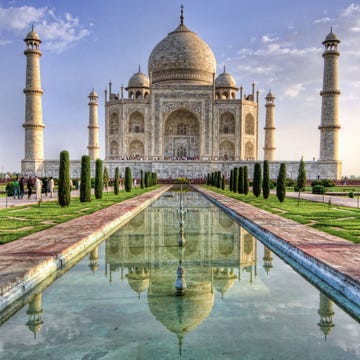
The Town & Country Grand Tour

How to Plan a Trip to Europe
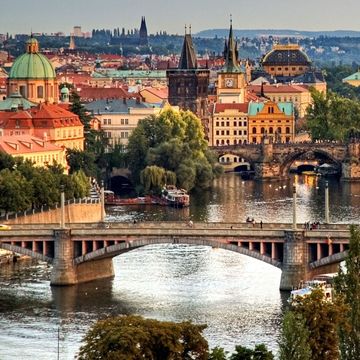
How to Plan a Trip to Prague

How to Plan a Trip to Spain
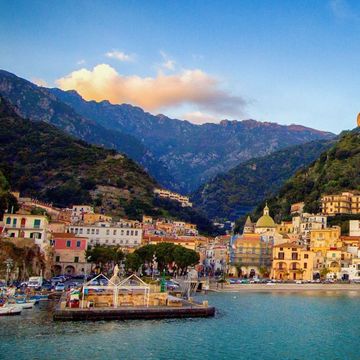
How to Plan a Trip to Italy
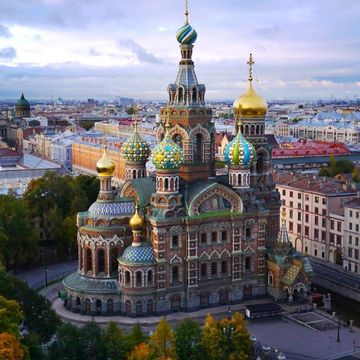
How to Plan a Trip to St. Petersburg

How to Plan a Trip to Istanbul
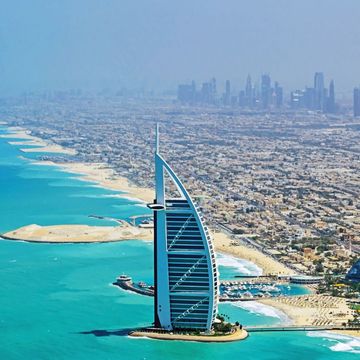
How to Plan a Trip to Dubai
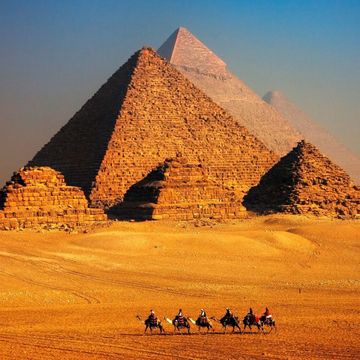
How to Plan a Trip to Egypt
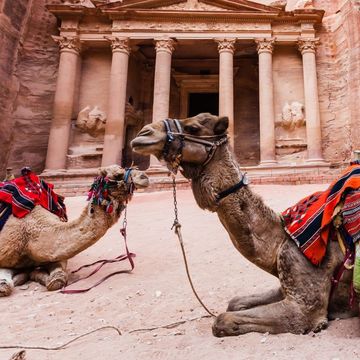
How to Plan a Trip to Jordan

Best sellers
Regional plans
- North America
- Latin America
- United Kingdom
All destinations
- Bosnia and Herzegovina
- Central African Republic
- Democratic Republic of Congo
- Dominican Republic
- Czech Republic
- El Salvador
- Faroe Islands
- Isle of Man
- Ivory Coast
- Liechtenstein
- New Zealand
- Papua New Guinea
- Philippines
- Puerto Rico
- Republic of Congo
- Saudi Arabia
- South Africa
- South Korea
- St. Pierre and Miquelon
- Switzerland
- The Netherlands
- Trinidad and Tobago
- Turks and Caicos
- United Arab Emirates

You haven't added products to the cart
Total: EUR € 0,00
Continue shopping
Choose a currency
Suggested languages
iPhone XS Max
iPhone 11 Pro
iPhone 11 Pro Max
iPhone SE (2020)
iPhone 12 Mini
iPhone 12 Pro
iPhone 12 Pro Max
iPhone 13 mini
iPhone 13 Pro
iPhone 13 Pro Max
iPhone SE (2022)
iPhone 14 Plus
iPhone 14 Pro
iPhone 14 Pro Max
iPad Pro (2018 and onwards)
Watch series 3
Watch series 4
Watch series 5
Watch series 6
Pixel 6 Pro
Pixel 7 Pro
P40 Pro (not including the P40 Pro +)
Mate 40 Pro
Galaxy Z Flip
Galaxy Z Flip 5G
Galaxy Z Flip3 5G
Galaxy Z Flip4
Galaxy Fold
Galaxy Z Fold2 5G
Galaxy Z Fold3 5G
Galaxy Z Fold4
Galaxy S21+ 5G
Galaxy S21 Ultra 5G
Galaxy S22+
Galaxy S22 Ultra
Galaxy Note 20 Ultra 5G
Galaxy Note 20
Galaxy S23+
Galaxy S23 Ultra
Galaxy S20 Ultra 5G
Rakuten Mini
Find X3 Pro
Find X5 Pro
Xperia 10 III Lite
Xperia 10 IV
Xperia 1 IV
Xperia 5 IV
Magic 4 Pro
Aquos Sense6s

Check out our guide on how to find out if my device is eSIM compatible or contact us on our online chat
- Travel Tips
8-step guide on how to plan your trip to China
Need to plan a trip to China? Our 8 steps guide will help you plan your travel itinerary and what to do it's cities and natural wonders!
March 7, 2024
In this article

Holafly saves you +30% compared to other roaming fees
Plans that may interest you

Traveling to China is surely a challenge when it comes to planning a trip. Depending on where you live, trips to China can take hours , but with enough preparation, you will be ready to enjoy what comes after your flight!
For those visiting the country, it’s important to consider that China is different from many other countries. With a rich culture, tons of places to visit, and many languages colliding into one place, having a guide to plan your trip to China will surely help you out.
That’s why we have prepared an 8-step guide that will help you prepare for your trip so you don’t have to miss anything when you arrive in the country.
Steps for China travel plan: tips for tourists
If this is your first time travel to China , chances are you need to know what to do when visiting the country, right? However, rather than simply getting to know famous places in China , it’s important to know what people need to visit the country.
People need to prepare for their trip with a flight, a place to stay, insurance, and make a trip plan to know as much as possible. All of this is possible by making a budget to travel to China , and that’s something we’ll talk about!
But we’ll also focus on recommending where to go and what the best time to visit the country is, and especially give some advice on what to take with you when it comes to documents, such as passports and visas!
So, let’s see how to plan a trip to China in 8 steps!
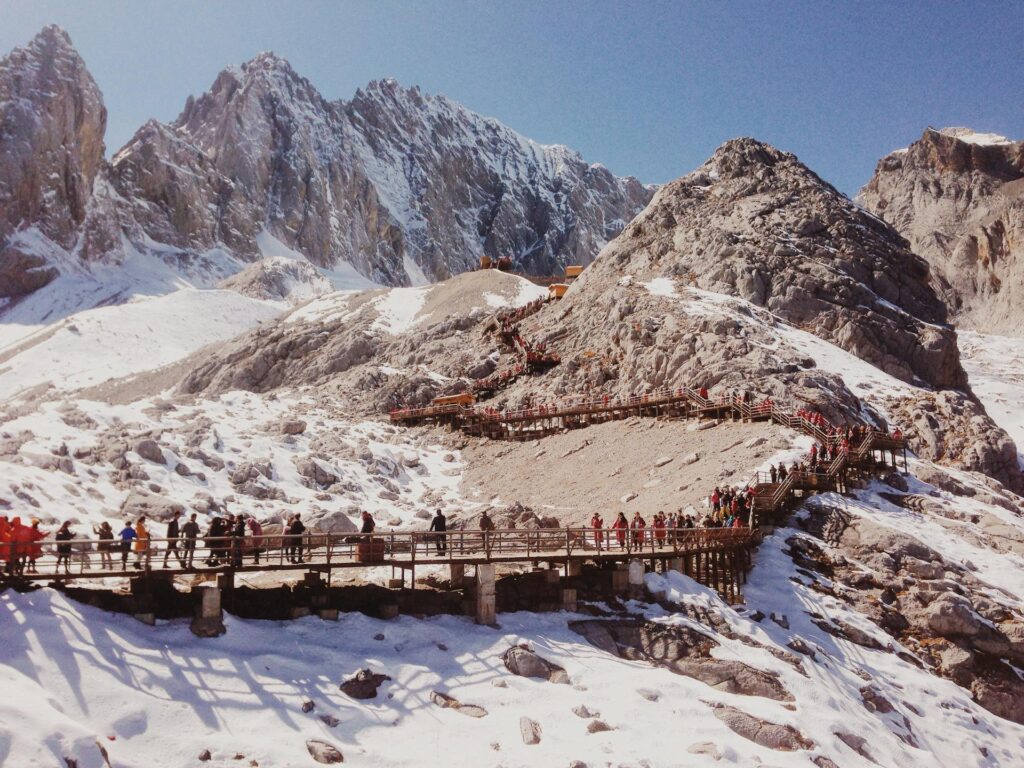
1. Choose the best time to visit China
When you plan a trip to China , you need to choose the best time to visit the country carefully.
First, it’s a must to consider China can be really cold when traveling in winter or near that season, but it’s also a good option as there aren’t as many visitors in the country. Other seasons offer better weather and temperatures, which travelers would easily adjust to in less time.
Also, China is an extremely tourist country . It means there will be high and low seasons for those visiting the country, which means prices can go up or down depending on the date.
Overall, the best time to travel to China is during Autumn, which lasts from September to the end of October. But why don’t we get to know what the advantages and disadvantages of traveling are in each season?
2. Choose your destination cities
When visiting China, people might think about visiting the Great Wall, walking around Beijing and Shangai, or simply visiting the natural destinations of the country. But truth be told, China is one of the largest countries in the world , and there’s a lot to see and do while traveling there.
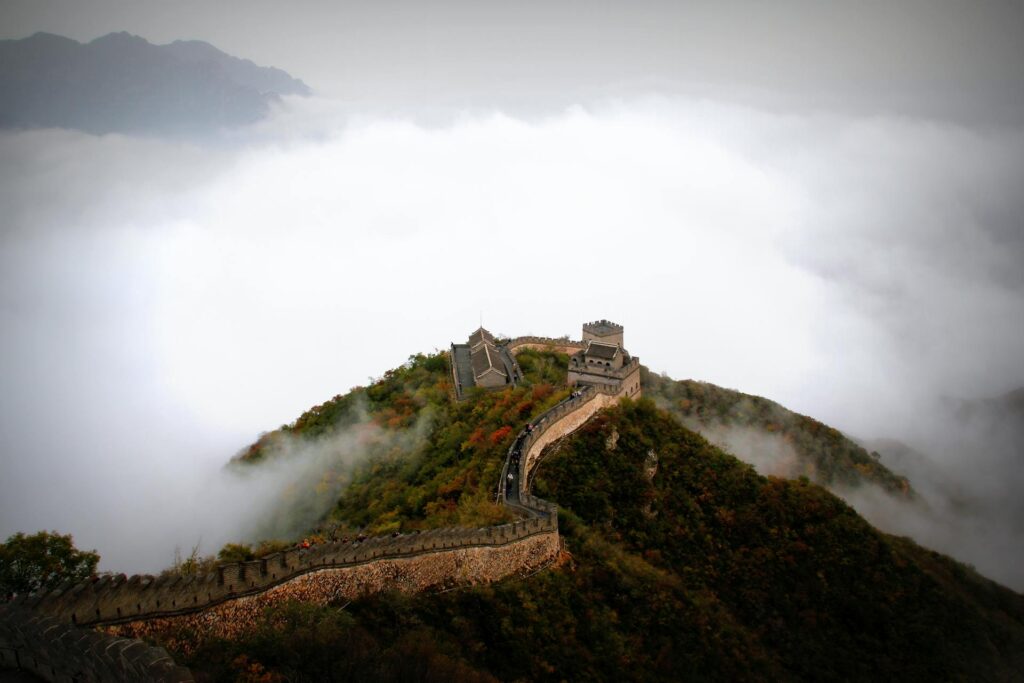
Of course, you can’t miss the chance to visit places like the Imperial Palace in Beijing or the Terracotta Warriors in Xi’an. Both places will take you back in time to ancient China and, if you go with a guide, you will get to know all the history behind these places .
As for natural sites to visit, the Zhangjiajie National Forest in Hunan province is a must-visit. The inspiration for the Avatar movie will be right there for you, and if you decide to go on sunny days, the views are breathtaking.
But there are more, such as the Jiuzhaigou Valley, the Huangshan Mountains, and even the famous Tibet , where the most adventurous travelers can go if they feel like visiting the highest region in which to live on earth.
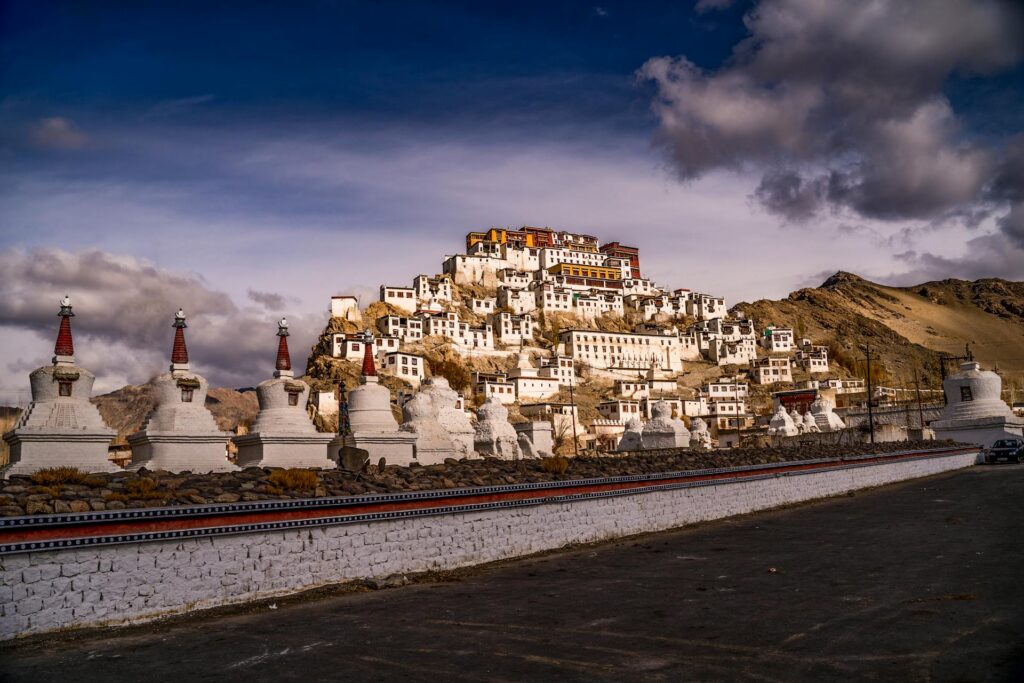
Now, if you are leaning into visiting cities in China, Hong Kong is a must-go. It is one of the most famous places in China that travelers can visit if they want to combine traditional Chinese scenarios with outstanding skyscrapers.
Overall, there’s a lot to do in China, so you better get ready to visit the places you like most!
3. Plan your budget
When planning a trip to China , one of the most difficult things to do is plan a budget. Depending on where people are traveling, the expenses can either go higher or lower based on flights and visas.
So, before you plan your budget to visit China, prepare a budget to apply for a visa . It’s also important to know that if you are visiting other regions like Macau or Hong Kong, you need a different type of visa. You can find out more about how to apply for a visa in Mainland China here .
Other than this, your next thing is to get a flight ticket to China . These can cost from $1,200 to $3,000 USD, depending on where people are traveling and what type of seat they take.
Now, depending on where you stay, chances are you have to take around $500 to $1,500 USD just for accommodation. Hotel prices vary from $100 to $350 USD, but of course, the higher the price, the better the place will be. Also, consider that in the high season, prices might be a bit higher.
Lastly, we recommend that people take around $1,000 to $1,500 for their expenses during the trip. Whether they pay for a tour, go out for dinner in a local restaurant, pay to visit natural destinations, or book a tour, this is the ideal amount to take per person .
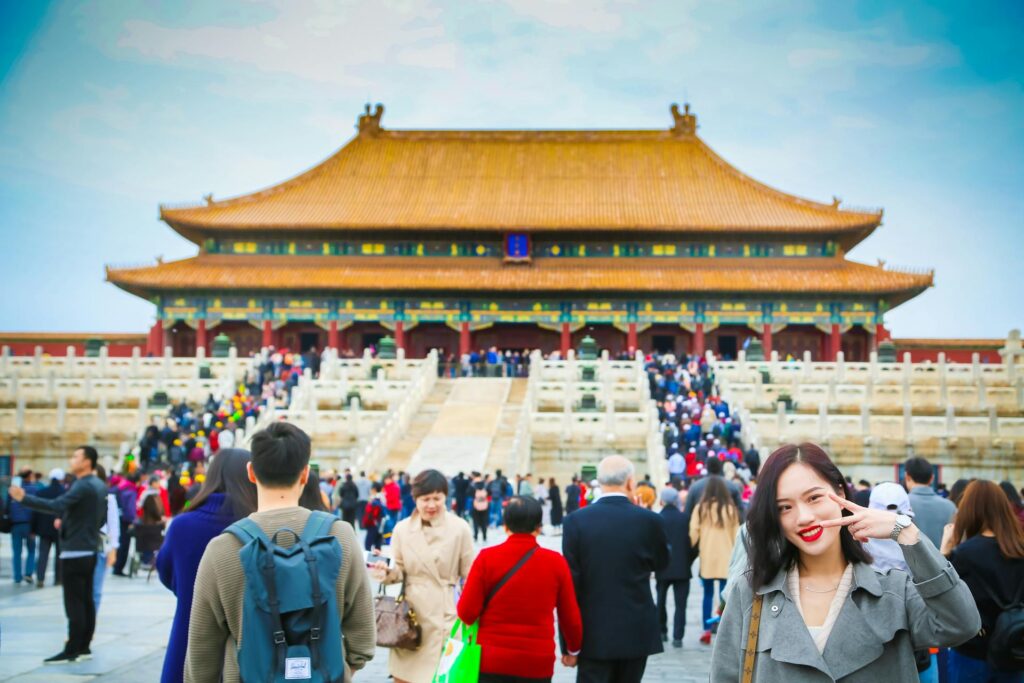
4. Flight and accommodation in advance
Your China travel plan requires a flight and accommodation. These two things must be booked in advance, as expected.
Depending on where people are traveling to China, there will be different airlines offering their services. A recommendation for travelers is to get a complete ticket to China, as buying a one-way ticket is more expensive . Even though this is possible, entering China requires a round-flight.
As for the accommodation, it’s a must for people to know where they are staying before they visit China. This is due to the fact that once people apply for a Chinese visa , authorities will ask where they are staying and for how long, so get your tickets with you!
To book your flight and hotel, it’s recommended to visit sites like Booking or Skyscanner to find good deals for travelers.
5. Prepare your travel documents in time
Traveling to China requires preparation, so it’s better to read about what documents you need to take there.
First of all, it’s a must to get a visa to visit Mainland China. For the visa, people have to show the following documents:
- Valid passport.
- Travel itinerary.
- Round-trip tickets.
If you need to read more about how to apply for a visa in China , you can do so through the China Embassy website .
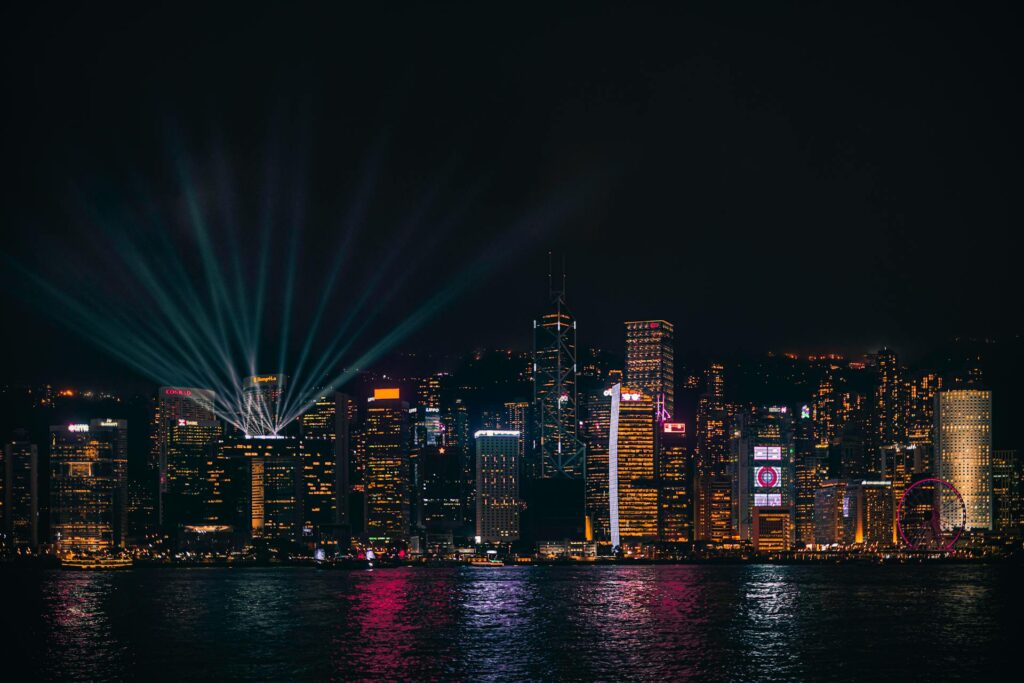
6. Get travel insurance
Travel insurance is recommended when abroad. Chances are people do have insurance back home, but if something happens while abroad, it’s better to be prepared for it.
In order to get travel insurance for China , you can rely on an international company or ask your provider if they offer coverage in China and how much they charge for that additional feature.
The idea is to get an insurance that offers the following coverage:
- Medical assistance.
- Loss of luggage.
- Flight delay or cancellation.
- Repatriation.
- Civil liability.
- Legal assistance.
Some of the best insurance for travelers are Allianz Travel Insurance, Travel Guard, and Aviva Travel Insurance. These offer the most complete packages and coverage for travelers to enjoy their trip, even if something happens while they are in China.
7. Essentials you should pack for traveling to China
It’s time to talk about what to pack to China . It’s important for people to be really careful when they are traveling, as this will help them choose what to take when it comes to clothes.
So, our first recommendation is to pack proper clothes for the season you are traveling to China. If it’s summer, don’t try to take a heavy jacket with you, and the same goes for winter, as you won’t need some shorts to go out. Prepare your clothes based on the season and places you will visit!
Second, don’t forget any of your important documents. Your passport, local ID, flight tickets, and hotel reservations are all a must to take when visiting China. And, of course, your travel insurance!
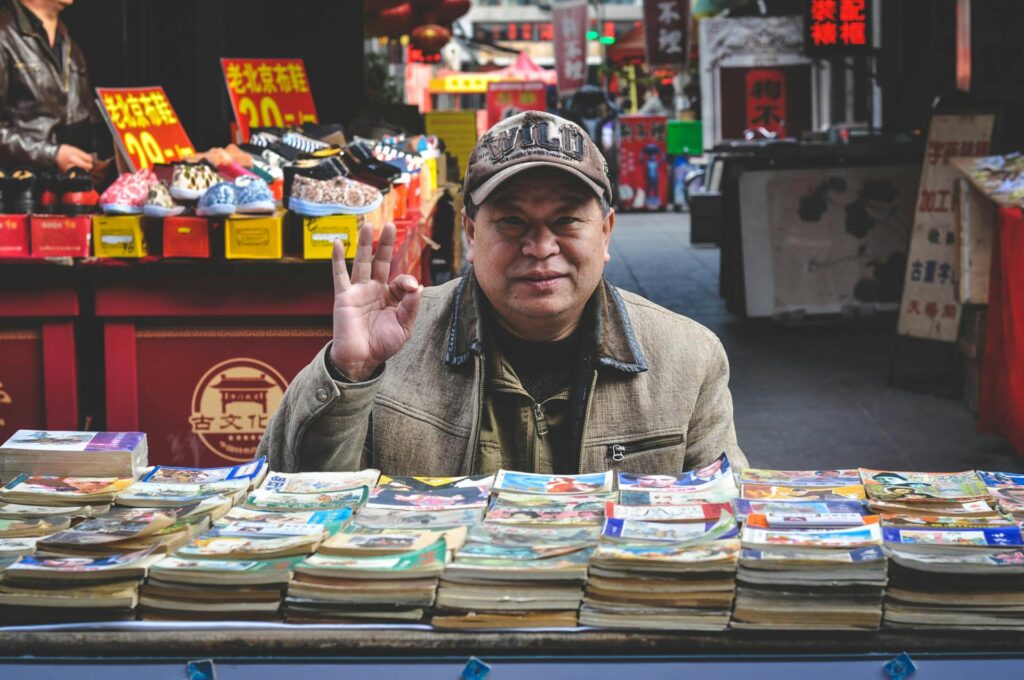
Third, depending on where you are traveling, we recommend checking if your electronics will work in China. If you are traveling from the United States, mobile and laptop chargers will surely work , but you need to check if other appliances will work, such as a dryer or something similar. If you are not from the US, then double-check your electronics before traveling!
Lastly, people need to have mobile internet in China . It’s important that travelers choose what service they prefer to take, whether it is roaming or an eSIM, as relying on local free WiFi networks is not advisable for travelers.
For those who want to use a mobile phone in China , our recommendation would be to get an eSIM. This is due to these being cheaper and allowing people to get access to the internet easier and faster. The Holafly China eSIM includes a VPN, which makes it a great option for travelers!
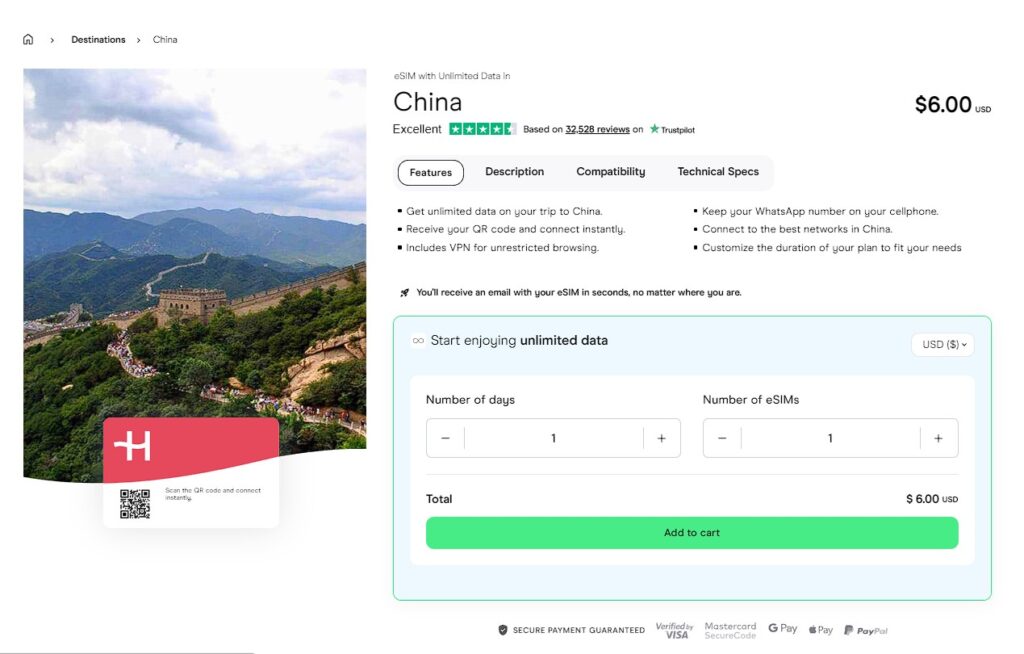
8. Learn some phrases in Mandarin
Even though people in China know English as it is a mandatory requirement when studying, not everyone is as fluent as travelers would think they are. That’s why it’s important to know some basic phrases in Mandarin.
The best part about knowing how to say certain phrases is how useful these can be. In some cases, it’s also a great way to show respect to people! Here are some phrases you can consider learning before traveling:
- Hello: 你好 (Nǐ hǎo)
- Goodbye: 再见 (Zàijiàn)
- Please: 请 (Qǐng)
- Can you speak English: 你能说英语吗?(Nǐ néng shuō yīngyǔ ma?)
- Where is the restroom: 公交车洗手间在哪里?(Gōngjiāo chē xǐshǒujiān zài nǎlǐ?)
- Where is the bus stop: 公交车站在哪?(Gōngjiāo chē zhàn zài nǎ?)
Conclusions on how to plan your trip to China
Traveling from one day to another sounds like a great plan for adventurous people. But when it comes to how to travel to China , it’s better to consider planning your trip with enough time.
Overall, those interested in making a trip to China now have a guide on how to do it. Every detail that must be considered is clear in this 8-step guide, which will make trip planning easier for everyone.
And what’s also important is that people know how to stay connected in the country . For us, the best China eSIMs are a must-know, even though we prefer taking Holafly for these trips thanks to their unlimited data plus VPN service!
So, if you are preparing everything carefully, get ready to visit China and have the adventure of your lifetime!
FAQ about planning a trip to China
Leaving flight tickets and hotels aside, visitors can take around $1,000 to $1,500 for a week in China. If we add other costs, it could be around $3,000 to $4,000 for a week only for one person.
Depending on where people travel, 7 days would be enough to enjoy a trip to China. There are many historical sites and natural destinations close to each other, so people can plan a trip for 7 days and visit as many as possible! For people trying to meet people from other regions in China, it’s advisable to extend the trip to 14 days.
The best months to visit to plan a trip to China are late March to May or during September to late October. These are considered the best months to visit the country due to its weather and what people can enjoy on those dates.
China has many interesting places to visit, both natural and cultural. So, it’s better for people to choose what they prefer to see when they plan a trip to China. We recommend Hong Kong, Beijing, Xi’an, Shanghai, and natural places like the Zhangjiajie National Forest or the Huangshan Mountains.
Related reading
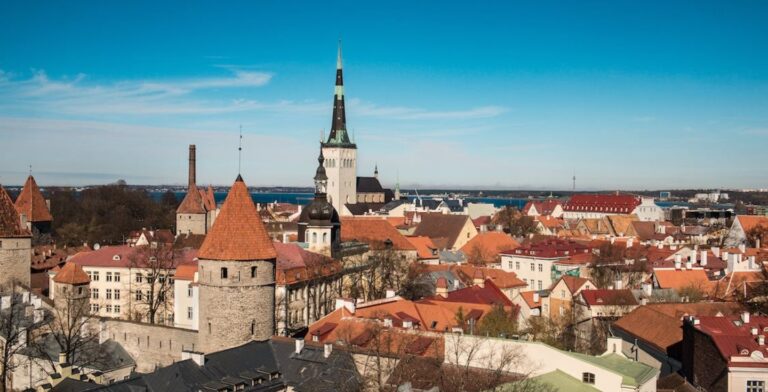
Digital Nomad Visa for Estonia: how to get it?
In this article, we are going to tell you all about it, how to apply it, what tools you will need to be a Digital Nomad, and more....

Tourist cards for Madrid: prices and more
If you are planning to travel to Madrid and you want to acquire a Tourist Card to improve your experience, find all the information about them in this...

Things to do in Morocco: all the things you cannot miss!
Are you planning to travel to Morocco? Read all about the best plans and activities to do during your stay in this wonderful...

Traveling to Canada from the UK: Tips and Tricks
If you're traveling to Canada from the UK, then get to know everything you need for your travels and how to connect with the eSIM...
- Privacy Overview
- Strictly Necessary Cookies
- Statistic Cookies
- Marketing Cookies
This website uses cookies so that we can provide you with the best user experience possible. Cookie information is stored in your browser and performs functions such as recognising you when you return to our website and helping our team to understand which sections of the website you find most interesting and useful.
Strictly Necessary Cookies should be enabled at all times so that we can save your preferences for cookie settings.
If you disable this cookie, we will not be able to save your preferences. This means that every time you visit this website you will need to enable or disable cookies again.
This website uses Google Analytics to collect anonymous information such as the number of visitors to the site, and the most popular pages.
Keeping this cookie enabled helps us to improve our website.
Please enable Strictly Necessary Cookies first so that we can save your preferences!
This website uses the following additional cookies:
(List the cookies that you are using on the website here.)

- 2 Weeks for Couple
- 2 Weeks for Family
- Thailand Lantern Festival
- Indonesia(Bali)
- South Korea
- China (HK, Taiwan)
- Itinerary Ideas
- Asia Highlights Travel Reviews
- Thailand Travel Reviews
- Vietnam Travel Reviews
- Cambodia Travel Reviews
- Japan Travel Reviews
- Myanmar Travel Reviews
- China Travel Reviews

How to Plan a Trip to China and Japan
China and Japan appear frequently on Asia bucket lists: they are the top representatives of Eastern culture. Both countries are now open for travel. Experience both for rich and distinctive Oriental culture on a memorable (and romantic) big trip or a wonderful family time.
In China you can visit the well-preserved Forbidden City and Terracotta Warriors, climb the magnificent Great Wall, see the lovely round pandas, and ride a bamboo raft on the Li River... In Japan you can have an afternoon tea dressed in kimonos with beautiful geishas, visit the symbol of Japan — Mount Fuji, and stay at a traditional ryokan (inn) with an onsen (hot spring bath)...
In this article, we are going to look at how to plan your first tour of China and Japan.
- 1. Do I need a visa to visit China and Japan?
- 2. What to See in China and Japan?
- 3. How Many Days Are Needed?
- 4. How Much Do They Cost? ?
- 5. Best Times to Travel
Do I need a visa to visit China and Japan?
Japan has restored the visa-waiver system from October 11th, 2022 . If your country is in the list of Exemption of Japan Visa like Australia , Canada , USA , UK and almost all European nations , you can visit Japan without applying for a visa in advance.
China has officially announced resumption of all visas including tourist visas (L visas) from March 15th, 2023. If your 10-year China visa, obtained before COVID-19, is still within its expiration date, you can enter China now without applying for a new one.
China has also reinstated its 144-hour visa-free transit policies, which allow you to enjoy a long stopover stay (6 days) in China without a visa. This policy option currently only applies to passengers transiting through China via the following cities: Shanghai, Hangzhou, Nanjing, Beijing, Tianjin, Shijiazhuang, Dalian, and Shenyang. This policy is valid for travelers from 53 countries including the US, the UK, Singapore, and Canada.
Book a tour with us and we will provide you with the invitation letter needed to apply for a Tourist Visa.
Discover real reviews of Highlights Travel Family 's best-rated service across trusted platforms.
What to See in China and Japan?
No matter whether you're travelling for a family vacation, anniversary, or birthday, China and Japan will not disappoint you.
Top Things to Do in China
- Beijing, Shanghai, and Xi'an are must-see cities for China first-timers.
1) Maximize your experience of Chinese history and culture in Beijing (3–4 days) with a close-up tour of the Forbidden City where you'd see the best-preserved wooden palaces in China, climb the Great Wall and be a 'hero', bike through the hutongs to experience traditional Beijing, and sample Beijing Roast Duck.
2) Appreciate a striking blend of modernity and history in Shanghai (2–3 days): take a leisurely walk in Yu Garden — a classical garden built in 1559, ascend the Oriental Pearl Tower for a full view of Shanghai, and see charming night views on the Bund.
3) Discover ancient and imperial China in Xi'an (2–3 days): visit the amazing Terracotta Army, make your own terracotta warriors at a cave dwelling, and bike on the Ancient City Wall.
4) To extend your tour, maybe supplement the culture and history with some of China's natural wonders: enjoy attractive idyllic scenery in Guilin (2–3 days), see cute pandas in Chengdu (2–3 days), and visit the Hallelujah Mountains in Zhangjiajie (2–3 days)
Most of China's cities are connected by a high-speed train ride of 5 hours or less.
Suggested reading: 11-Day China Classic Tours
Top Things to Do in Japan
- Tokyo, Kyoto, and Osaka are the top cities for a first-time trip to Japan
1) Experience the highly-modernized and history-filled in Tokyo (3–4 days): sample sushi at famous Tsukiji Market, view the spectacular Mount Fuji, try on samurai armor at Samurai Museum, satisfy your children's interest in anime, and take a day tour in Hakone for hot springs.
2) Soak in the strongly-traditional atmosphere of Kyoto (3–4 days): have an afternoon tea with beautiful geishas in kimonos, participate in a classical tea ceremony, sleep on a tatami at a traditional ryokan (inn), and have a close encounter with friendly deer in Nara National Park.
3) In the flourishing trade city of Osaka (1–2 days) , you can visit outstanding Osaka Castle, sample delicious street food in Dotonbori, and have fun in Universal Studios.
Our travel consultants provide 1-to-1 service. Contact us and we'll design a fulfilling, personalized trip based on the length of your holiday, preferences, and interests.
How Many Days Are Needed?
An awesome trip full of the main highlights of both China and Japan requires at least 2–3 weeks: 8–11 days in China and 7–10 days in Japan.
China is a big country with a rich culture and attractions that deserve more time to explore. Japan is a medium-sized country that you can visit the essence of at a more relaxed pace. Below are suggested itineraries for your inspiration.
1) An itinerary full of the essence of both countries:
- Days 1–2: Shanghai, China (the Bund, the Oriental Pearl Tower, Yu Garden)
- Days 3–4: Xi'an (the Terracotta Warriors, biking on the Ancient City Wall)
- Days 5–8: Beijing (the Forbidden City, Great Wall, Summer Palace, roast duck)
- Days 9–12: Fly to Tokyo, Japan (samurai, anime, Tsukiji Market, Mount Fuji...)
- Days 13–15: Kyoto (geisha, kimonos, ryokan, tea ceremony, feed deer in Nara)
- Day 16: Osaka and departure
If you have more holiday, you can add two or three days in Guilin, Chengdu, and/or Zhangjiajie.
2) A visa-free itinerary (using the 144-hour visa-free policy in China):
- Days 1–2: Osaka, Japan
- Days 3–4: Hiroshima and Miyajima (Peace Memorial Park and Itsukushima Shrine)
- Days 5–7: Kyoto sightseeing
- Days 8–11: Explore Tokyo
- Days 12–14: Fly to Beijing, China
- Day 15: Departure from Beijing
Just let us know your interests and requirements , and we can help make it happen.
How Much Do China and Japan Cost?
A two-week trip to China and Japan costs around US$7,500–9,000.
- Private tour costs in China are about US$200–250 per day per person, and the costs in Japan are US$350–500 per day per person , including 4-star hotels, tickets for attractions, private cars and private guides.
- Prices can double in peak season, especially airfares and hotels. At peak times, we recommend you plan ahead and book flights and hotels at least 6 months in advance.
- Ryokans are a worth a night's stay to try out traditional Japanese accommodation. They cost around US$300–450 per night.
- Direct flights from Beijing or Shanghai to Tokyo are about 3½ hours and cost US$400–1,000.
Best Times to Travel to China and Japan
China (central and northern) and Japan have similar climates, with distinct seasons.
- The tourism-friendly weather and the peak season in both countries is in spring (April to May) and autumn (September to October), when there is less rain, more clear days, and comfortable temperatures. In both countries, spring is the time to appreciate flowers, like cherry blossom, pear flowers, and peach blossoms. Meanwhile, autumn is the time to enjoy red maples and golden ginkgoes. >>> How to Plan a Japan Cherry Blossom Trip
- June to August is hot and rainy in China and Japan, but it won't affect your journey. China and Japan have plenty of air-conditioned facilities, and the rain usually won't continue for too long. Summer is the festival season in Japan and there are amazing firework-shows. We recommend coming to China in June, because it is cooler and less crowded than in July and August. Our private tours come with air-conditioned cars and private guides who help to book your tickets in advance and flexibly include meaningful indoor activities to dodge the heat and downpours.
- November to March is winter in much of Japan and China, when it gets cold and dry, and some northern Chinese and Japanese cities will see snow. It's the perfect time to go skiing and see snowy scenery. Christmas and New Year is the busiest time in both countries: hotels and flights are easily booked up. Thus, we suggest you make reservation at least 6 months in advance. >>> How to Plan a Family Ski Holiday
The weather is good/okay in compromise months November and March, generally speaking, and prices are relatively cheap.
Let us help you plan your trip! Contact us and we will customize a trip based on your available time, budget, interests, and other requirements.
Suggested reading: Best (& Worst) Times to Visit Japan >>>
You Might Like to Read
- How to Plan a Trip to China and Thailand
- How to Plan a Trip to China and South Korea
Why Asia Highlights (10,000+ reviews & 98.8% 5-star rating)
- Save Your Time:
- Less research, more enjoyment!
- Real-time 1V1 expert planning
- Maximize Your Flexibility:
- Personal local guide and ride
- Explore at your own pace
- Celebrate Your Journeys:
- Specially-crafted family adventures
- Celebrate milestones with style!
Get Inspired with Some Popular Itineraries
At Asia Highlights, we create your kind of journey — your dates, your destinations, at your pace. You can have any trip tailor made for your travel.
More Travel Ideas and Inspiration
Sign up to our newsletter.
Be the first to receive exciting updates, exclusive promotions, and valuable travel tips from our team of experts.
Why Asia Highlights
Where can we take you today.
- Middle East
- African Safari
- Travel Agents
- Loyalty Program
- Our Differences
- Privacy Policy
Address: Building 6, Chuangyi Business Park, 70 Qilidian Road, Guilin, Guangxi, 541004, China
Putin announces plans to visit China in May
Russian President Vladimir Putin said Thursday he plans to visit China in May, in what could become the first foreign trip for the Russian leader after he extended his rule by six more years in an election that offered voters little real choice.
Putin announced the plans for the visit at a congress of the Russian Union of Industrialists and Entrepreneurs in Moscow. He didn’t say when exactly it would take place and didn’t offer any other details.
Putin’s inauguration is scheduled for May 7, Russian lawmakers said earlier this week. Last month, the 71-year-old Russian leader secured his fifth term in office in a vote with no real opposition, extending his 24-year rule.
Russia’s growing economic and diplomatic isolation because of its war against Ukraine has made it increasingly reliant on China, its former rival for leadership of the Communist bloc during the Cold War.
According to a recent U.S. assessment , China has surged sales to Russia of machine tools, microelectronics and other technology that Moscow in turn is using to produce missiles, tanks, aircraft and other weaponry for use in the conflict.
China has repeatedly said it isn’t providing Russia with arms or military assistance, although it has maintained robust economic connections with Moscow.
Beijing has not provided direct lethal military support for Russia and has sought to project itself as neutral in the Ukraine conflict. It has refused to condemn Moscow’s actions and declared in 2022 that it had a “no-limits” friendship with Russia. The country has denounced Western sanctions against Moscow, and accused NATO and the United States of provoking Putin’s invasion.
China has also proposed a peace plan that was largely dismissed by Ukraine’s allies, who insisted that Moscow must withdraw its forces from the neighboring country as a condition for peace.
Follow AP’s coverage of the war in Ukraine: https://apnews.com/hub/russia-ukraine

- Election 2024
- Entertainment
- Newsletters
- Photography
- Personal Finance
- AP Investigations
- AP Buyline Personal Finance
- AP Buyline Shopping
- Press Releases
- Israel-Hamas War
- Russia-Ukraine War
- Global elections
- Asia Pacific
- Latin America
- Middle East
- Election Results
- Delegate Tracker
- AP & Elections
- Auto Racing
- 2024 Paris Olympic Games
- Movie reviews
- Book reviews
- Personal finance
- Financial Markets
- Business Highlights
- Financial wellness
- Artificial Intelligence
- Social Media
Putin announces plans to visit China in May
FILE - Russian President Vladimir Putin attends a cabinet meeting via videoconference at the Novo-Ogaryovo state residence outside Moscow, Russia, Wednesday, April 17, 2024. Putin said he plans to visit China in May, in what could become the first foreign trip for the Russian leader after he extended his rule by six more years in an election that offered voters little real choice. Putin’s inauguration is scheduled for May 7. (Gavriil Grigorov, Sputnik, Kremlin Pool Photo via AP, File)
- Copy Link copied
Russian President Vladimir Putin said Thursday he plans to visit China in May, in what could become the first foreign trip for the Russian leader after he extended his rule by six more years in an election that offered voters little real choice.
Putin announced the plans for the visit at a congress of the Russian Union of Industrialists and Entrepreneurs in Moscow. He didn’t say when exactly it would take place and didn’t offer any other details.
Putin’s inauguration is scheduled for May 7, Russian lawmakers said earlier this week. Last month, the 71-year-old Russian leader secured his fifth term in office in a vote with no real opposition, extending his 24-year rule.
Russia’s growing economic and diplomatic isolation because of its war against Ukraine has made it increasingly reliant on China, its former rival for leadership of the Communist bloc during the Cold War.
According to a recent U.S. assessment , China has surged sales to Russia of machine tools, microelectronics and other technology that Moscow in turn is using to produce missiles, tanks, aircraft and other weaponry for use in the conflict.
China has repeatedly said it isn’t providing Russia with arms or military assistance, although it has maintained robust economic connections with Moscow.
Beijing has not provided direct lethal military support for Russia and has sought to project itself as neutral in the Ukraine conflict. It has refused to condemn Moscow’s actions and declared in 2022 that it had a “no-limits” friendship with Russia. The country has denounced Western sanctions against Moscow, and accused NATO and the United States of provoking Putin’s invasion.
China has also proposed a peace plan that was largely dismissed by Ukraine’s allies, who insisted that Moscow must withdraw its forces from the neighboring country as a condition for peace.
Follow AP’s coverage of the war in Ukraine: https://apnews.com/hub/russia-ukraine
Xi's trip to Europe may lay bare West's divisions over China strategy
- Medium Text

- China's Xi makes first visit to Europe in five years
- EU states differ on China strategy, weakening bloc's leverage
- EU threatens tariffs on China EV vehicles, green tech
- Paris, Brussels readier than Berlin to push back on subsidies
- Xi's Serbia, Hungary trips seen as move to deepen EU rifts
'WE DON'T PROTECT ENOUGH'
Russia concerns.
Sign up here.
Reporting by Laurie Chen in Beijing and Michel Rose in Paris; Additional reporting by John Irish in Paris, Andreas Rinke in Berlin and Daria Sito-Sucic in Belgrade; Editing by Richard Lough, William Maclean
Our Standards: The Thomson Reuters Trust Principles. New Tab , opens new tab

Thomson Reuters
Laurie Chen is a China Correspondent at Reuters' Beijing bureau, covering politics and general news. Before joining Reuters, she reported on China for six years at Agence France-Presse and the South China Morning Post in Hong Kong. She speaks fluent Mandarin.

Germany has recalled its ambassador to Russia after Berlin accused Moscow of launching cyberattacks on its defence and aerospace firms and ruling party, a spokesperson for the foreign ministry said on Monday.

World Chevron

France sends envoy to Putin inauguration as Berlin boycotts
France will send its ambassador to the inauguration of Russian President Vladimir Putin for his next six-year term in office on Tuesday, a French diplomatic source said on Monday, in contrast with Germany which said it would not be represented.

- Work & Careers
- Life & Arts
What does Elon Musk’s China trip mean for Tesla?

- What does Elon Musk’s China trip mean for Tesla? on x (opens in a new window)
- What does Elon Musk’s China trip mean for Tesla? on facebook (opens in a new window)
- What does Elon Musk’s China trip mean for Tesla? on linkedin (opens in a new window)
- What does Elon Musk’s China trip mean for Tesla? on whatsapp (opens in a new window)
Edward White in Shanghai and Peter Campbell in London
Roula Khalaf, Editor of the FT, selects her favourite stories in this weekly newsletter.
Elon Musk appears to be on the cusp of deploying Tesla’s “full self-driving” system in the world’s biggest car market.
Musk flew out of Beijing on Monday after meeting China’s premier, Li Qiang, on Sunday and sealing a deal with Chinese tech giant Baidu to use the group’s mapping and navigation systems. Hours earlier, a Chinese industry group said Tesla ’s electric vehicles were among more than 70 cars that had been successfully tested for data security compliance.
Taken together, Musk appears to have smoothed the path for the US company’s semi-autonomous driving technology to be rolled out in China . Tesla’s share price closed 15.3 per cent higher on Monday at $194.05 on reports of the Baidu deal but remains at half of its 2022 peak.
Here is what the billionaire’s trip to China means for Tesla and the government in Beijing.
How much is Chinese approval worth to Tesla?
As sales fall and competition grows fiercer, Tesla has increasingly talked up the commercial opportunities that its self-driving technology offers.
“Going balls to the wall on autonomy is a blindingly obvious move,” Musk wrote on X, his social media platform, this month.
Tom Narayan, an analyst at RBC Capital Markets, said income from autonomous driving accounted for a fifth of his share price target for Tesla. The carmaker charges US drivers $99 a month to activate “full self-driving”, a partially autonomous system that ostensibly chauffeurs drivers but still requires motorists to pay attention.
Being allowed to offer the same service in China, where the company has about 1.6mn cars on the road, “would unlock a significant fleet of Tesla vehicles able to charge subscription fees”, said Narayan.
The move into China would also “push Tesla further to be an industry standard for software,” he added, and encourage other carmakers to license its technology.
Dan Ives, an analyst at Wedbush, said Musk’s trip resulted in the “long-awaited FSD approval”, which amounted to a “watershed moment” for the company. Tesla’s long-term valuation “hinges” on income from autonomy, he said, and China had been a “missing piece of the puzzle”.
“This is a key moment for Musk as well as Beijing at a time that Tesla has faced massive domestic EV competition in China along with softer demand,” he added.

Will new technology turn around slowing sales growth at Tesla?
Tesla has put significant stock in the value of globalising its self-driving technology as its core EV line-up ages compared with newer products from its Chinese rivals.
While arch-rival BYD aims to launch cars within 18 months of conception, it has been four years since Tesla released the Model Y, its best-selling car. The company announced the Roadster sports car in 2017 but has yet to begin production.
Musk last week promised that a new lower-cost model was coming next year. But despite a “refreshed” Model 3 entering production this year, the company is still nurturing a product offering that is significantly older than that of its competitors.
“The Tesla range is looking quite old,” said one former Tesla executive. “The [battery] tech is fine, but there are others out there, especially the Chinese, who are arguably better. The question [if he deploys FSD], is how much longer does he have a technology advantage on that?”
Expansion in China will be a test of how Tesla’s self-driving technology stacks up against local rivals. “They are betting it is the tech that makes or breaks a purchase decision,” said the former executive.
But it is not clear how confident consumers outside of urban areas are in the technology. “FSD works in Silicon Valley but not in Illinois,” the person added. “For the mass market it is still witchcraft.”
You are seeing a snapshot of an interactive graphic. This is most likely due to being offline or JavaScript being disabled in your browser.

Why is helping Tesla important to China?
Under President Xi Jinping, many experts believe China has prioritised security over economic growth and domestic technology independence over integration with the outside world.
Angela Zhang, a professor of law at the University of Hong Kong and author of two books on Chinese technology regulation, said there were signs that Beijing was “easing” its approach as it needed foreign investment to shore up an economy in “deep trouble”.
Chinese EV producers want to dominate global markets and Beijing has a “strong incentive” to show the world that data security issues are not a barrier to international trade for Chinese EVs, she said.
Feng Chucheng, a partner at China-focused Hutong Research, said allowing Tesla’s self-driving technology had “strategic value” to Beijing.
The Cyberspace Administration of China has for several years been rolling out a sweeping legal framework for how businesses collect and use data, with strict rules on cross-border data flows and data viewed as a risk to Chinese security or citizens.
Despite western concerns about “over-securitisation”, the recent development of China’s data rules has been more “pro-growth”, Feng said. Beijing has been aligning its rules on outbound data transfer in line with the CPTPP and DEPA, two key regional trade pacts.
“Tesla’s rollout in China will be much desired for Beijing to prove that its data regulatory regime is gaining traction,” he said.

Can Tesla win back the Chinese market?
China is Tesla’s biggest market outside the US, a vital part of the supply chain for its EVs and of growing importance as a regional export hub. Musk’s decision in 2018 to build a multibillion-dollar factory in Shanghai is credited with helping to spearhead the rapid growth of China’s EV industry.
But since then, the Chinese EV industry has stormed ahead. Tesla’s share of new EV sales stands at 7.5 per cent compared with 33 per cent for Warren Buffett-backed BYD. A core complaint from Chinese consumers has been the dearth of new Tesla models and high-tech features.
Despite the share price jump on Monday, analysts in China voiced caution.
Tom Nunlist, an expert in Chinese technology regulation with Beijing-based consultancy Trivium, said China’s regulatory environment was “still emerging”. “The folks that are overseeing the safety of automatic driving on highways are highly professional. They’re not going to relax their standards because of this [Musk’s visit],” he said.
Tu Le, founder of the Sino Auto Insights consultancy, said local rivals including Xpeng, Nio and Li Auto had their own self-driving systems and would drop their prices “the second” they thought consumers favoured Tesla’s technology. “Western analysts think Tesla automatically wins,” he said. “There are no guarantees.”
Promoted Content
Follow the topics in this article.
- US & Canadian companies Add to myFT
- Technology sector Add to myFT
- Electric vehicles Add to myFT
- Chinese business & finance Add to myFT
- Tesla Inc Add to myFT
International Edition
We've detected unusual activity from your computer network
To continue, please click the box below to let us know you're not a robot.
Why did this happen?
Please make sure your browser supports JavaScript and cookies and that you are not blocking them from loading. For more information you can review our Terms of Service and Cookie Policy .
For inquiries related to this message please contact our support team and provide the reference ID below.
- International edition
- Australia edition
- Europe edition
Ireland emerges from technical recession; Ocado CEO’s £15m bonus plan approved despite revolt – as it happened
Irish GDP returned to growth at the start of the year, while 19% of Ocado shareholders oppose pay policy that could give boss Tim Steiner a £15m bonus
- 7d ago Closing post
- 7d ago One in five Ocado shareholders oppose boss's £14.8m package
- 7d ago BHP and Vale propose $25bn reparations to settle Mariana disaster
- 7d ago Tesla shares jump 12% after Musk's Beijing trip
- 7d ago IMF's Georgieva hails falling eurozone inflation
- 29 Apr 2024 German harmonised inflation rises to 2.4%
- 29 Apr 2024 Spanish inflation rises after energy support cut
- 29 Apr 2024 Ireland's technical recession over as GDP rises in Q1 2024
- 29 Apr 2024 Eurozone economic sentiment weakens
- 29 Apr 2024 Inflation picks up in some German states
- 29 Apr 2024 FTSE 100 starts new week with another record high
- 29 Apr 2024 Prices of flats increasing more sharply than other property types, says Halifax
- 29 Apr 2024 Knight Frank: house prices are once again under downwards pressure
- 29 Apr 2024 Introduction: Mortgage repayments up 60% since 2021, reports Zoopla

Ireland's technical recession over as GDP rises in Q1 2024
Newsflash: Ireland has escaped a technical recession, after its economy returned to growth this year driven by its IT sector.
Ireland’s GDP is estimated to have risen by 1.1% quarter-on-quarter in January-March, new data from the Central Statistics Office shows. Growth was driven mainly by an increase in the Information & Communication sector.
That follows a 3.4% tumble in GDP in the final three months of 2023.
Enda Behan , statistician in the National Accounts Data Collection and Quality Division , said:
“In today’s release, GDP is estimated to have expanded by 1.1% in Q1 2024 in volume terms when compared with Q4 2023. This was driven by an increase in the multinational dominated sector of Information & Communication in Q1 2024. GDP is estimated to have fallen by 0.8% when compared with the same quarter of 2023.
Ireland’s GDP fell in every quarter of last year, shrinking by 3.4% in Q1, 0.1% in Q2 and 2.5% in Q3.

But….GDP is not a very precise way of measuring the Irish economy, as it is dominated by multinational companies based in the Republic.
Ireland’s government favours another measures, called modified domestic demand , which excludes the large transactions of foreign corporations. Unfortunately we did not have new MDD data today.
Early estimates indicate that Gross Domestic Product (GDP) increased by 1.1% in Quarter 1 2024 https://t.co/Lp4kLgQkMY #CSOIreland #Ireland #NationalAccounts #Economy #Economics #EconomicIndicators #GovernmentFinances #EconomicActivity #Output #ValueAdded pic.twitter.com/UWxvVRT3Ry — Central Statistics Office Ireland (@CSOIreland) April 29, 2024
PS: The London stock market has ended the day at a new closing high, just.
The FTSE 100 index has closed for the night up 7 points, or 0.1%, at 8147 points. That’s its latest in a series of closing highs.
Earlier in the session it nudged a new intraday high of 8189.14 points.
Closing post
Time to wrap up… here’s today’s main stories:
One in five Ocado shareholders oppose boss's £14.8m package
Newsflash: Online grocery firm Ocado has been given a bloody nose by shareholders protest over its plan to give its CEO Tim Steiner a potential bonus of almost £15m.
But while one in five shareholders opposed the plan, it has been approved.
At today’s annual general meeting, 19.4% of shareholders opposed the approval of the Directors’ Remuneration Policy.
Another resolution, to approve the Ocado Performance Share Plan 2024, was passed with 80.62% votes in favour, and 19.38% against.
As we reported this morning, shareholder advisory group Glass Lewis had urged investors to vote against Ocado’s remuneration policy and performance share plan, citing “egregious remuneration practices”.
Campaign group ShareAction planned to ask Ocado’s board why it was comfortable proposing the multimillion-pound pay package for Steiner while “refusing to pay hundreds of its workers a real living wage of £12 an hour”.
Today, we're at @Ocado ’s AGM to ask the board of directors to pay ALL of its staff the real #LivingWage . Our campaigner Ruan is joined by AGM activist Danny. Hear what we’re asking of the company 🎬⏬ pic.twitter.com/u3tQAHJm7B — ShareAction (@ShareAction) April 29, 2024
Under Ocado’s pay plan, Steiner could receive a bonus worth up to 1,800% – or an “enhanced multiplier” – of his £824,570 base salary if its share price hits £29.69 in three years’ time and other performance targets are met.
Ocado shares hit £29 during the pandemic when online shopping surged, but have since fallen, trading at 357p today.
He would receive an award worth 600% of his base salary, or almost £5m, if targets for total shareholder returns and other performance measures are met but the share price goal is missed.
BHP and Vale propose $25bn reparations to settle Mariana disaster
In the mining sector, BHP Group and Vale are proposing a $25.7bn settlement over Brazil’s worst environmental disaster, the Mariana dam failure.
The collapse of the Fundão tailings dam in November 2015 killed 19 people, polluted a river and devastated livelihoods downstream of the Samarco Mariana Mining Complex.
The dam was co-owned by Vale and BHP , through their Brazilian joint venture Samarco ; they have been negotiating with the Brazilian State and Federal Government and other public entities.
Today, they say:
As part of the settlement negotiations, BHP Brasil, Samarco and Vale have submitted a non-binding, indicative settlement proposal which is within BHP Brasil’s provision for the Samarco dam failure. The proposal is for a total financial value of approximately R$127 billion (approximately US$25.7 billion) on a 100% basis with Samarco as the primary obligor and a 50% contribution from each of Vale and BHP Brasil as secondary obligors if Samarco cannot fund.
The new offer includes around R$37bn (US$7.7bn) already spent on remediation and compensation to date.
Tesla shares jump 12% after Musk's Beijing trip
Shares in Tesla have surged 12% at the start of trading in New York, recovering some of their recent losses.
Investors appear to be pleased with Elon Musk’s weekend work in Beijing, where he secured a deal for Tesla to use mapping data provided by web search company Baidu.
Tesla Shares Up 10.7% After Clearing Key Regulatory Hurdles for Self-Driving in China — DB News TradFi (@DBNewswire) April 29, 2024
That deal could be an important step towards Tesla introducing driver assistance technology in the world’s largest car market.
My colleague Jasper Jolly explains:
Baidu, which dominates web search in China, will provide mapping and navigation functions to help Tesla operate its driver assistance technology, which it calls “full self-driving”, or FSD , according to sources cited by Bloomberg News. Mapping services – crucial to driver assistance technologies – are strictly controlled by China’s government. Despite its name, FSD does not provide autonomous driving abilities: it requires a driver who has “hands on the wheel and is prepared to take over at any moment”. However, launching it in China could help Tesla in the fierce competition for market share in the country, and provide more income. It costs $8,000, or $99 (£80) a month, although it is not available in many countries.
As covered earlier ( 8.06am ), Musk also met with China’s premier, Li Qiang, during an unexpected trip to the Chinese capital.
Tesla’s shares are still down 25% so far this year, but have been recovering since mid-April when they sunk to around $140 each, amid concerns over slowing sales .
Kristalina Georgieva then warns that Europe is facing two problems – low growth and high debt.
She explains:
Problem one: growth . Our World Economic Outlook shows the global economy converging back to a rather weak trend rate of growth. Yes, the US economy still looks like it’s firing on all cylinders, but that is unlikely to last. In China, real-estate issues weigh on the outlook. In Europe, productivity growth lags behind, reflecting much less private investment in new technologies than in the United States. This is why we say it is vital to pursue structural reforms and scale-up innovation and investment. Europe needs faster productivity growth, and that means reforms—including transformational ones in the energy and digital arenas, and the completion of the single market.
🇪🇺🇺🇸💸⚡️- US economy does not have long to demonstrate high rates of its current activity -IMF head Kristalina Georgieva. “The US economy is still running at full capacity, but it is unlikely that this will last,” she said in her opening speech the budget conference. #EU - #USA — Millitary Nerd (@MilitaryNerdd) April 29, 2024
Problem two: debt. After two massive shocks—the pandemic and the energy-supply shock caused by Russia’s invasion of Ukraine—many countries are shouldering very heavy public debt burdens. This is why we say many countries must now pursue judicious, wellarticulated medium-term fiscal consolidation to rebuild buffers— appropriately tailored to country specifics, of course.
This is “not a great place” to start a big push to develop clean energy supply and fight climate change, Georgieva cautions, adding:
But let us be clear: if we do not win the fight against climate change, all of humanity together, we will all suffer.
IMF's Georgieva hails falling eurozone inflation
Over in Brussels, the head of the International Monetary Fund has welcomed signs that inflation is easing in the eurozone.
Kristalina Georgieva , IMF managing director, is addressing the Annual EU Budget Conference, and begins by hailing easing inflation.
Georgieva says:
The global environment. When we stare out at the horizon, what do we see? I see a hint of sunshine. But I also see a dull grey sky and some dark clouds. Let me start with the sunshine. After a global burst of inflation to levels many people have never seen in their lifetimes, it looks like the ECB’s tight monetary policy is doing its work. This is something I need to say carefully because it’s not over yet. But, yes, it looks promising: inflation down from its disturbingly high peaks and no deep recessions in Europe.
Georgieva then warns, though, that the forget though, that “the last mile can be the hardest” in the fight against inflation.
No longer will the major central banks be marching in lockstep, as they did during the recent ratehiking cycle. No. From now on, each currency zone will have to chart its own path. An interest rate divergence looms, and maybe some exchange rate movements too. We save the champagne for later.

Over at Heathrow Airport, members of Border Force have set up a picket line as a four-day strike in a dispute over working conditions.
The Public and Commercial Services (PCS) union said more than 300 of its members will take part in the industrial action, which started at 5am today and will continue until 7am on Friday.
The union said the workers, based at Heathrow’s Terminals 2, 3, 4 and 5, are protesting at plans to introduce new rosters they claim will see around 250 of them forced out of their jobs at passport control.
PCS general secretary Fran Heathcote said:
“It’s disappointing that, despite talks last week, the Home Office is not prepared to grant any flexibility to their new roster. “None of our dedicated and highly experienced members in the Border Force want to take strike action but the way they’ve been treated by their employer leaves them with no option. “The Home Office still have time to prevent tomorrow’s strike if they agree to abandon this unworkable new system.”
German harmonised inflation rises to 2.4%
Just in: German inflation rise slightly this month.
On an EU-harmonised basis, German consumer price inflation rose to 2.4% this month, up from 2.3% in March.
On a non-harmonised basis, though, German inflation was flat at 2.2%, with services inflation slowing to 3.4% but goods inflation rising to 1.2%.
Core inflation, which strips out food and energy, eased to 3% in April from 3.3% in March.
German CPI data comes in slightly below expectations: • CPI inflation comes in at 0.5% MoM and 2.2% YoY (vs 0.6% MoM and 2.3% YoY expected) in Apr, unchanged from Mar. • Core CPI inflation eases from 3.3% YoY in Mar to 3.0% YoY in Apr. • Services inflation at 3.4% YoY (prev… pic.twitter.com/nhsL62LdU2 — MTS Insights (@MTSInsights) April 29, 2024
Spanish inflation rises after energy support cut
Inflation in Spain has risen, as Madrid’s government cut back support for energy bills.
Spanish consumer price inflation rose to 3.3% per year in April, up from 3.2% in March.
Inflation was pushed up by gas prices – which rose this month but fell in April 2023 – after Spain’s government stopped measures taken to ease rising inflation after Russia’s invasion of Ukraine two years ago.
Spanish inflation accelerates as government energy aid removed https://t.co/yGzUN2VzpN pic.twitter.com/o4NuW9GMUH — Zoe Schneeweiss (@ZSchneeweiss) April 29, 2024
Food prices also rose.
Core inflation, which strips out food and energy prices, fell to 2.9% from 3.3% in March.
This data, and Germany’s CPI report due in half an hour, will feed into the latest eurozone inflation data due at 10am tomorrow.
Ireland’s return to growth is a sign that tomorrow’s eagerly-awaited eurozone GDP report may bring good news.
Economists predict the eurozone returned to modest growth in Q1 2024, after shrinking slightly in the second half of last year ( GDP fell by 0.1% in both Q3 and Q4 2023 ).
Ireland’s 1.1% growth, and the 0.3% recorded in Belgium this morning , will help that return to growth.
Analysts at Investec said last Friday:
Recent revisions now mean that the Eurozone was in a technical recession in H2, albeit by the slimmest of margins. Given that economic data at the start of 2024 has been more positive, we expect the Eurozone exited that recession in Q1, with a 0.1% quarterly expansion in output.
Ireland’s economy partially rebounded in the first quarter, a gain that may have helped the euro zone as a whole exit a shallow recession https://t.co/PuXte7ZQaY — Bloomberg Economics (@economics) April 29, 2024
Eurozone economic sentiment weakens
Just in: economic sentiment has fallen marginally in the EU and the euro area, as Europeans fret about their employment prospects.
The Economic Sentiment Indicator declined in the EU (by 0.3 points to 96.2) in April, and by more within the eurozone (where it fell by 0.6 points to 95.6).
The employment expectations gauge fell slightly more sharply.
Confidence among industrial firms, and among services companies, both fell; consumer confidence inched up, but remained in negative territory.
Within individual countries, economic sentiment deteriorated significantly in France (-4.8 points) and more moderately in Italy (-1.3 points), while it improved markedly in Spain (+2.3), Germany (+1.5) and Poland (+1.5).
The ESI remained broadly stable in the Netherlands (rising by 0.3).

Tomorrow we learn whether the eurozone returned to growth, when GDP data for the first quarter of 2024 is released….
Belgium’s economy has continued to grow at a modest pace, new data from its central bank shows.
Belgian GDP rose by 0.3% in January-March, the fourth quarter in a row in which a 0.3% expansion was recorded.
Both industry and services grew by 0.3%, while the construction sector shrank by 0.2%.
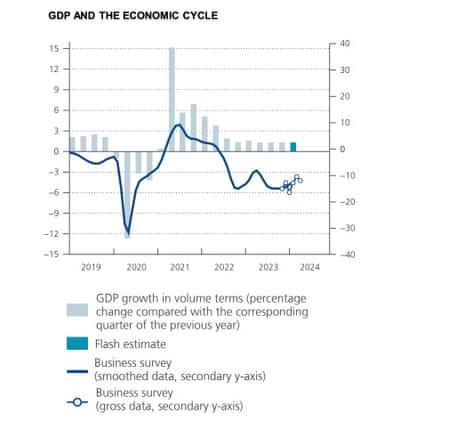
Sweden’s economy has shrunk for the fourth quarter in a row, leaving it in recession.
Swedish GDP shrank by 0.1% in the first quarter of 2024, Statistics Sweden reported this morning.
Mattias Kain Wyatt , economist at Statistics Sweden , says:
“Swedish economic activity continued to weaken in the first quarter of 2024 with contractions in the months of February and March. This is the fourth consecutive quarter with negative growth.”
Marc Ostwald, chief economist & global strategist at ADM Investor Service, says the data is much weaker than expected.
Sweden’s economy is in a poor run; GDP contracted by 0.8% in April-June 2023, then by 0.3% in July-September 2023, followed by a 0.1% contraction in October-December.
- Business live
- Stock markets
- Housing market
- Real estate
Most viewed
Internet Archive Audio

- This Just In
- Grateful Dead
- Old Time Radio
- 78 RPMs and Cylinder Recordings
- Audio Books & Poetry
- Computers, Technology and Science
- Music, Arts & Culture
- News & Public Affairs
- Spirituality & Religion
- Radio News Archive

- Flickr Commons
- Occupy Wall Street Flickr
- NASA Images
- Solar System Collection
- Ames Research Center

- All Software
- Old School Emulation
- MS-DOS Games
- Historical Software
- Classic PC Games
- Software Library
- Kodi Archive and Support File
- Vintage Software
- CD-ROM Software
- CD-ROM Software Library
- Software Sites
- Tucows Software Library
- Shareware CD-ROMs
- Software Capsules Compilation
- CD-ROM Images
- ZX Spectrum
- DOOM Level CD

- Smithsonian Libraries
- FEDLINK (US)
- Lincoln Collection
- American Libraries
- Canadian Libraries
- Universal Library
- Project Gutenberg
- Children's Library
- Biodiversity Heritage Library
- Books by Language
- Additional Collections

- Prelinger Archives
- Democracy Now!
- Occupy Wall Street
- TV NSA Clip Library
- Animation & Cartoons
- Arts & Music
- Computers & Technology
- Cultural & Academic Films
- Ephemeral Films
- Sports Videos
- Videogame Videos
- Youth Media
Search the history of over 866 billion web pages on the Internet.
Mobile Apps
- Wayback Machine (iOS)
- Wayback Machine (Android)
Browser Extensions
Archive-it subscription.
- Explore the Collections
- Build Collections
Save Page Now
Capture a web page as it appears now for use as a trusted citation in the future.
Please enter a valid web address
- Donate Donate icon An illustration of a heart shape
tv Bloomberg Daybreak Asia Bloomberg May 5, 2024 8:00pm-9:00pm EDT

Bloomberg Daybreak: Asia Bloomberg May 5, 2024 8:00pm-9:00pm EDT
This material may be protected by copyright law (Title 17 U.S. Code).
IN COLLECTIONS
Uploaded by TV Archive on May 6, 2024

IMAGES
COMMENTS
Take a Private Tour. 6. Check Out Visa Policy. 7. Getting to/around China. 1. Choose Where to Go. With our knowledge of China and feedback from our customers, we suggest you visit Beijing, Xi'an, and Shanghai for your first trip, extending it to Guilin and/or Chengdu if you have the time.
The best China travel tips, information and advice for travelling in 2023. ... When considering when to plan your trip to China one of the most important things to keep in mind are the season and the weather. Some people plan their trips around certain events. While others plan around the seasons/weather.
Passport. 5. Decide Your Trip Length and Create a Rough Itinerary. A China trip can be as short as a day tour, or as long as a panoramic trip of months. You decide the trip length, and the destinations decide how many days needed. A classic China tour, which covers Beijing, Xian, Chengdu, Guilin and Shanghai, will cost about 15~16 days.
China Travel Guide. Last Updated: April 29, 2024. There are few countries in the world with a culture as distinct as China. A country of contrasts, China offers thriving metropolises like Beijing, Shanghai, and Hong Kong as well as beautiful mountains, valleys, rivers, and plains in the West and Southern parts of the country.
1. Choose where to go. The first thing you need to do when you're planning a trip to China is choose where you want to go. This may seem obvious, but China is a massive country. Unless you're planning on spending months there, you'll never be able to see everything. Every part of China is different too.
1) Take a Classic China Tour to Beijing, Xi'an, and Shanghai. Beijing - China's capital and a major gateway to the country. Start your trip in the capital city, Beijing. Explore the historic Forbidden City, walk along the Great Wall of China, and visit the Temple of Heaven. Don't miss the ancient alleyways of Hutong and the impressive Summer ...
The Ultimate China Travel Guide: How to Plan a Trip to China Summer in Sanya. A trip to China can be an exciting adventure, as it offers you a rich tapestry of cultural experiences, breathtaking landscapes, and historical marvels. However, to make the most of your journey and avoid unnecessary hiccups, thorough planning is essential.
4. Cash is for tourists. China is one of the most technologically-advanced countries in the world, but tourists can't take advantage of some of the biggest time-saving inventions. Chinese use mobile payment systems like WeChat Pay and AliPay for almost everything, from rent to groceries.
Fortunately, we've got you covered with our list of recommended destinations for first time China trippers. Plan to visit Beijing, Xian, Guilin, Chengdu, and Shanghai, however if your schedule doesn't allow, stick with the Golden Triangle - Beijing, Xian, and Shanghai. Explore these recommendations from our CEO for anyone planning their ...
Plan on the go with our free travel app. With Wanderlog's mobile travel planner on Android and iOS, access and edit your trips wherever you go — even while offline. Keep your places to visit, flight/hotel reservations, and day-by-day itineraries for your trip to China in our web and mobile app vacation planner.
You can always assemble an itinerary from scratch in-line with how you envision your trip to China, or leave it up to the experts and choose one of a few ready-made templates. You Dream. We Make It Happen. Triptile™ - trip planner by Firebird. Award-winning travel experts. Originally, Triptile was developed by Firebird Tours® as a tool for ...
Plan your travel routes in advance, consider the distances and time needed to travel between destinations, and be open to embracing the local transportation experiences to enhance your journey in this captivating country. ... Embarking on a trip to China is an exciting adventure filled with rich history, stunning landscapes, and vibrant ...
Itinerary #1: China's Ancient Capitals & River Cruise. Not only does this two-week itinerary include visits to China's historic capital cities of Beijing, Zhengzhou, Luoyang, & Xi'an, but you'll also take a stroll along the Great Wall and round out the trip with a cruise down the Yangtze River. Enjoy a cruise down the Yangtze.
On June 30, the U.S. Department of State issued a travel advisory urging U.S. citizens to reconsider traveling to China due to concerns over "the arbitrary enforcement of local laws, including ...
This itinerary is part of the Town & Country Grand Tour, which takes you around the world in 170 days. Each leg of the trip was organized and written by a different travel specialist. The ...
3. Plan your budget. When planning a trip to China, one of the most difficult things to do is plan a budget. Depending on where people are traveling, the expenses can either go higher or lower based on flights and visas. So, before you plan your budget to visit China, prepare a budget to apply for a visa.
A two-week trip to China and Japan costs around US$7,500-9,000. Private tour costs in China are about US$200-250 per day per person, and the costs in Japan are US$350-500 per day per person, including 4-star hotels, tickets for attractions, private cars and private guides. Prices can double in peak season, especially airfares and hotels.
Russian President Vladimir Putin said he plans to visit China in May, in what could become the first foreign trip for the Russian leader after he extended his rule by six more years in an election ...
Russian President Vladimir Putin said Thursday he plans to visit China in May, in what could become the first foreign trip for the Russian leader after he extended his rule by six more years in an election that offered voters little real choice.. Putin announced the plans for the visit at a congress of the Russian Union of Industrialists and Entrepreneurs in Moscow.
China's President Xi Jinping speaks at the "Senior Chinese Leader Event" held by the National Committee on US-China Relations and the US-China Business Council on the sidelines of the Asia-Pacific ...
Elon Musk appears to be on the cusp of deploying Tesla's "full self-driving" system in the world's biggest car market. Musk flew out of Beijing on Monday after meeting China's premier ...
Xi will travel to France and Hungary during the trip that runs May 5-10, China's Ministry of Foreign Affairs said in a statement Bloomberg Terminal on Monday, without providing a detailed agenda.
Under Ocado's pay plan, Steiner could receive a bonus worth up to 1,800% - or an "enhanced multiplier" - of his £824,570 base salary if its share price hits £29.69 in three years ...
of relief across markets at least on wall street. we are expecting that reprieve to carry through to the asian session. the jobs print, a goldilocks number in terms of putting back on the table the prospect of said easing -- fed easing. haidi: the estimate had been for 240,000 so a lot softer than had been predicted by economists. perhaps the fed could have reason to cut as soon as september ...